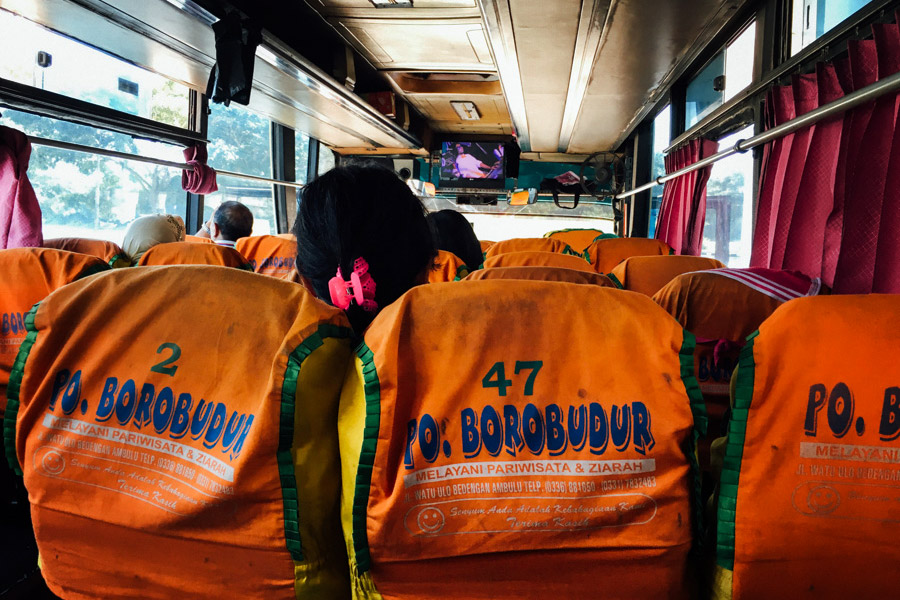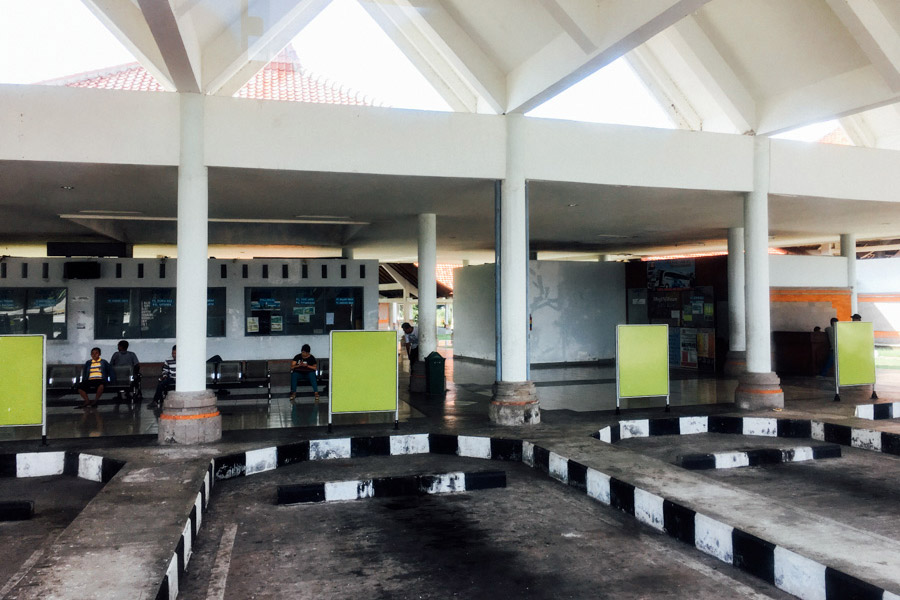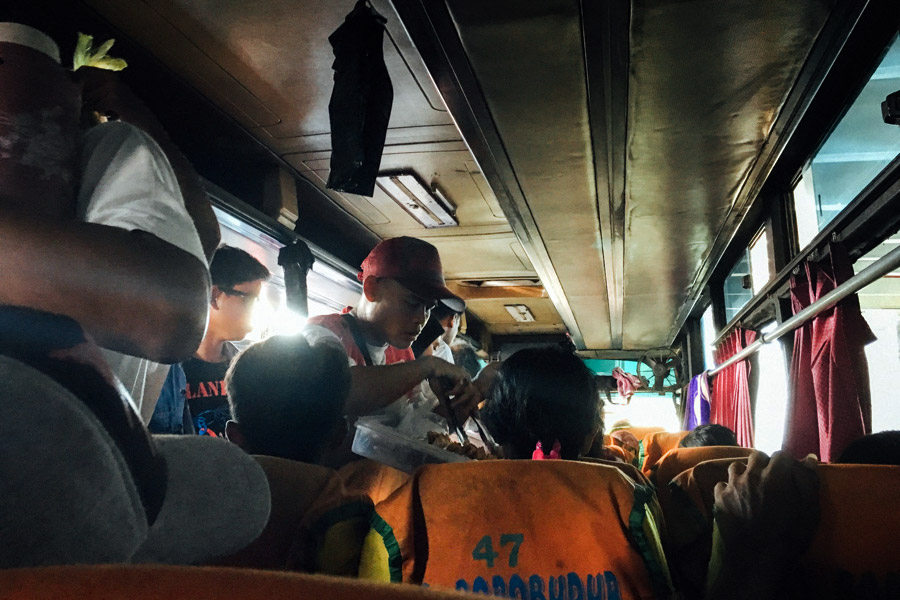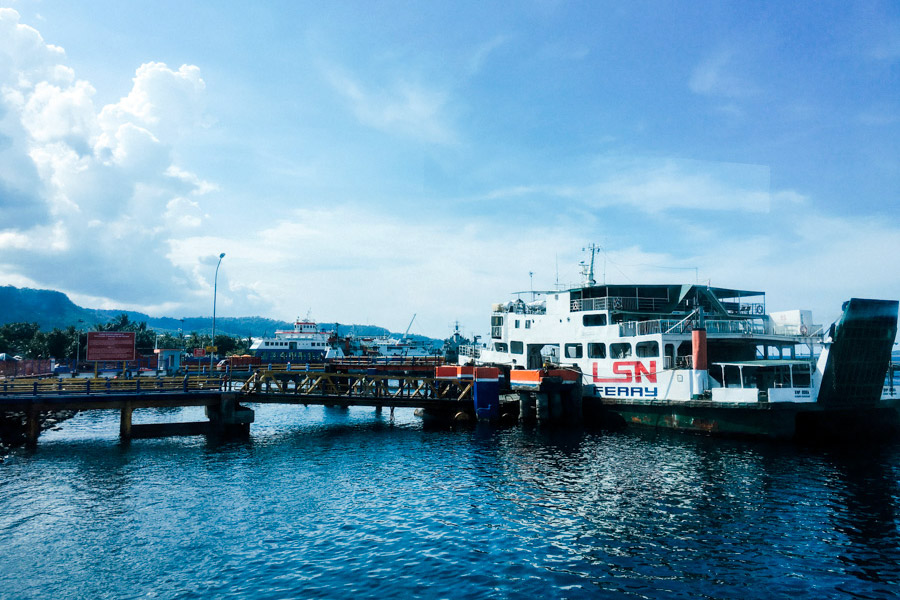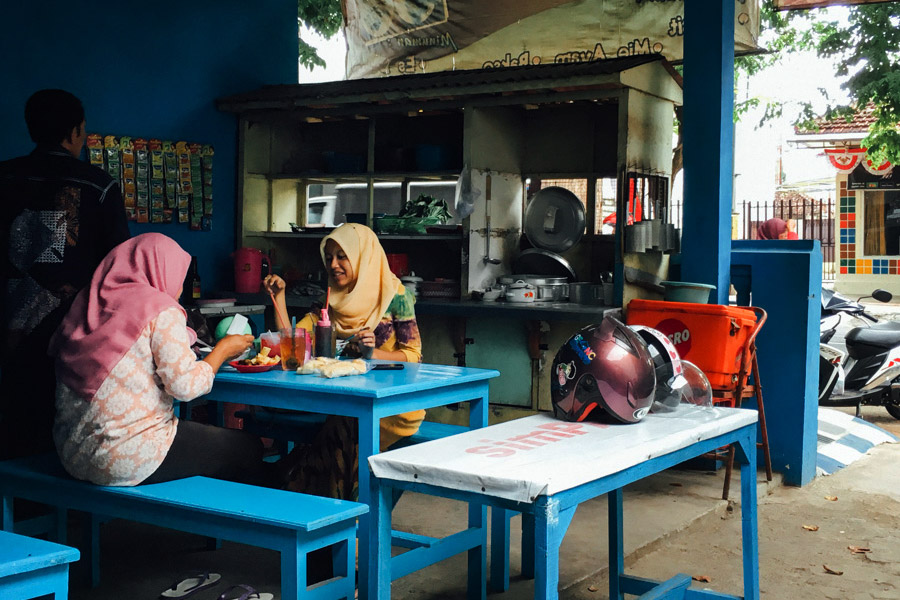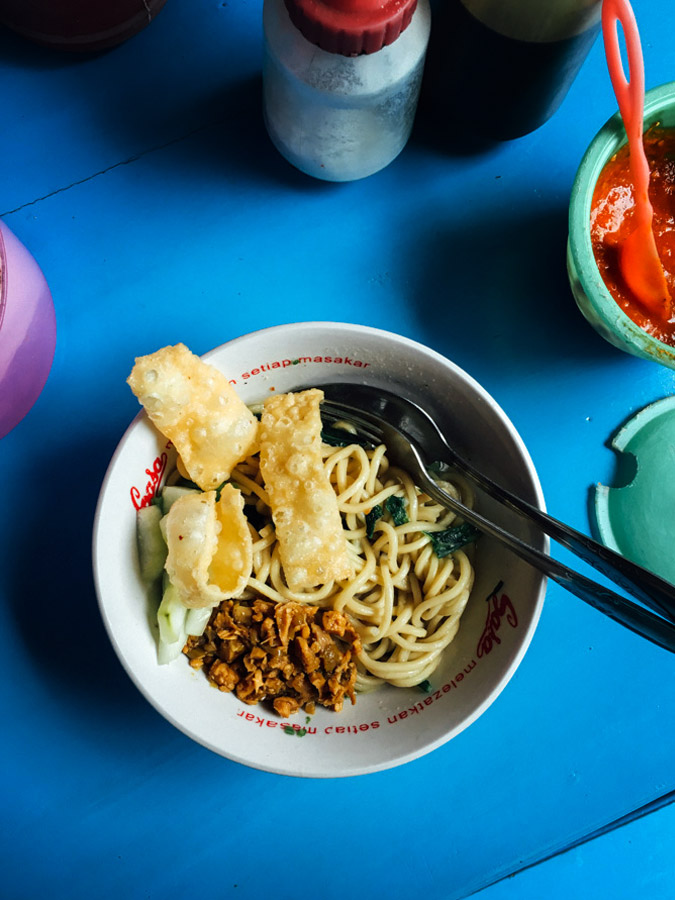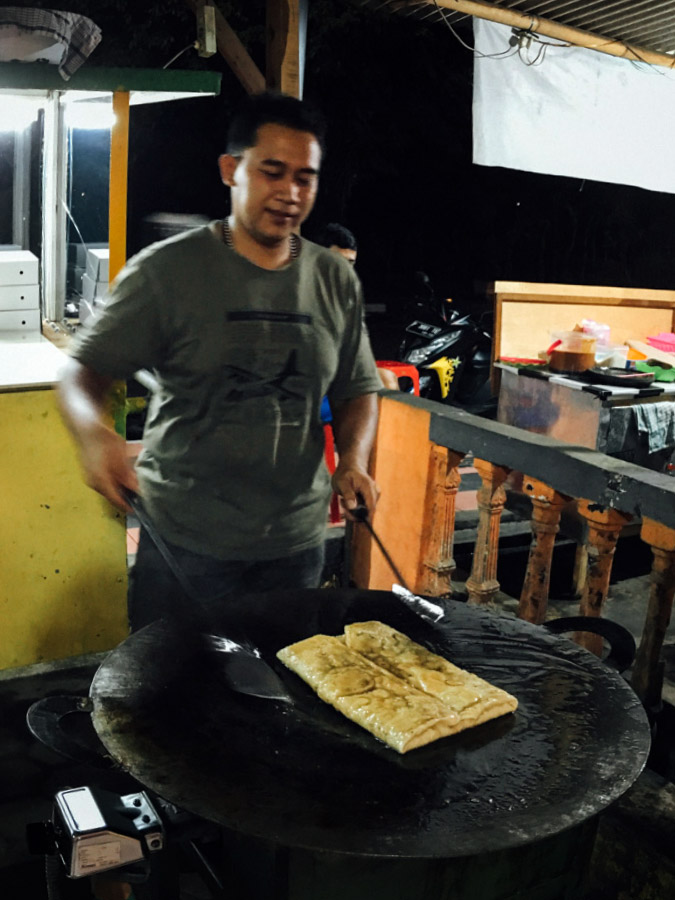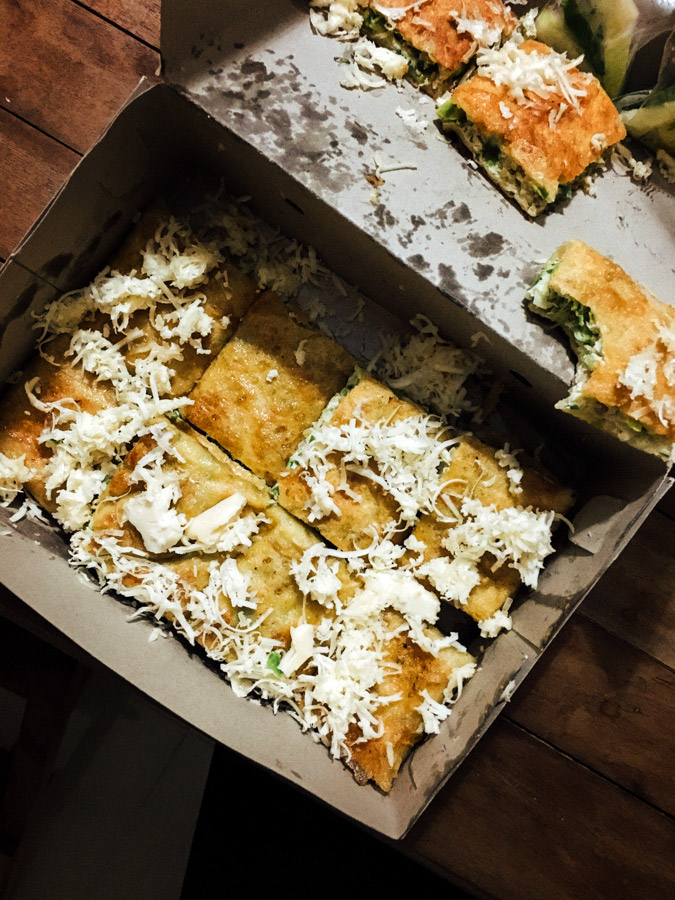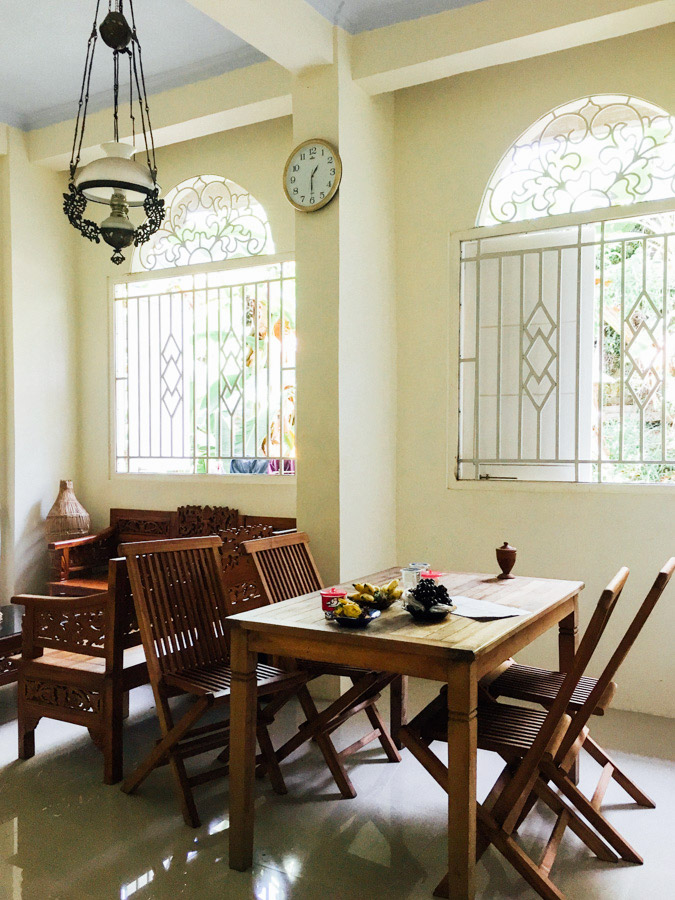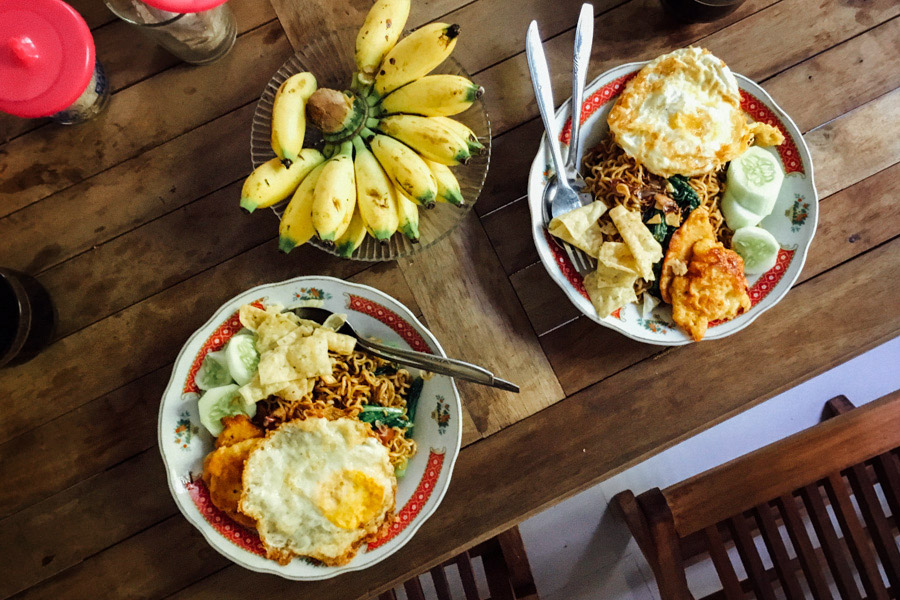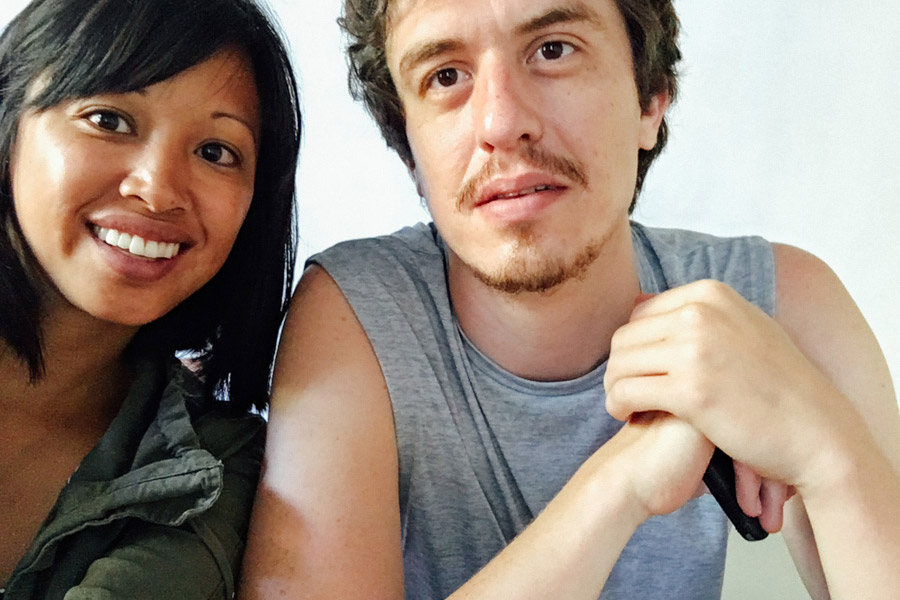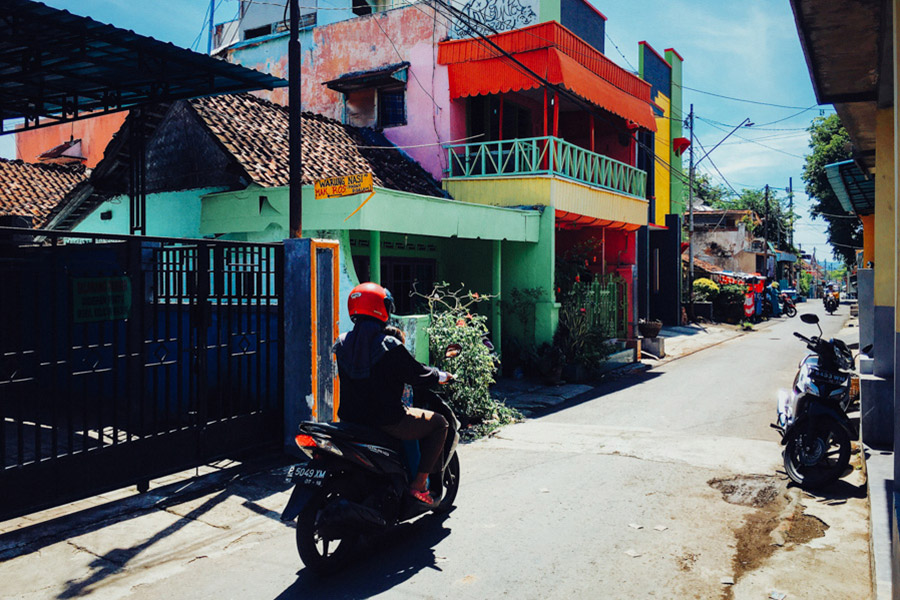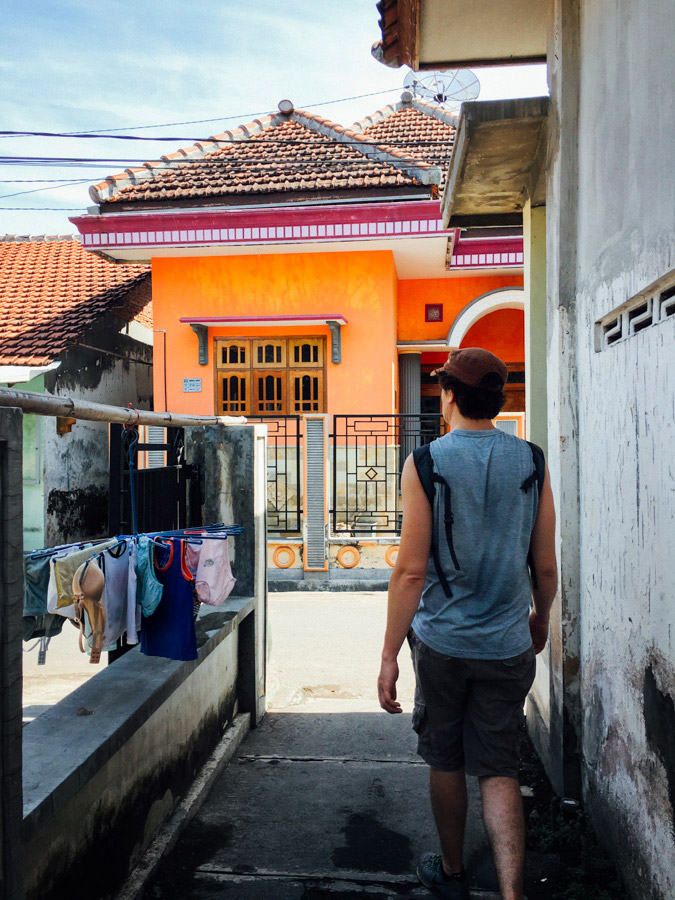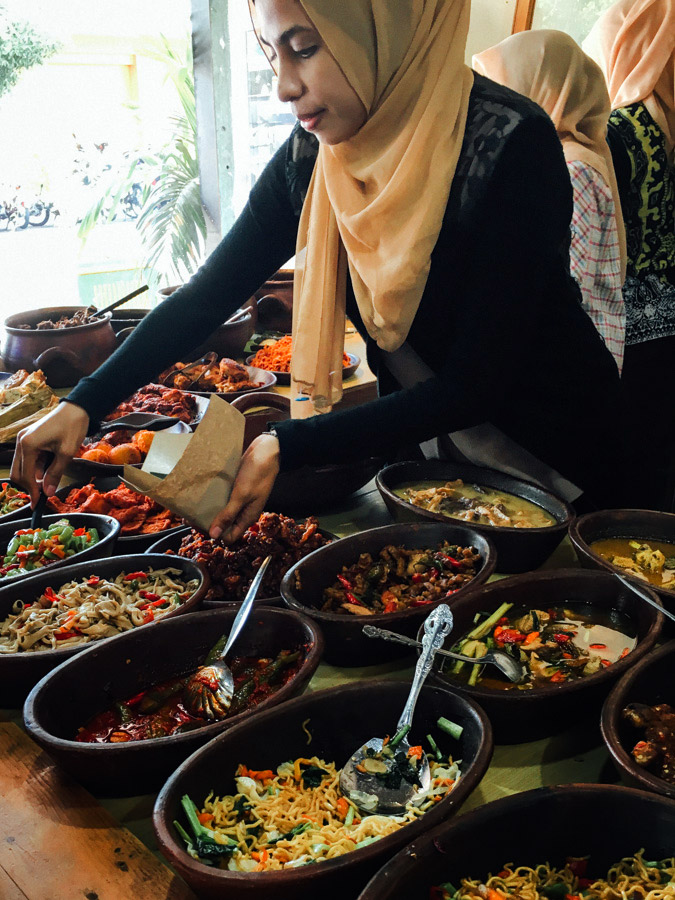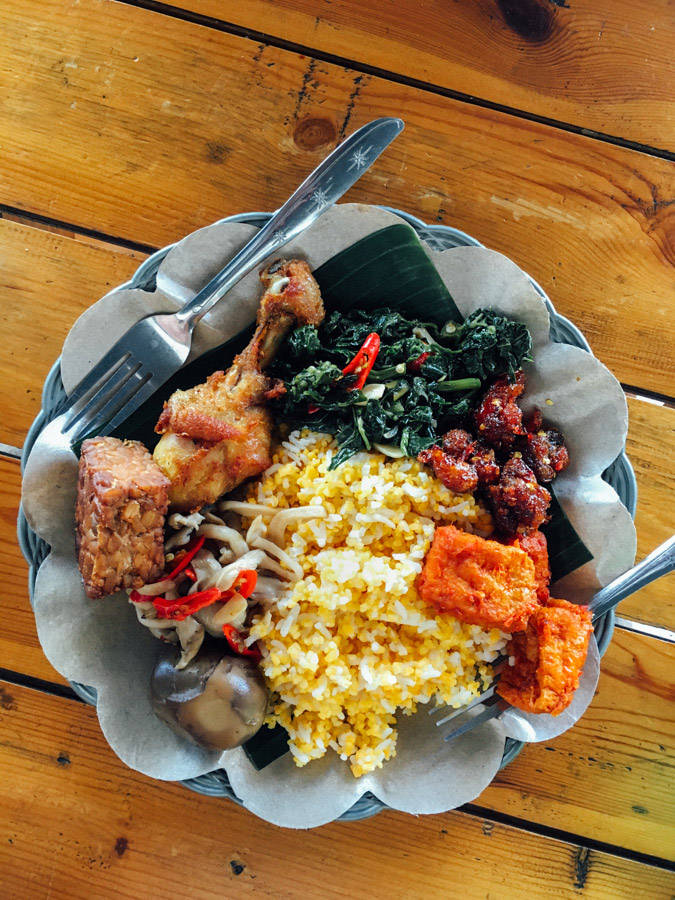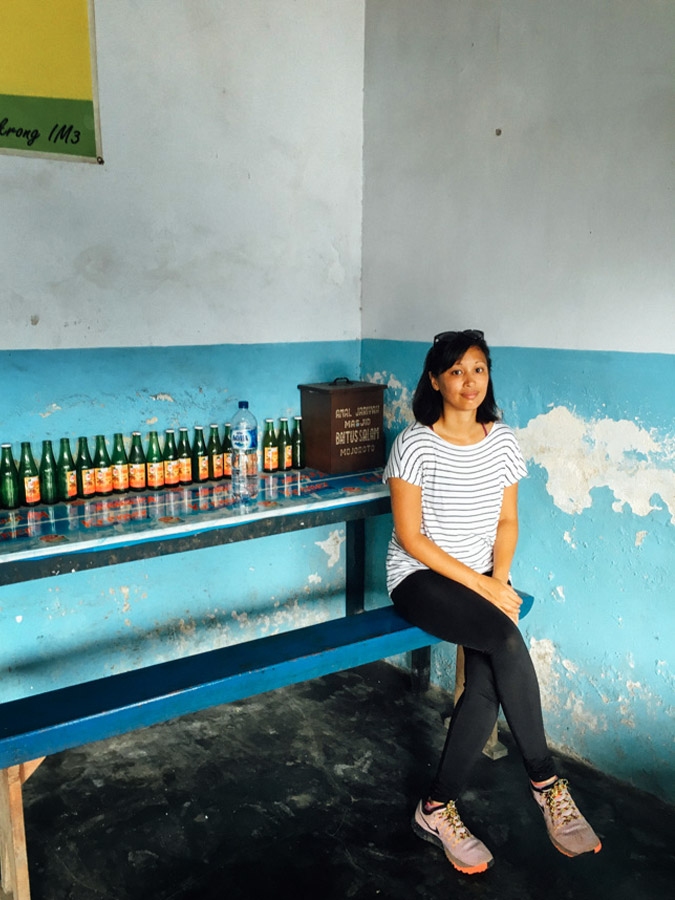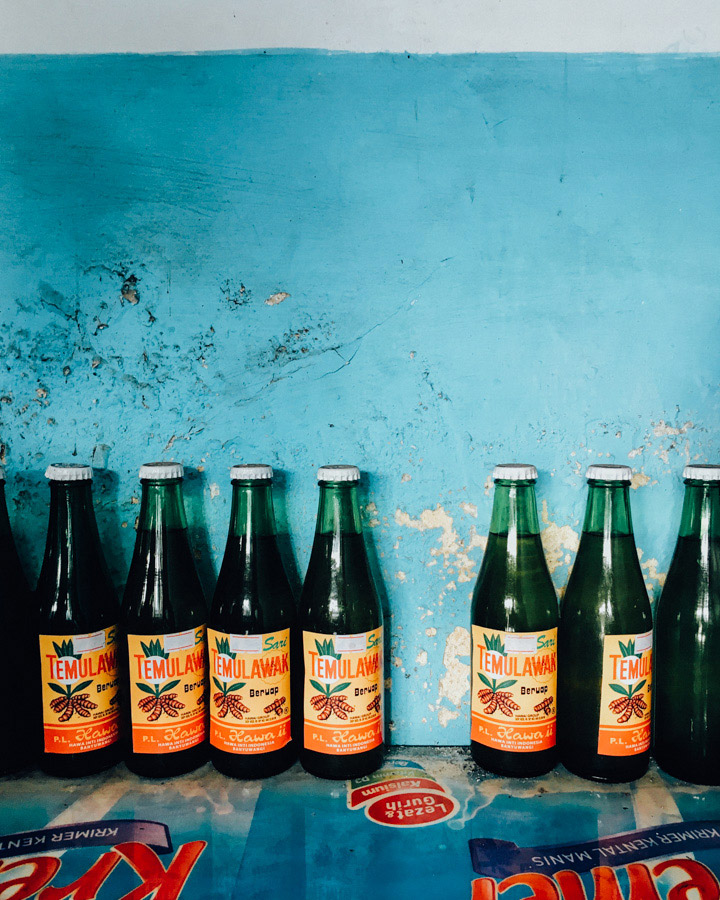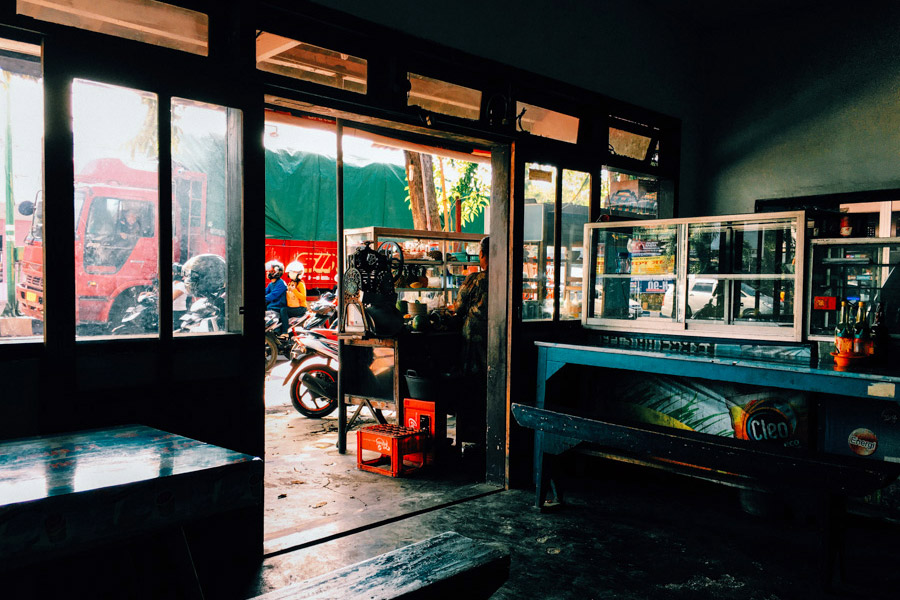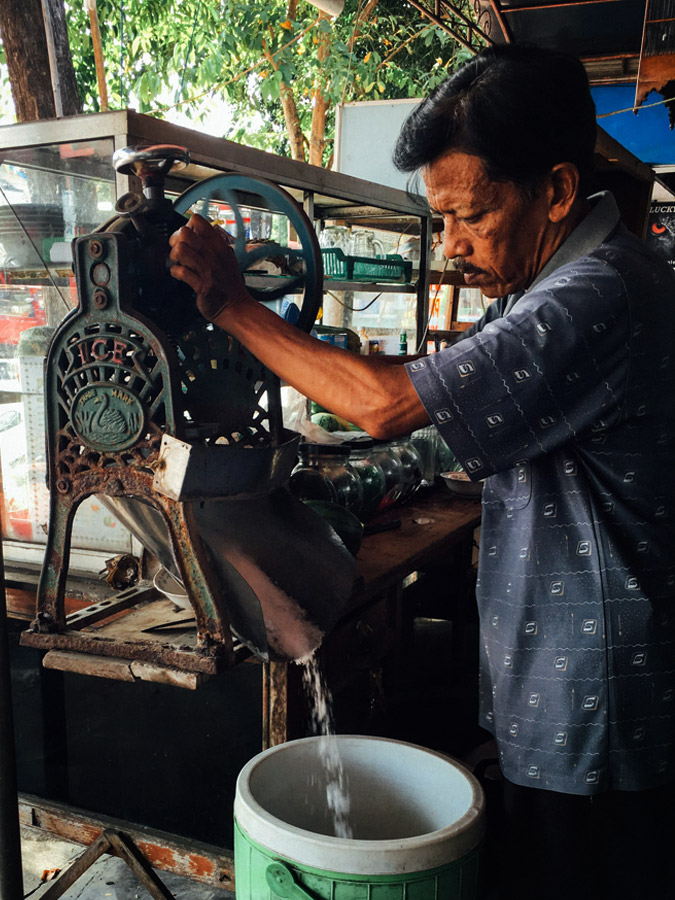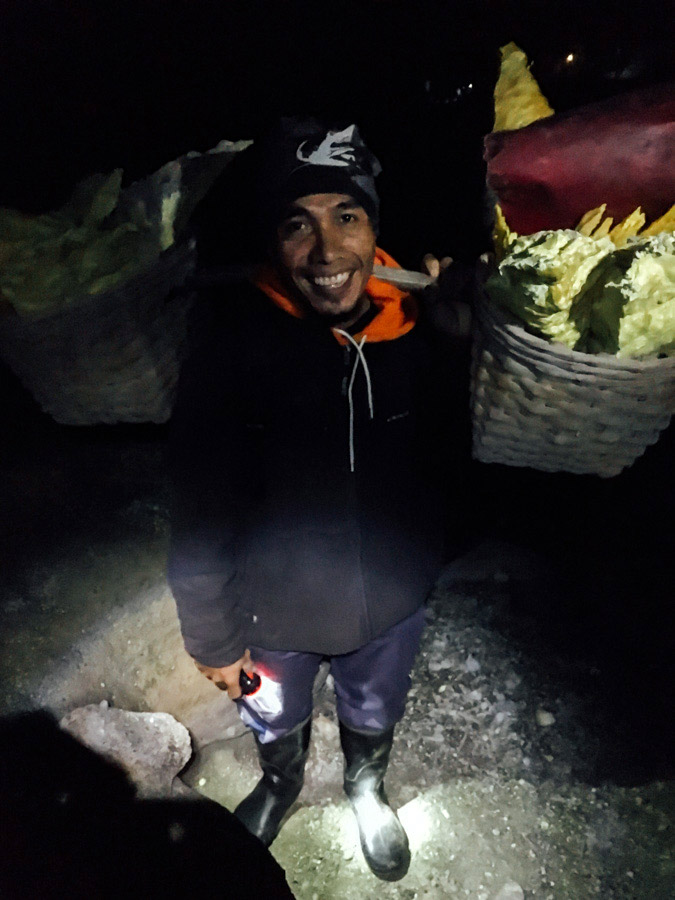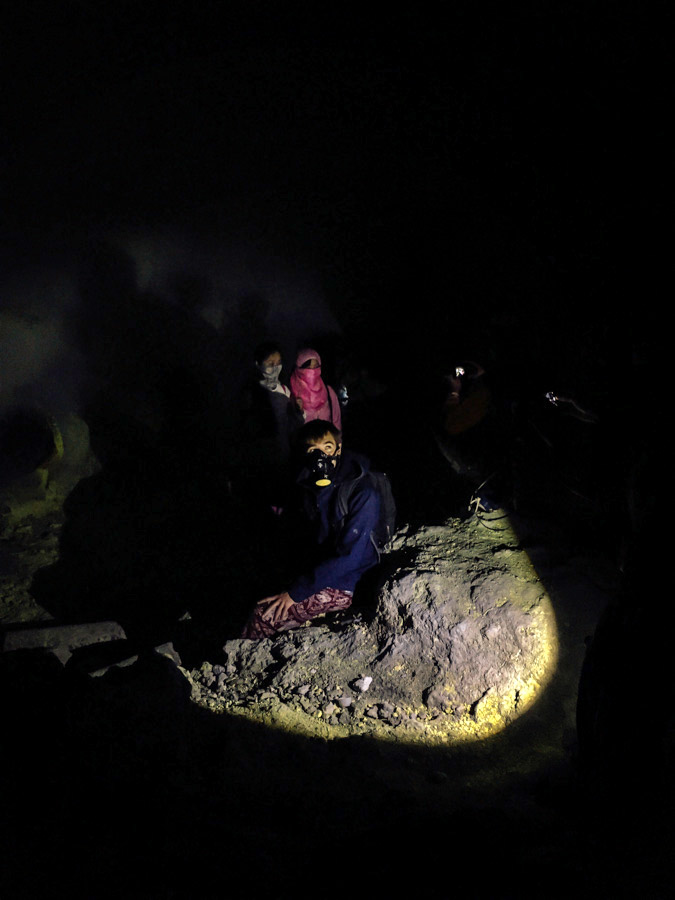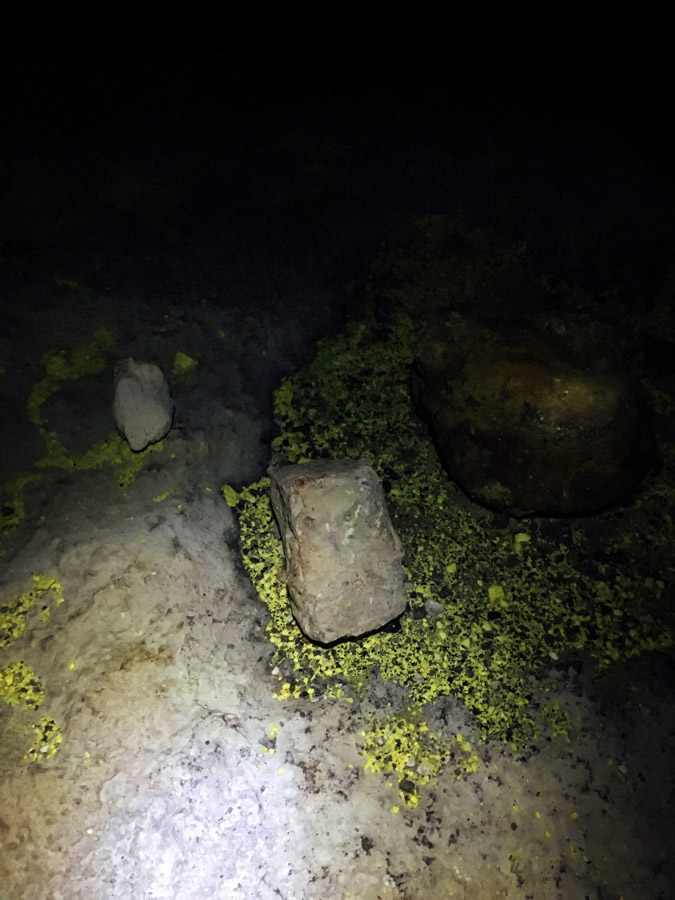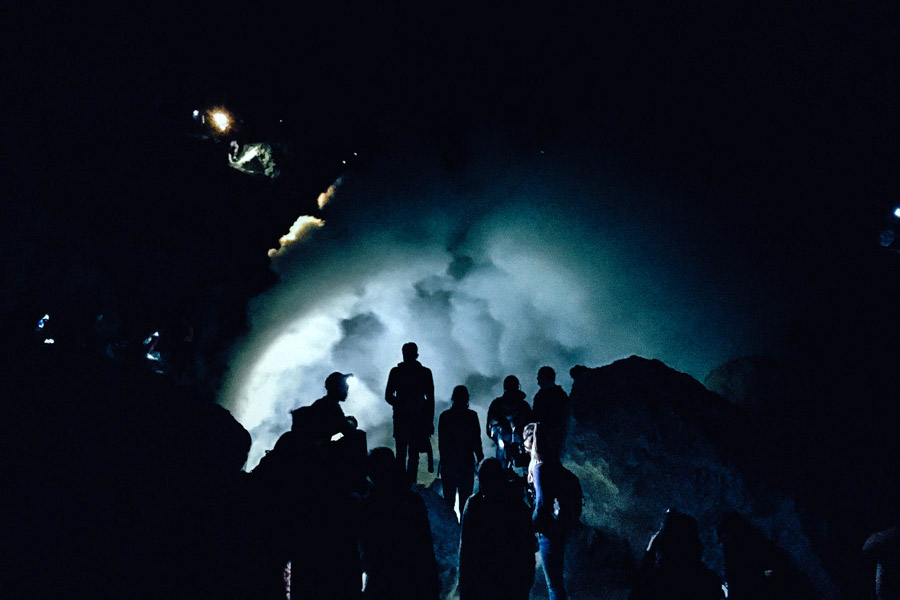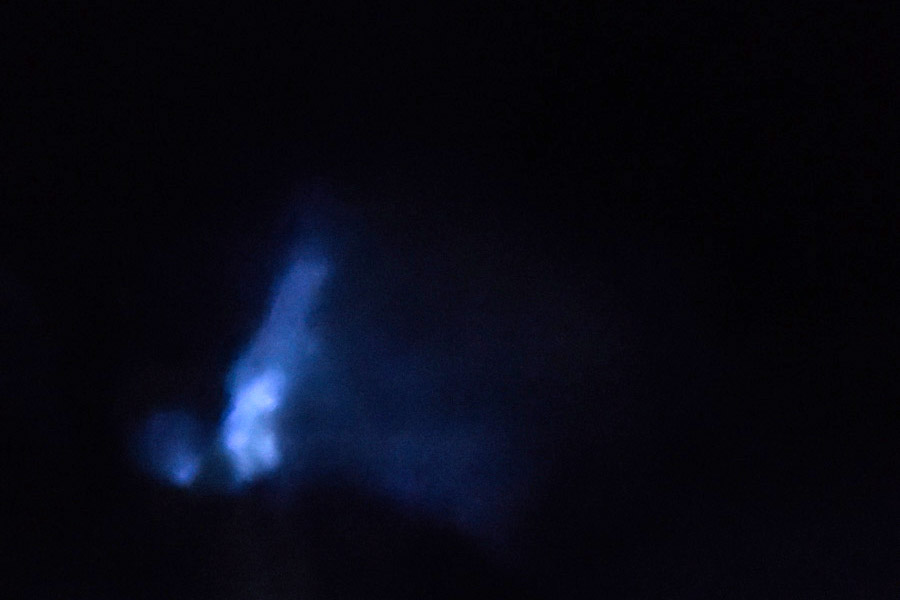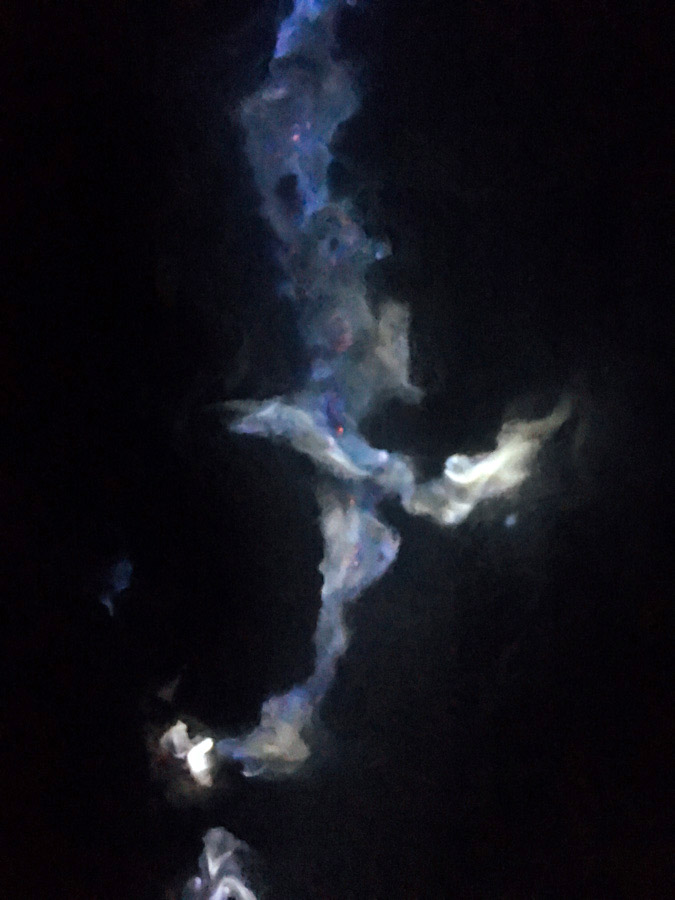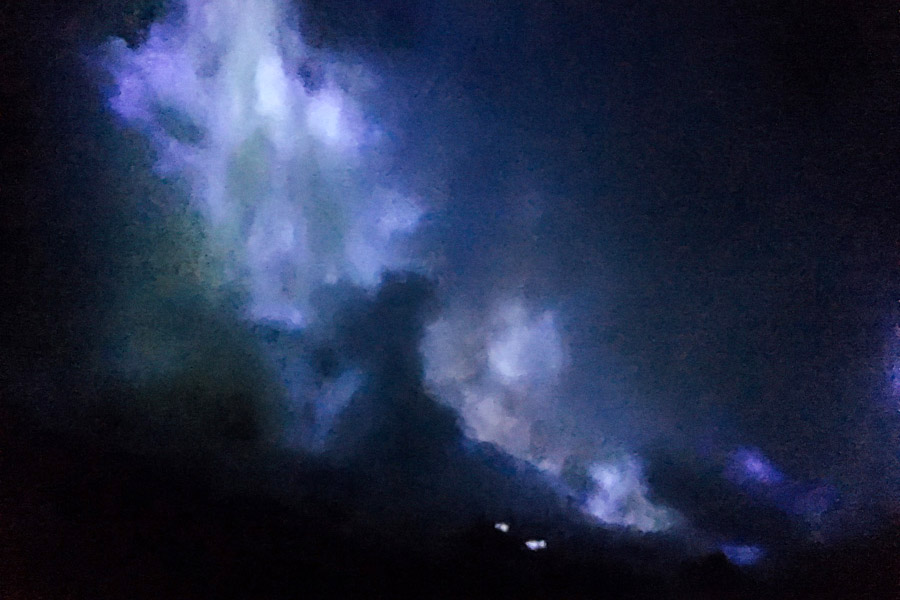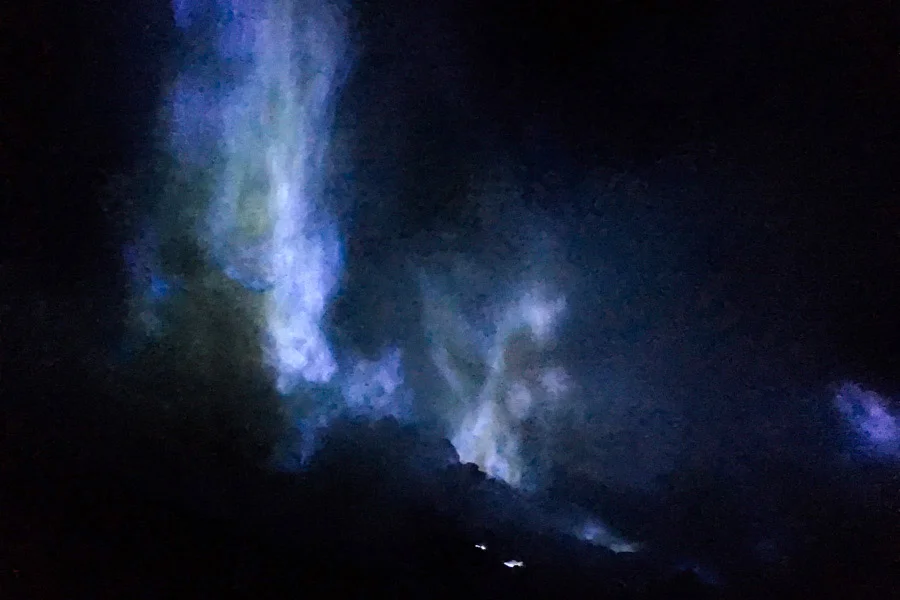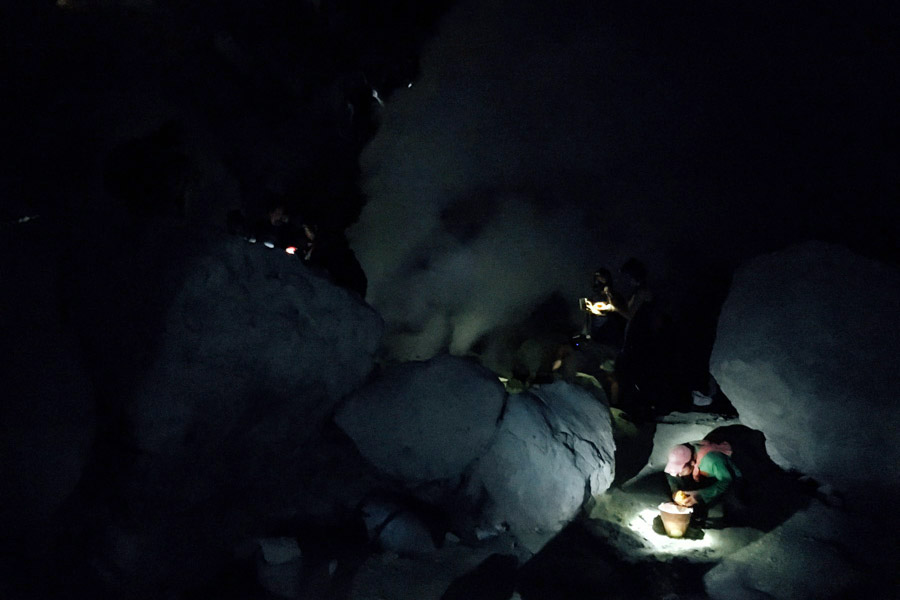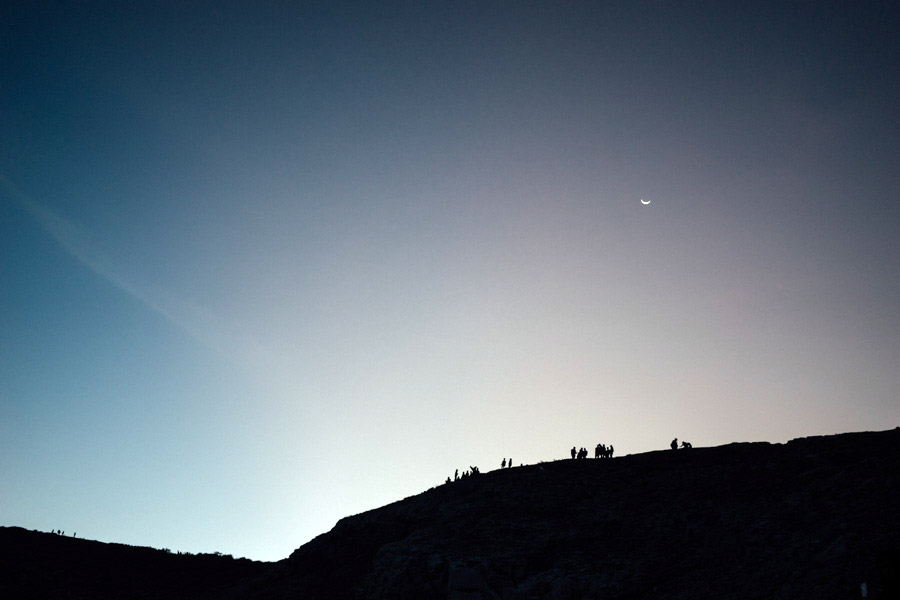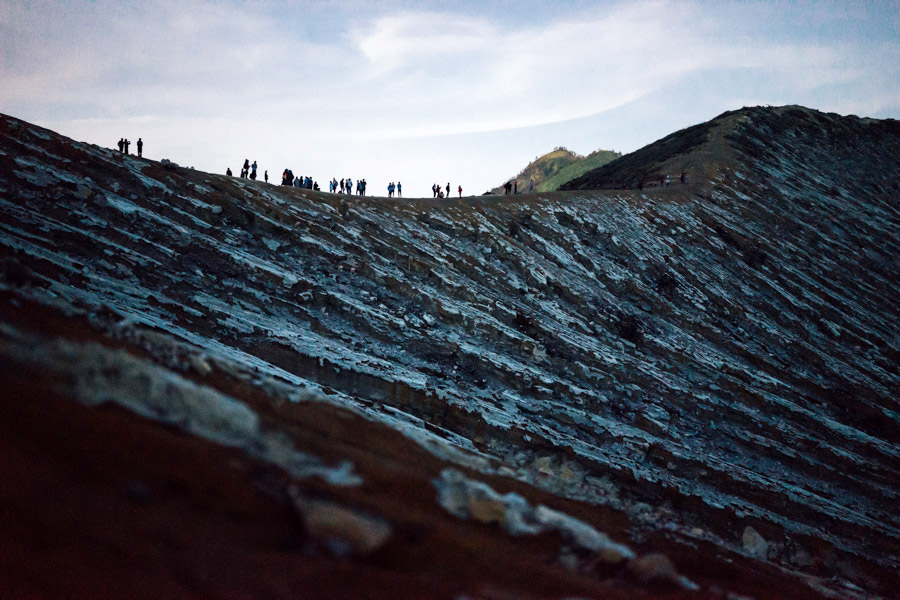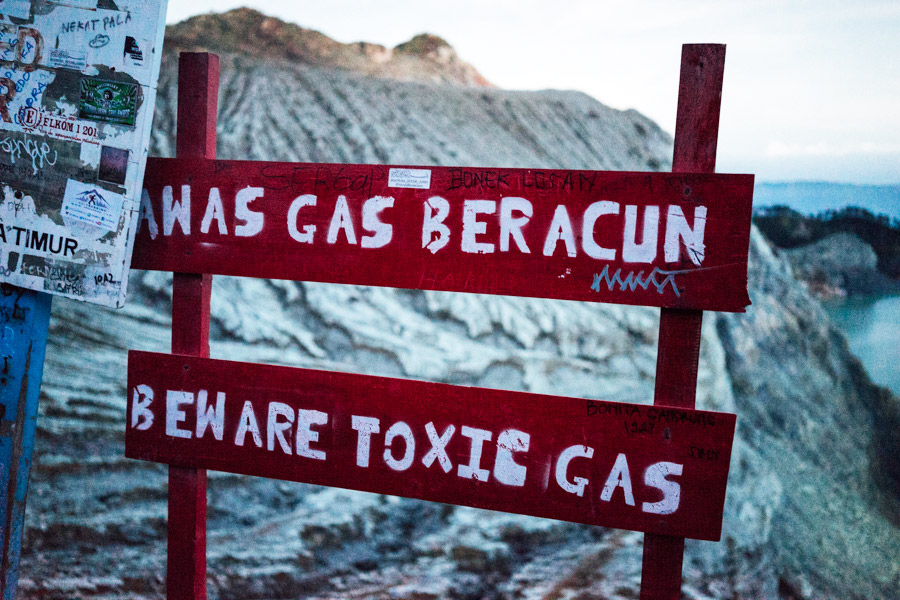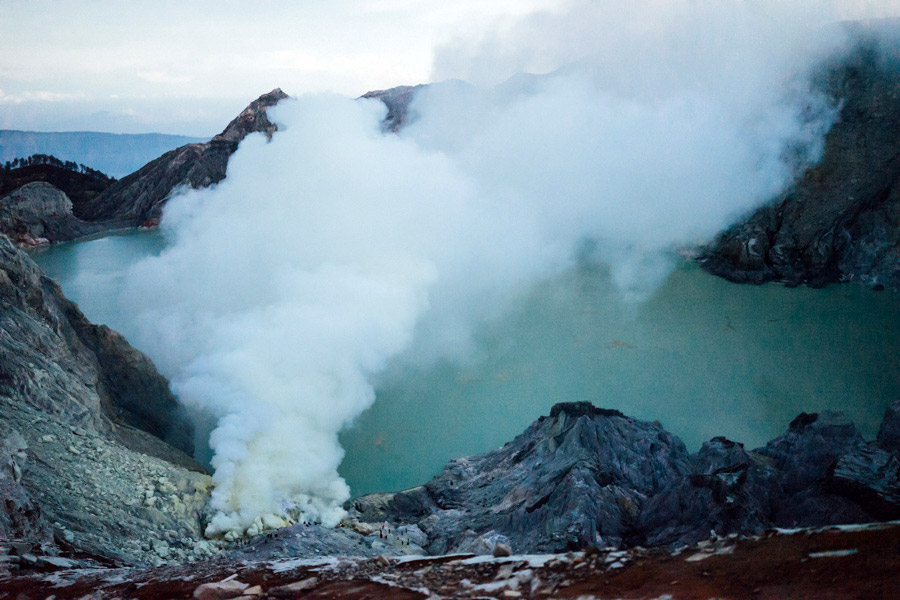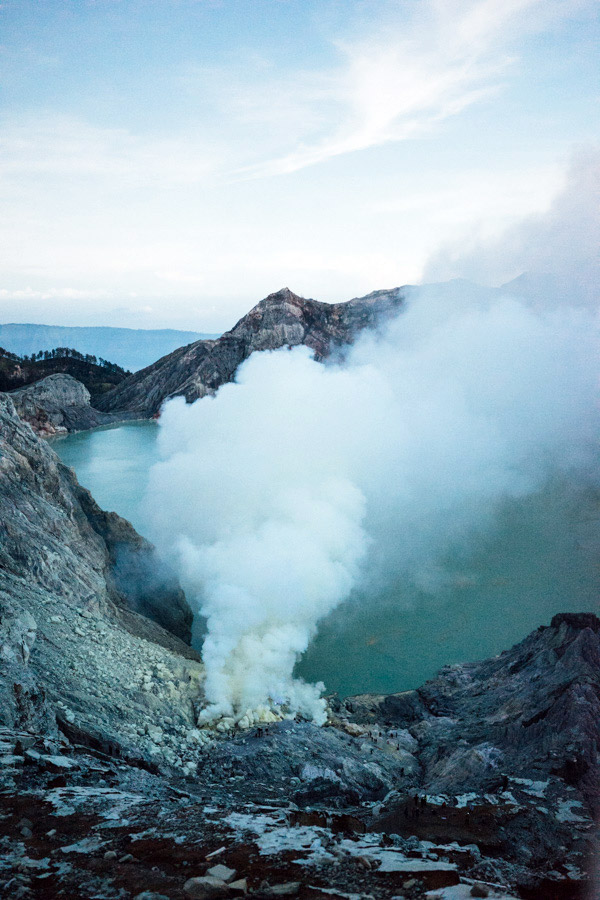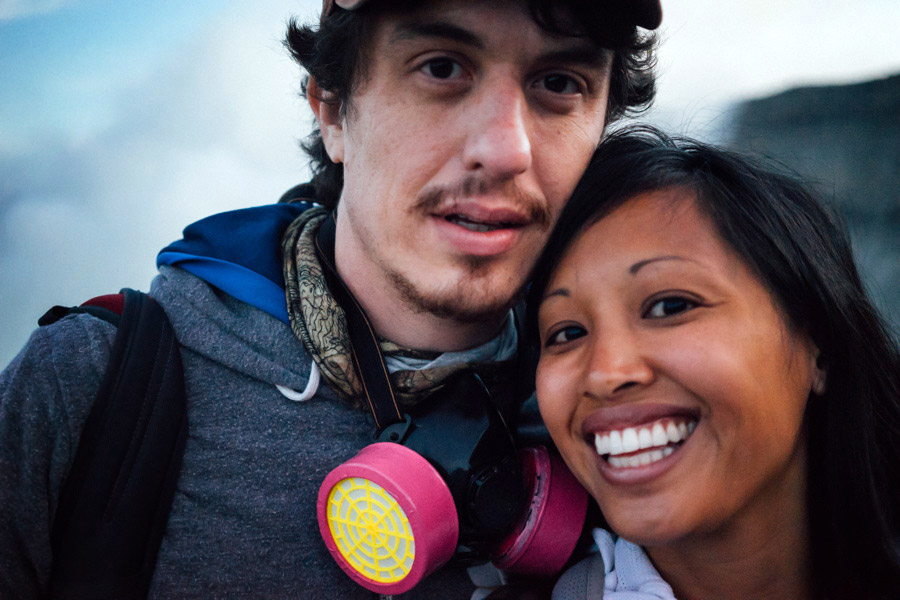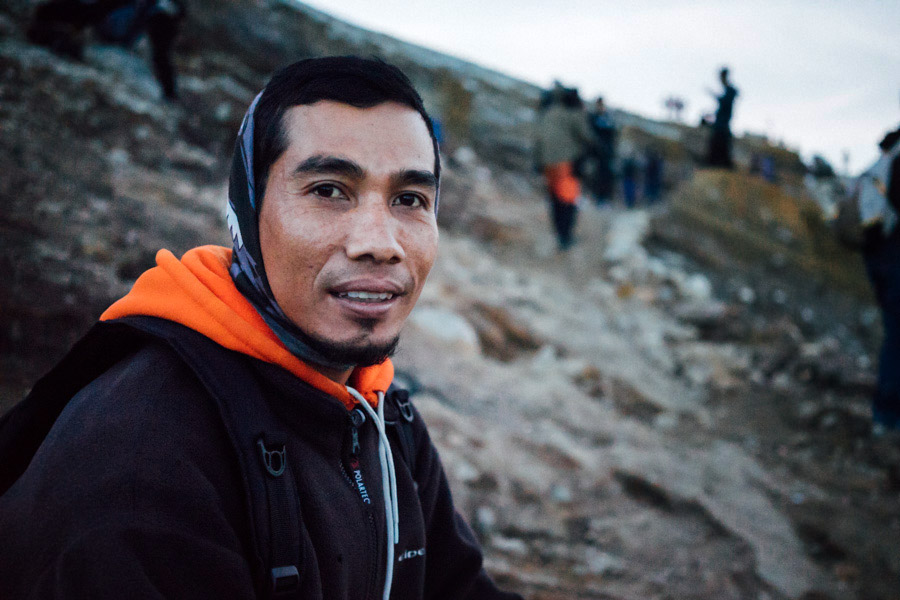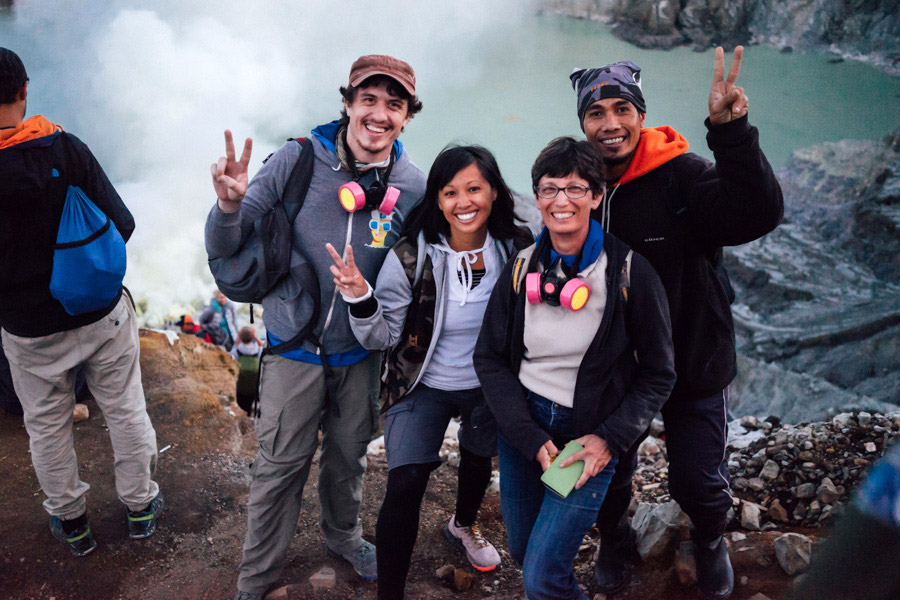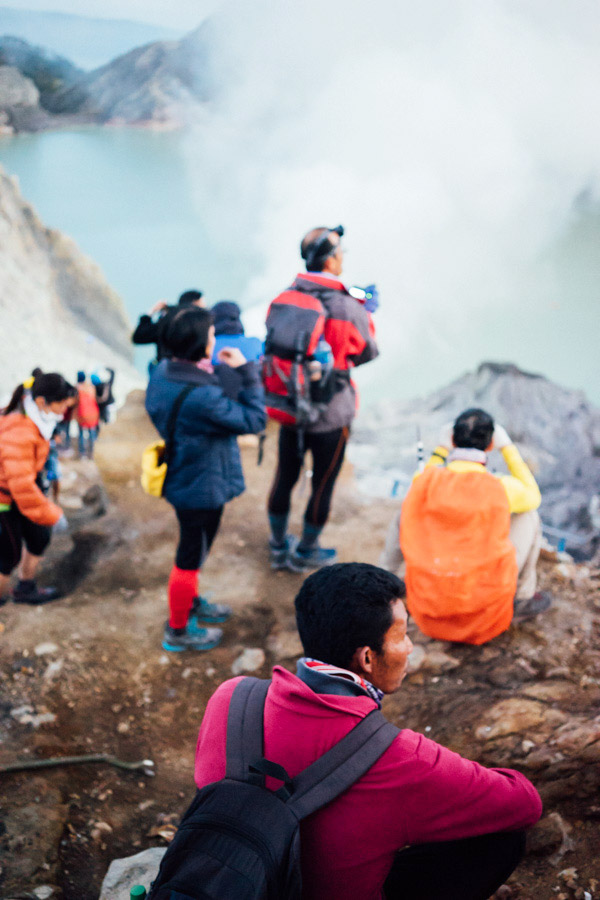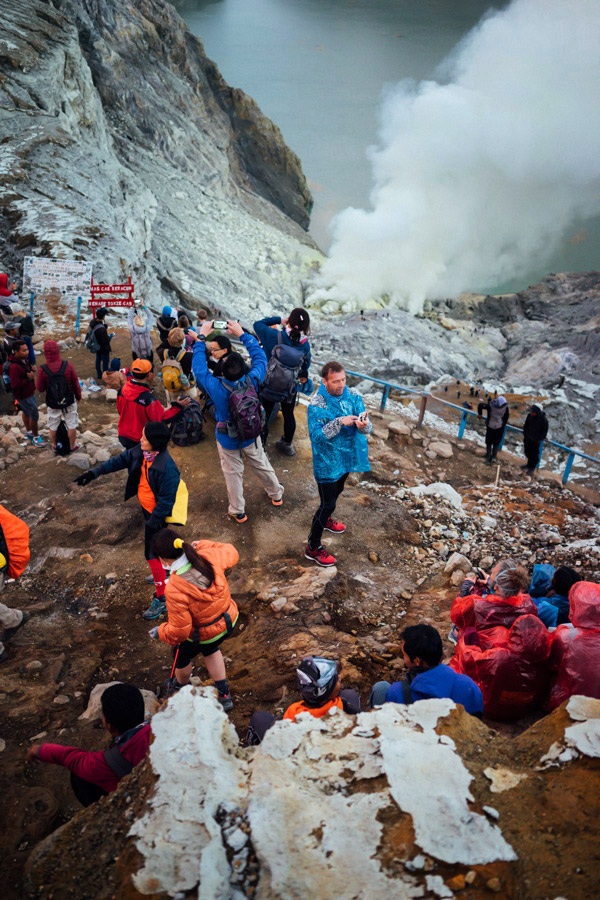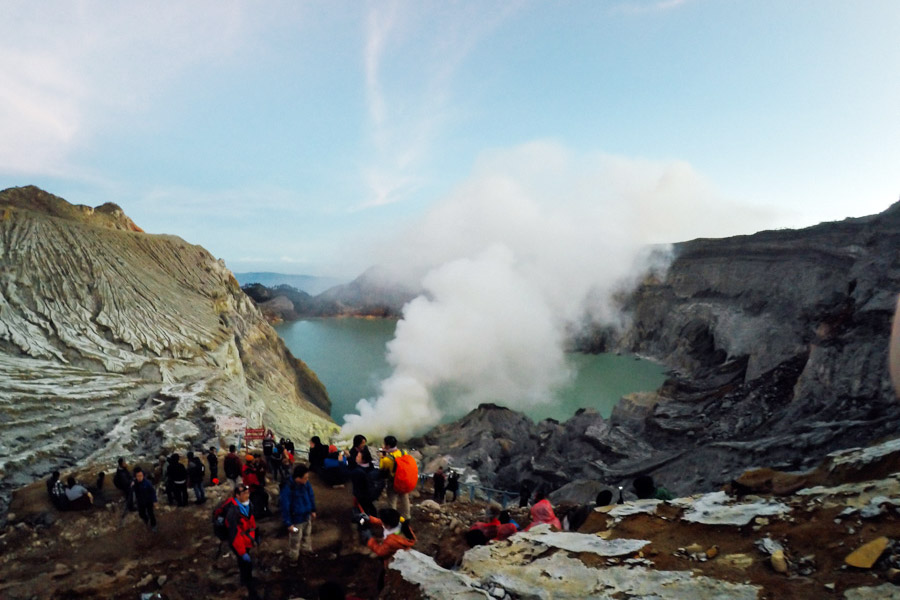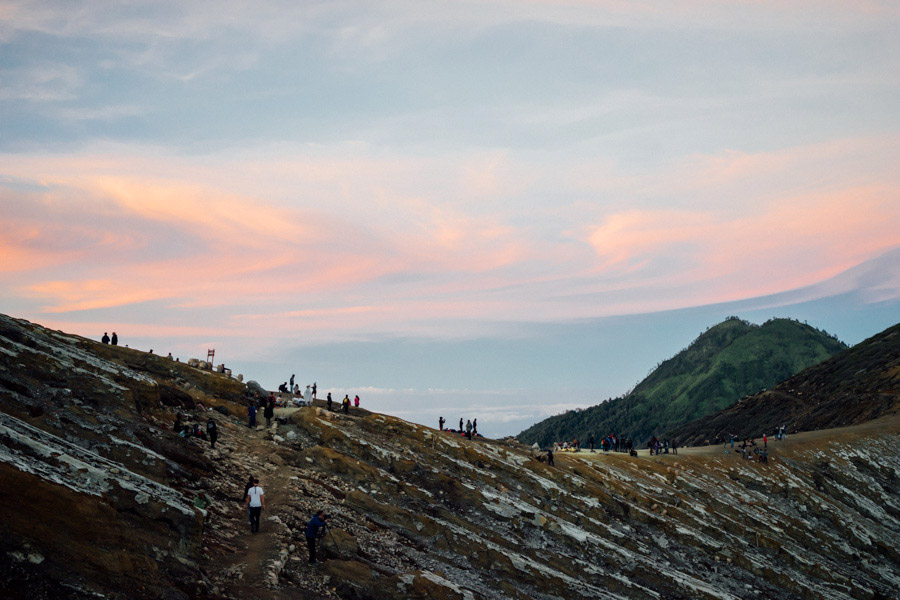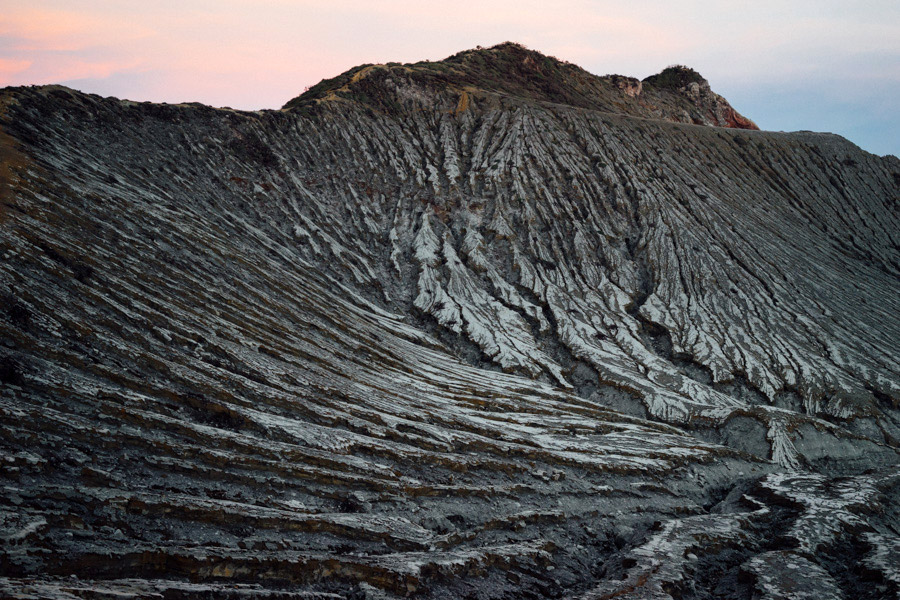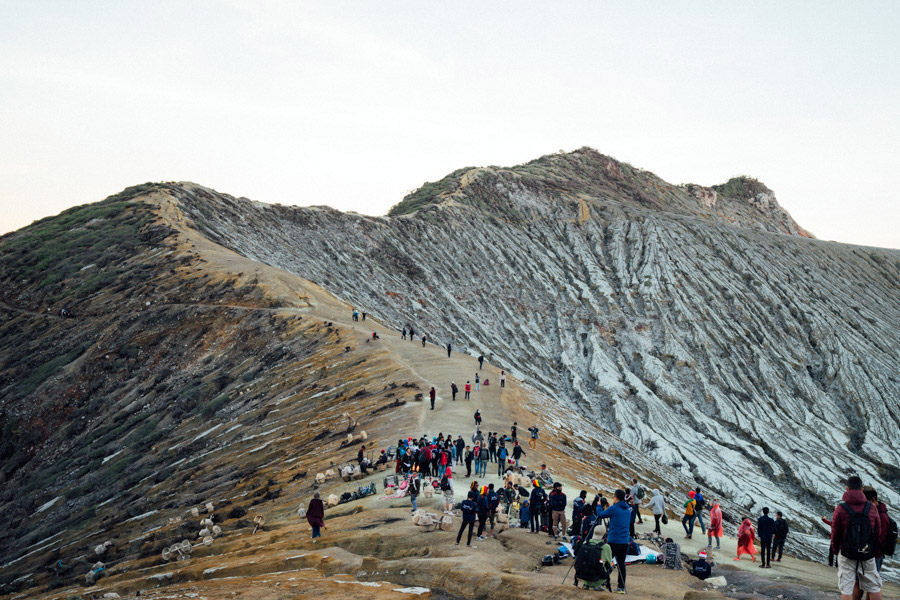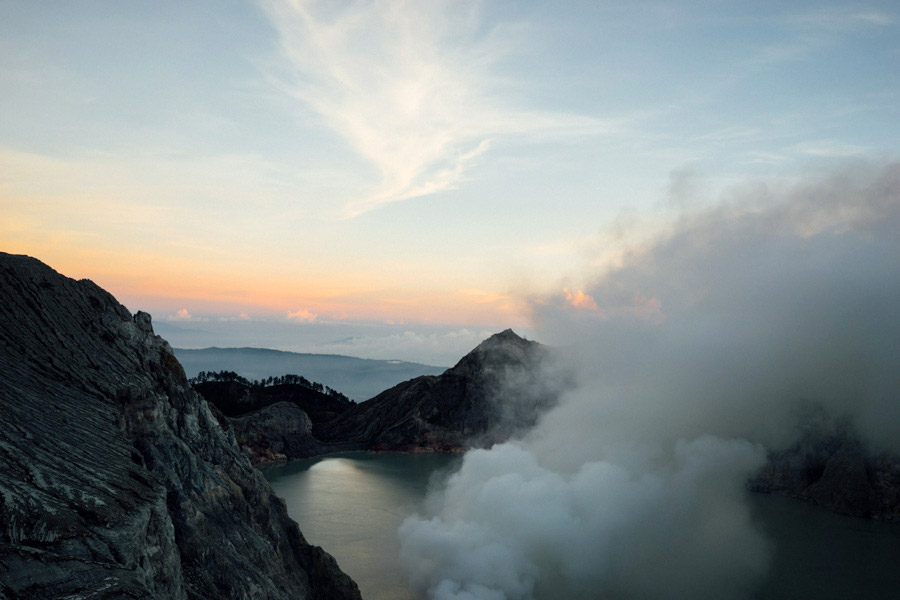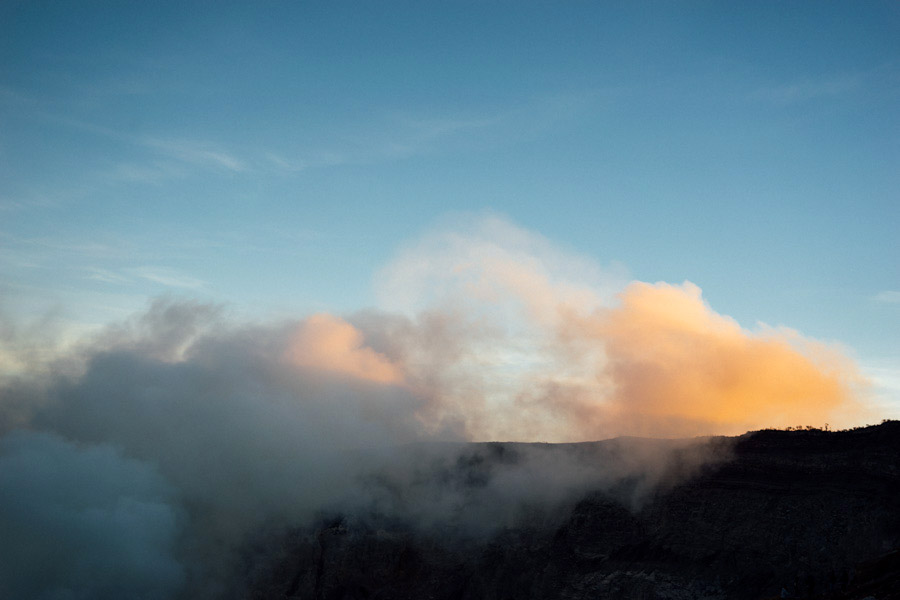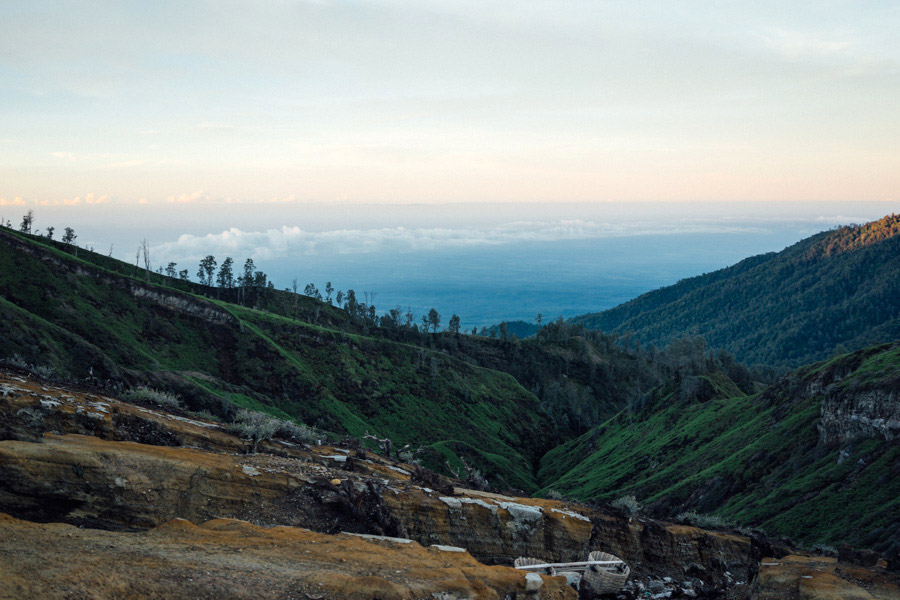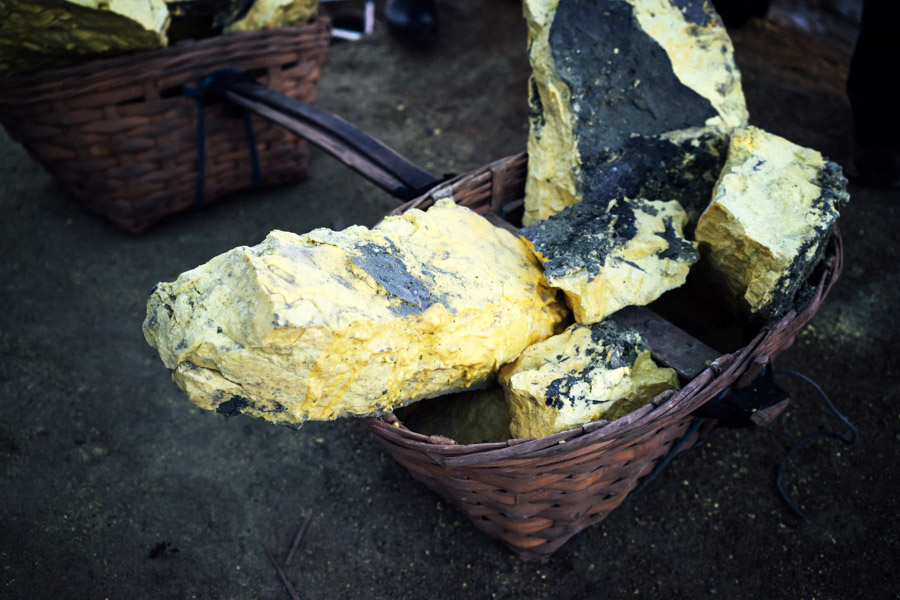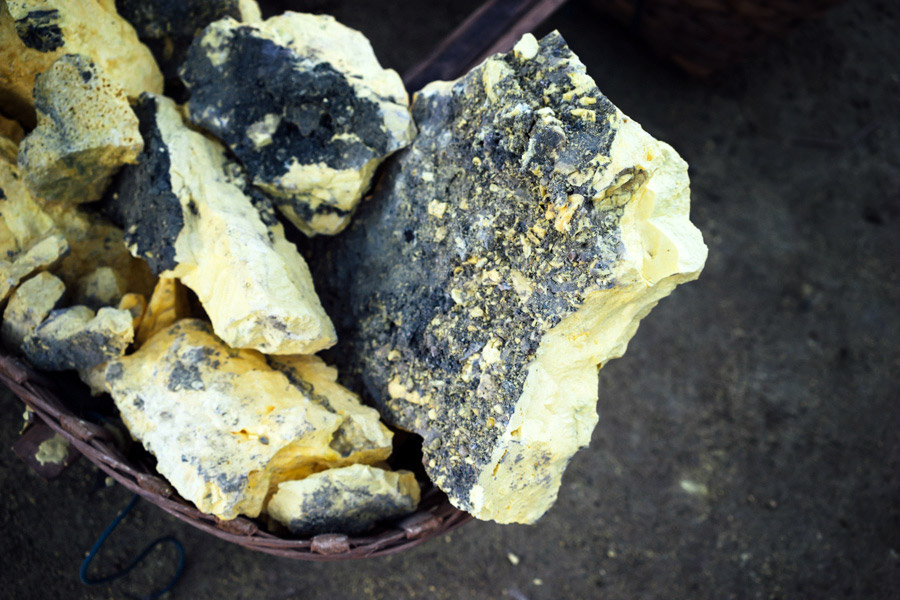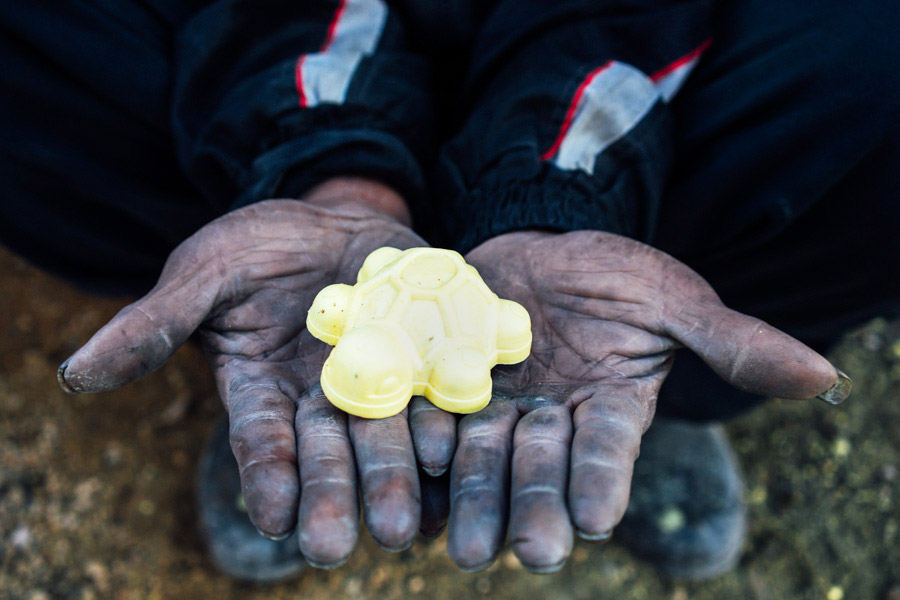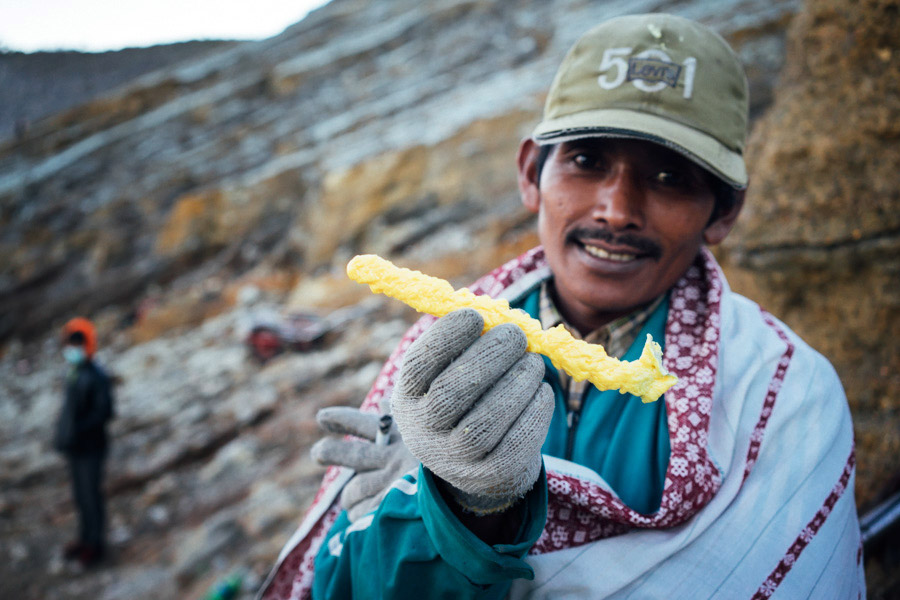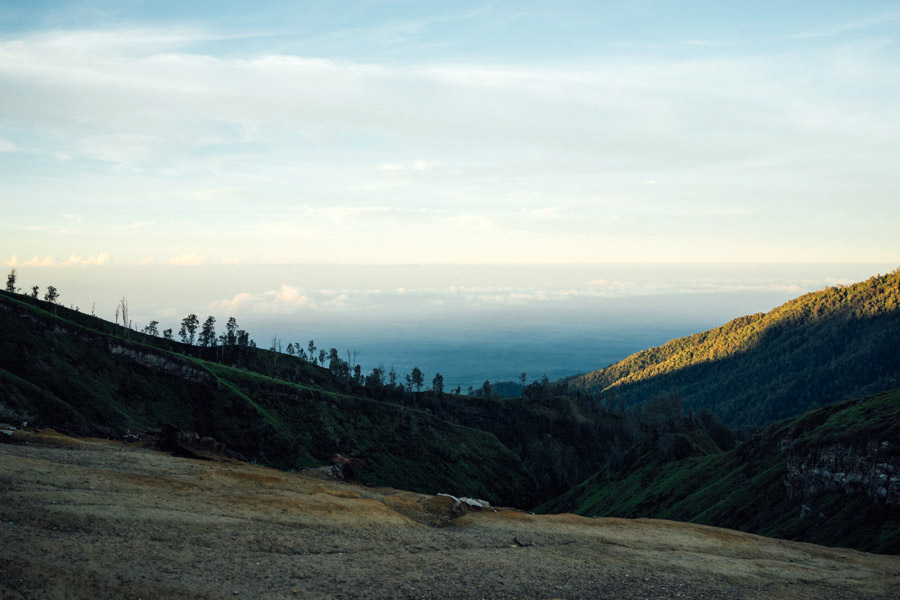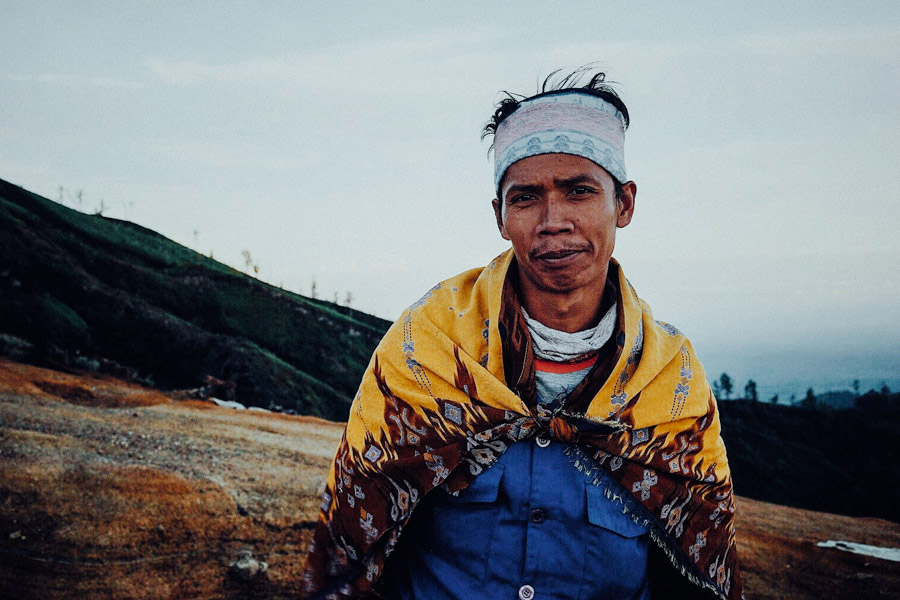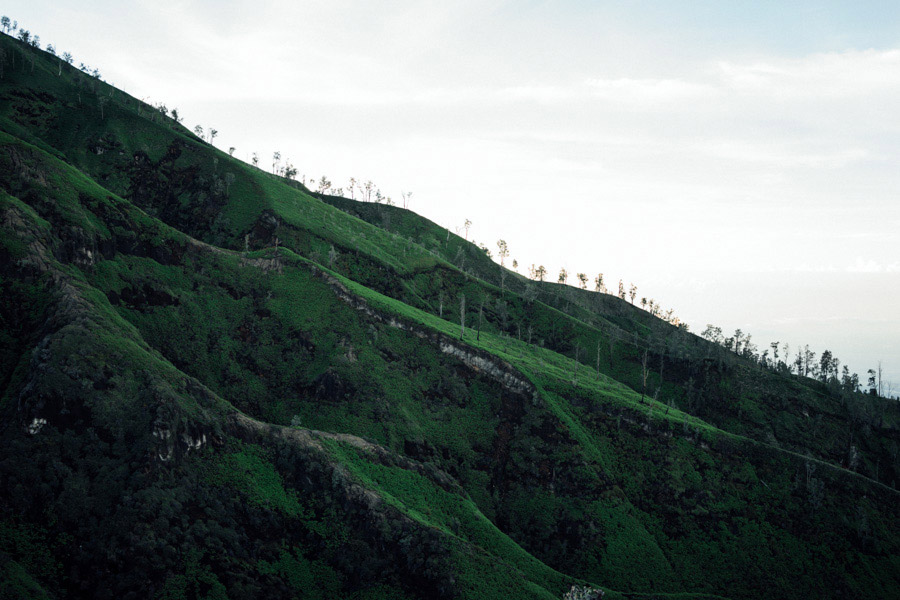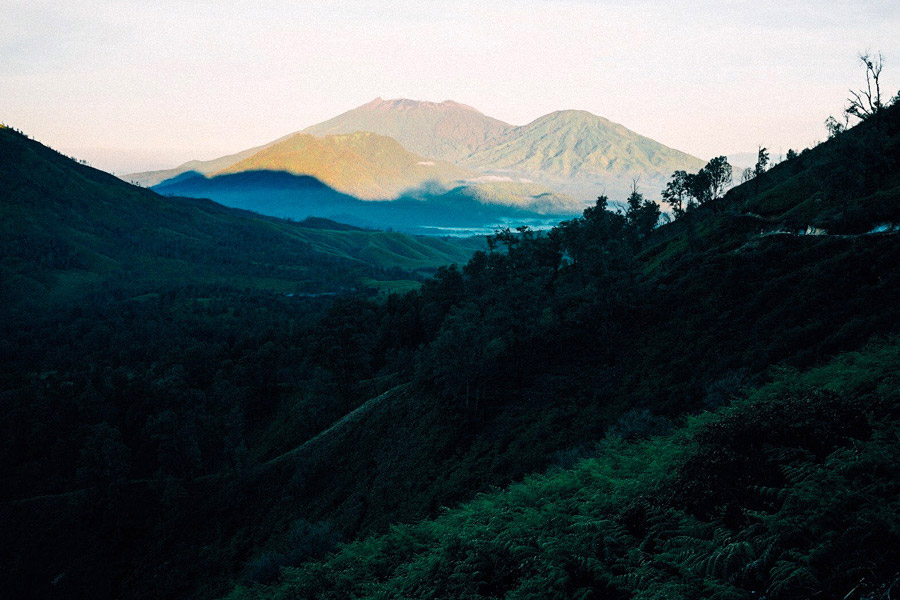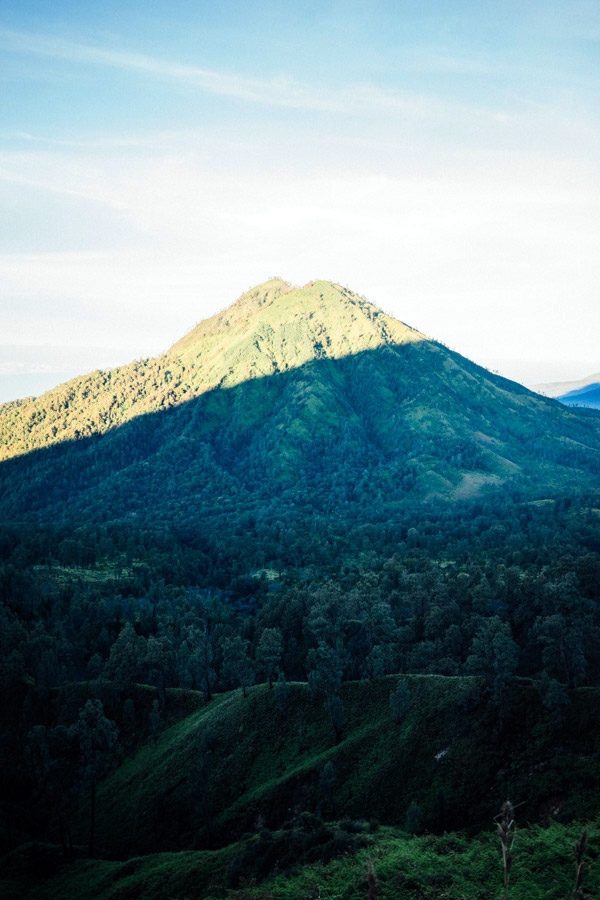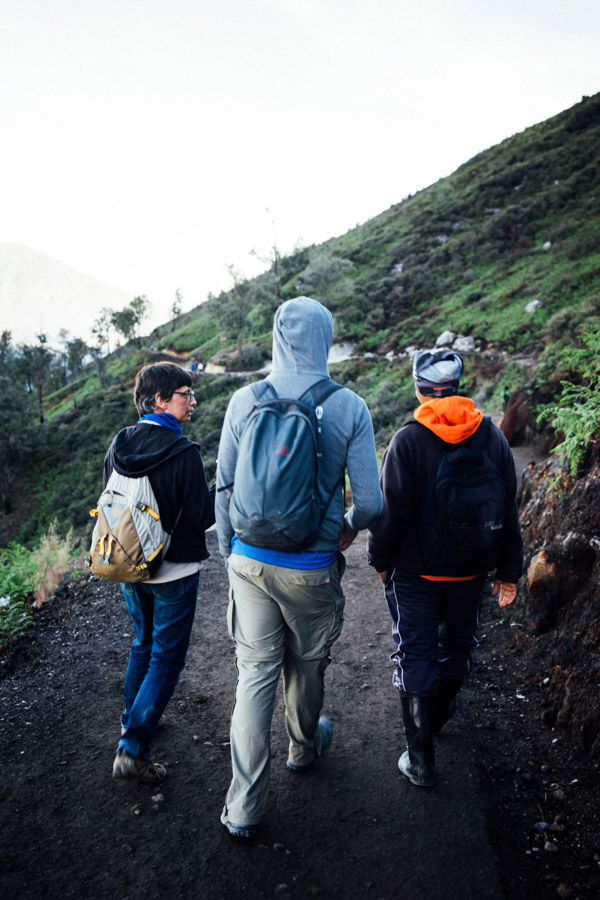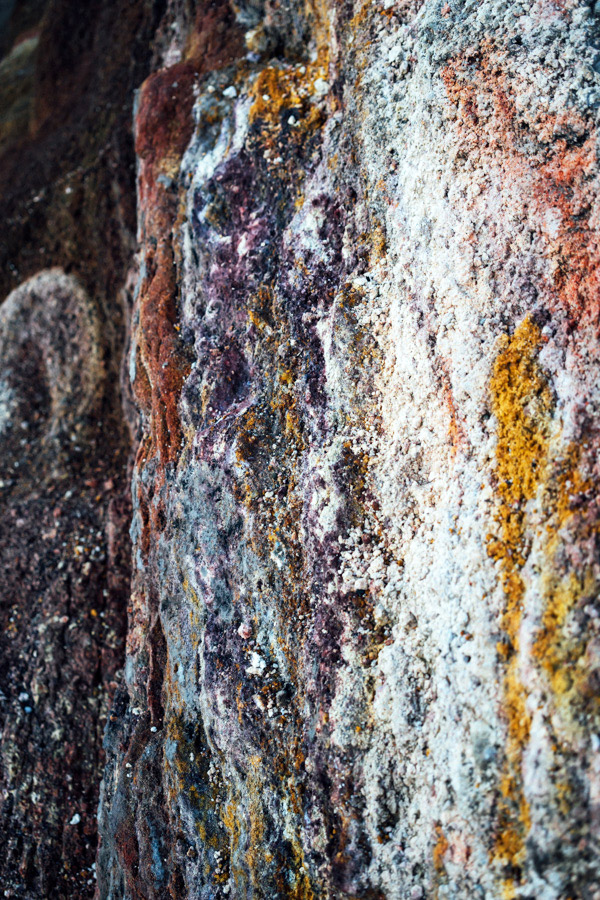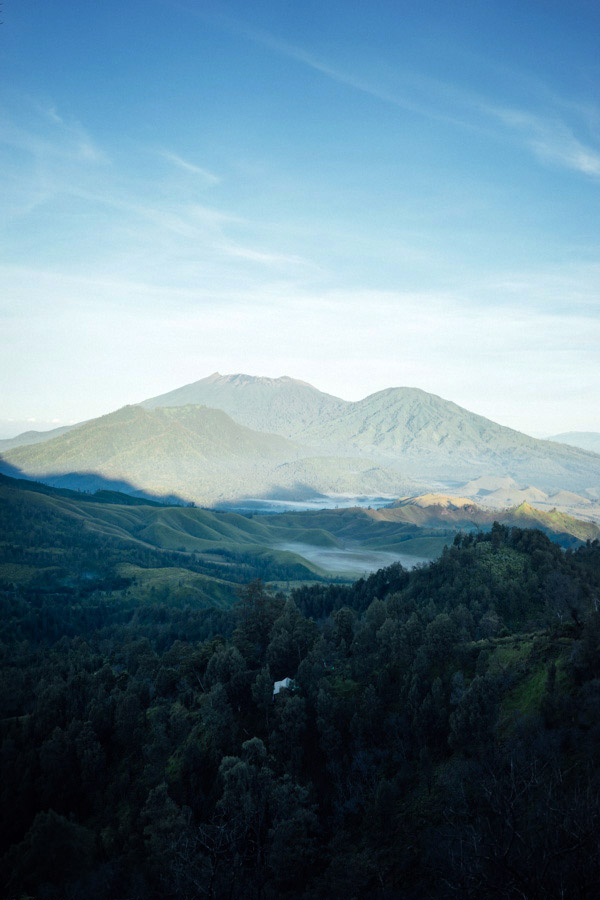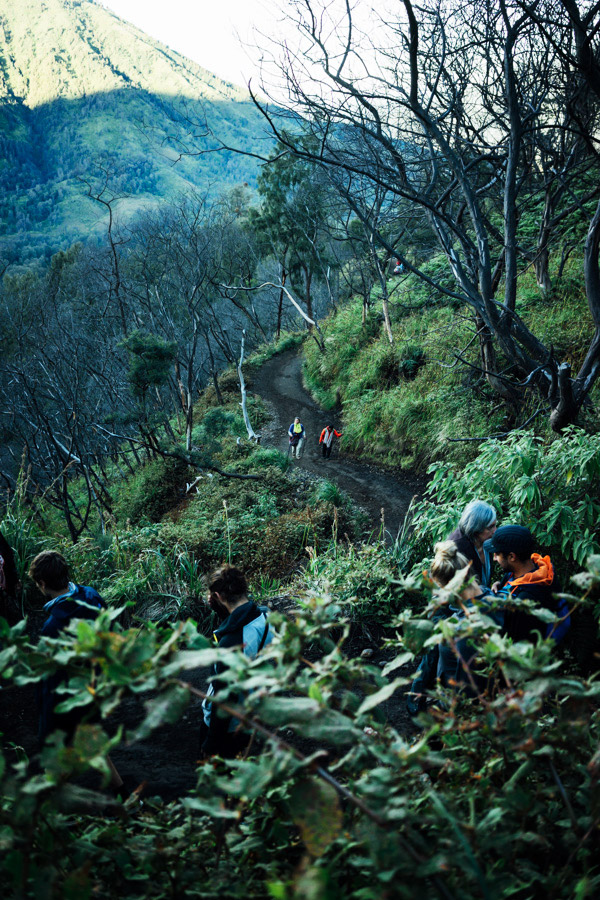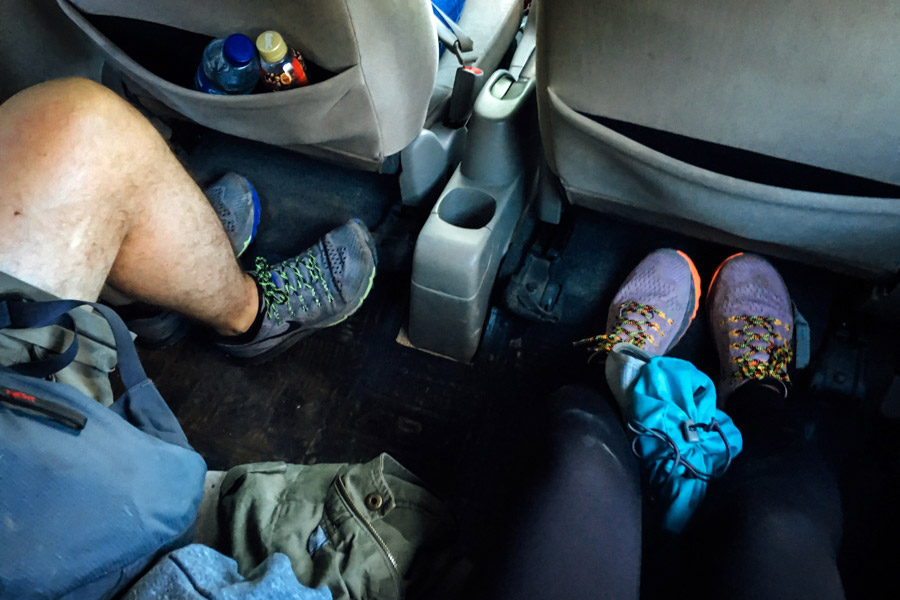Serge Gainsbourg - La Javanaise
After a short break in Surabaya, we are on a scenic train ride to Yogyakarta in Central Java, a city known for its nearby Buddhist and Hindu temples. We come for the history and old relics, but find so much more: bright colors of street art, pastels of old walls, a complex religious past and a present full of character.
Our hotel is hidden amongst maze-like alleys; no way to book online or call, even though the place had many positive reviews on TripAdvisor. It’s called “La Javanaise,” from a famous Serge Gainsbourg song about a special night with Juliette Gréco; the walls are full of photographs of the late singer and author. The hosts are called Puquito and Paquito, an elderly couple; they wait on the main street at night to guide the passing backpackers into their hotel. Along with free coffee and banana pancakes, there was no way we could have stayed anywhere else - I wouldn’t dare deny her of her favorite breakfast. We even met new friends, Nico and Marion, at the end of their 11-month travel.
After the charm of Bali and the fires of Kawah Ijen, Yogyakarta is yet another Indonesia: we get lost in the small streets; scooters swerve between cars and horse carriages; street vendors fill up the curbside; and scammers are aplenty. It only takes a few minutes after we settle, when one of the hotel workers takes us to a ‘local art gallery’ of Batik paintings. He speaks French and assures us that this is the last day of the exposition - his friend is featured in it. It’s free, of course. After a few minutes inside, arguing why we won’t buy anything, we finally leave and read over lunch about the ‘art gallery scam’ we just went through, apparently a well known thing around here. It turns out our French-speaking friend was not even from the hotel, but just waiting there for the candid tourist. Yogyakarta is full of these: the art gallery scammers, urging that they close tonight until next year; the unwanted guides at the entrance of various sites, pretending to be mandatory; the mini train driving only for a 100-200 meters; the numerous tuk-tuk drivers, sleeping on their ride until you pass by, and not understanding why you’d choose to walk. For some reason, I look like an easy target (must be the irresistible charm) - I’m just glad they think Madie is Indonesian and opt to talk to her all the time.
We decide on renting a scooter from the hotel to roam the street of Yogyakarta and get to the temples. The driving is fun and chaotic, with large honking buses, slow cars and other speeding scooters. I reminisce of the 16-year-old me speeding between cars in France; I’m twice that age now and with a much more precious package hanging on to me, hence a lot more careful. We make our way to the breathtaking temple of Borobudur, reading the life of the first Buddha on its walls (by surreptitiously following behind another group with an English speaking guide), and walking around it three times clockwise to pay respect. To add to its charm, the temple was hidden in the jungle for hundreds of years before being dug out in the 1800s.
On the way back, we decide on the less advised countryside route (thanks, Google Maps) and drive through the beautiful Javanese landscape. We’re reminded of where we are by the heavy tropical downpours, soaking us to our bones while we drive back. I drive through the ankle-deep puddles; it’s just as fun as it is scary (and of course, wet). No one cares, so we pretend we don’t and enjoy the coolness of the rain at the slowest speed, as we make our way back to La Javanaise.
The next days are just as picturesque, and much better told with her photos: the high towers of Shiva, Brahma and Ganesha in Prambanan, among a classroom of loud Chinese girls; the large palace ruins of Ratu Boko, where we can explore at will and play real-life video games, crossing what may have been a forbidden sign to find a fisherman on one of the ponds (achievement unlocked - I did not ask him for a side quest). We get lost in the pastel colors of the water castle, Taman Sari, an 18th century bathing complex which was at the center of an artificial lake, now filled with small houses and narrow streets. I daydream at my favorite spot, the ‘Sultan's View,’ on top of a small tower overlooking the main pool where all of his wives bathed. I get a pinch on the arm for thinking about ‘many’ wives.
We spend the next days strolling in the city. The beautiful sights of Yogyakarta told us of its Buddhist, Hindu and Muslim past, colonized by the Dutch and English. The grit of Yogyakarta is its present, with its street vendors, food and scammers - who we come to love just as much. We buy a couple bracelets we haggled hard for to save a few cents, starting a new tradition; we eat doubtful street food for a couple dollars on the outskirts of a bazaar with overwhelming smells of dried fish; we walk through the maze of small streets with graffiti reminiscent of Barcelona; we finish the unnecessary two bottles of large Bintang while eating Bakwan at Bladok (yes, we did this three times). At night, the city wakes up with the many Mosques signaling the end of the day fast - we peek on a schoolroom teaching the prayer to young kids.
What we will remember most of Yogyakarta (or as Madie says “Djog-Djaaaah”) are old walls with bright touches of colors, whether they’re from a graffiti, an unexpected umbrella, a neon sign or a hijab - somehow perfectly representing what this city has become. Candy colors on Candi - the word for temple in Indonesian (see what we did there? I wonder how many will actually read this far).
But it’s already time to leave Java, we’re off to Sumatra to try to find our cousins, the Orang-Utans.

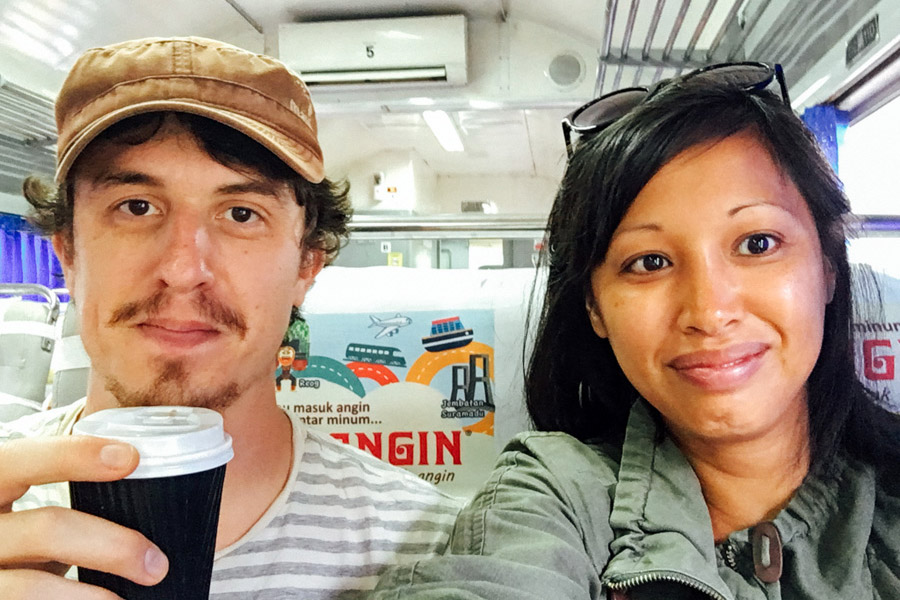
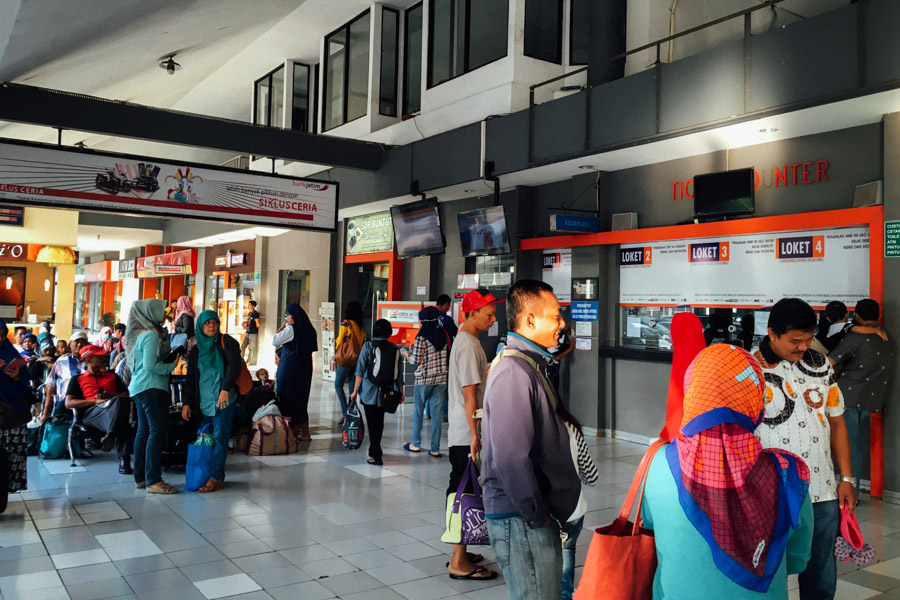
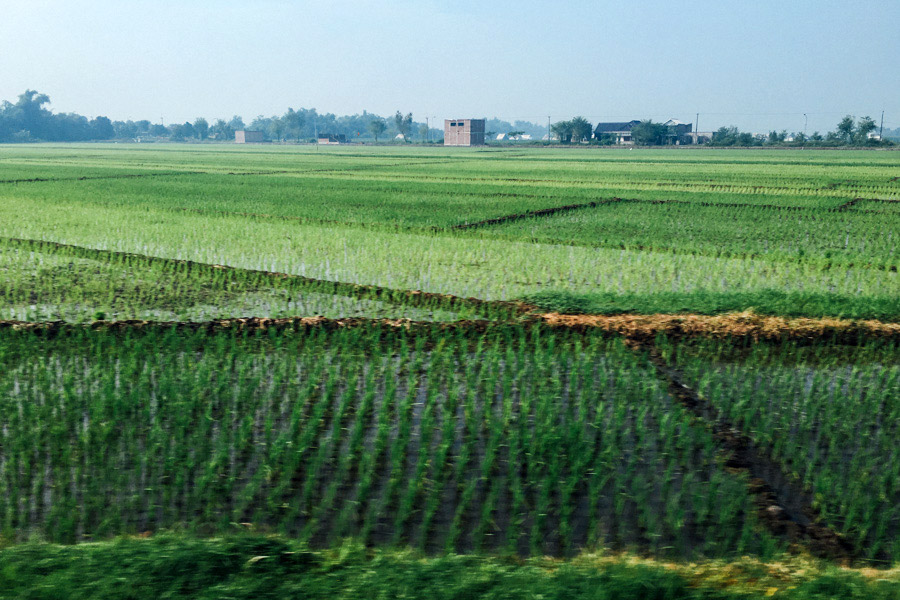
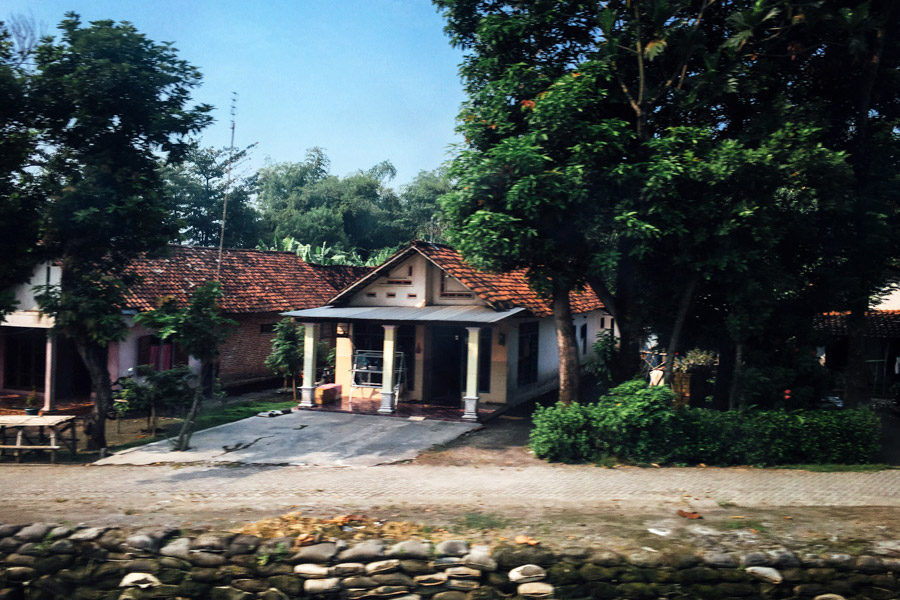
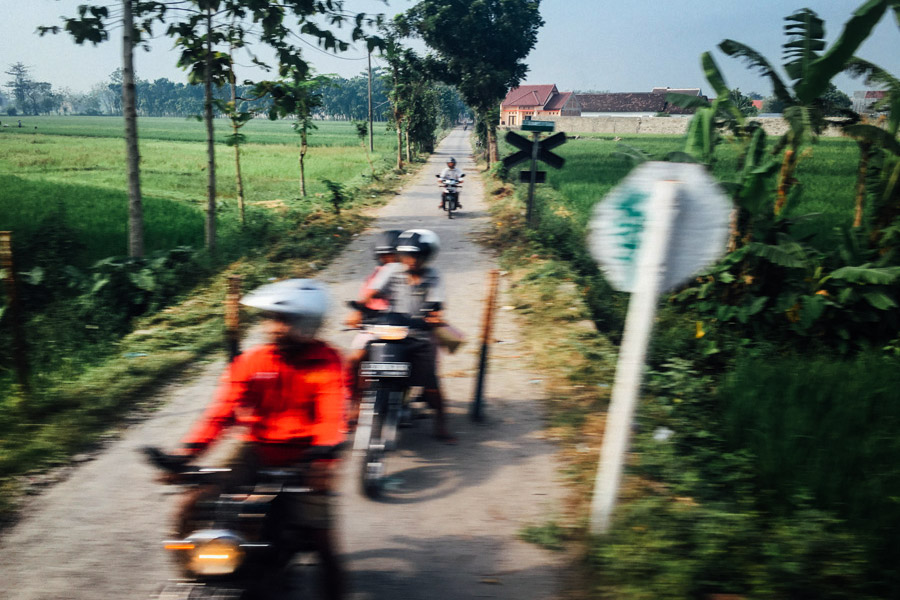
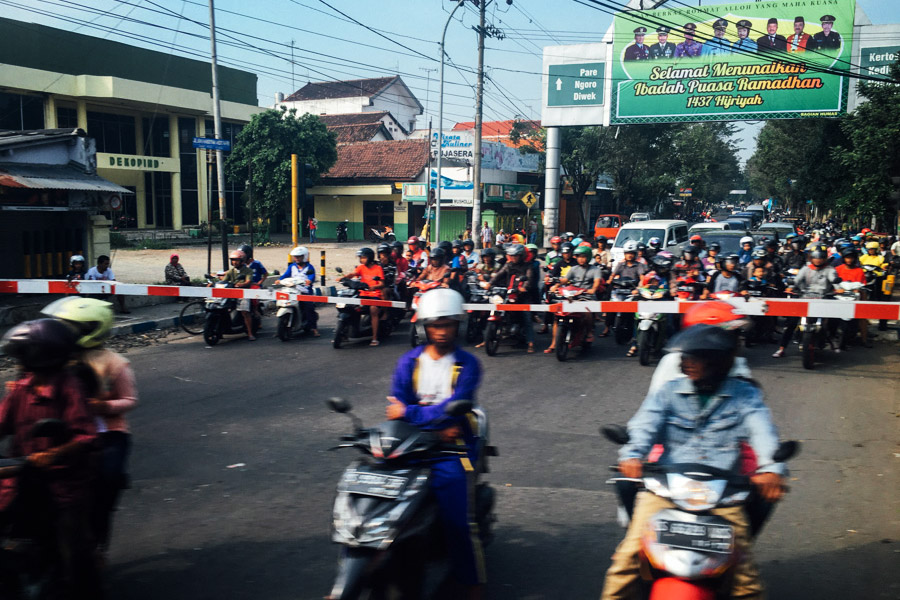
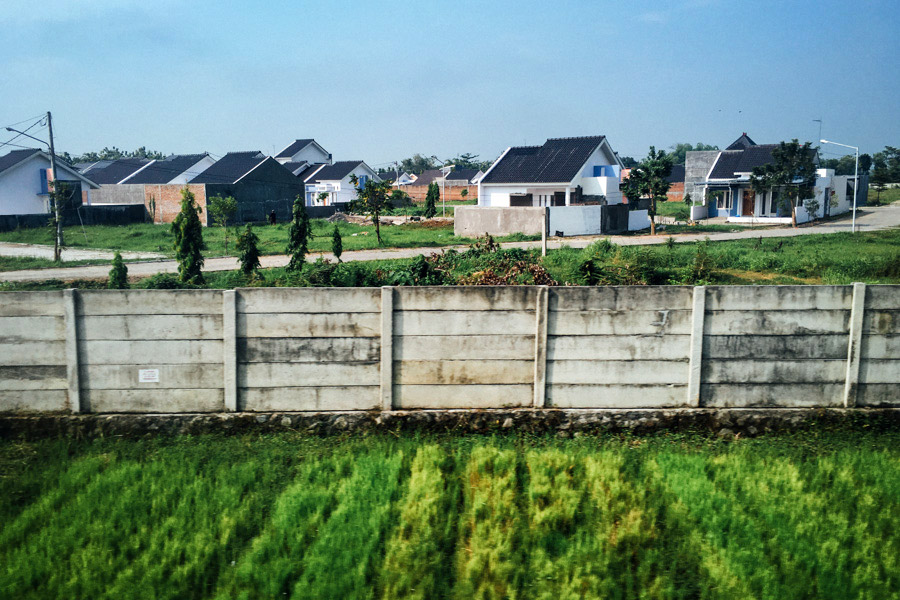
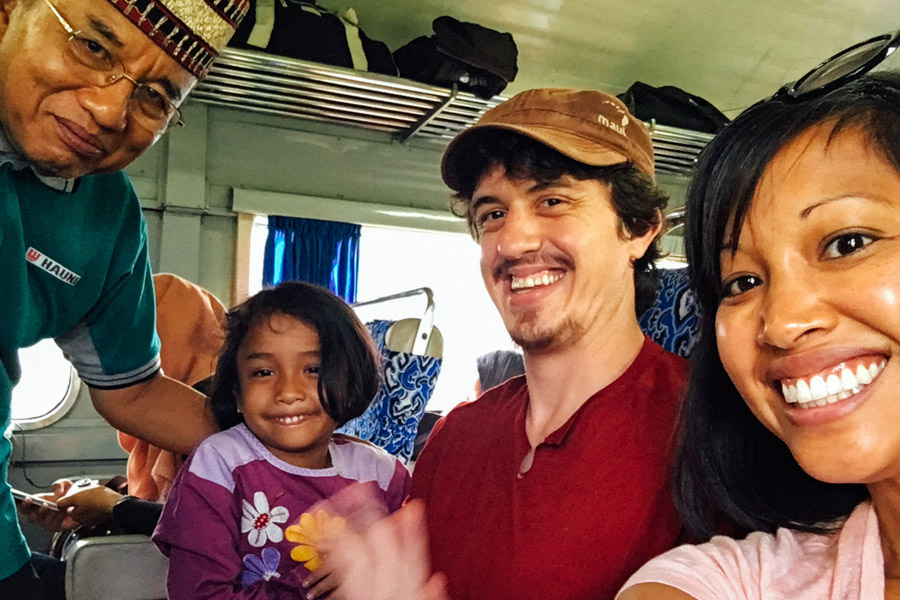
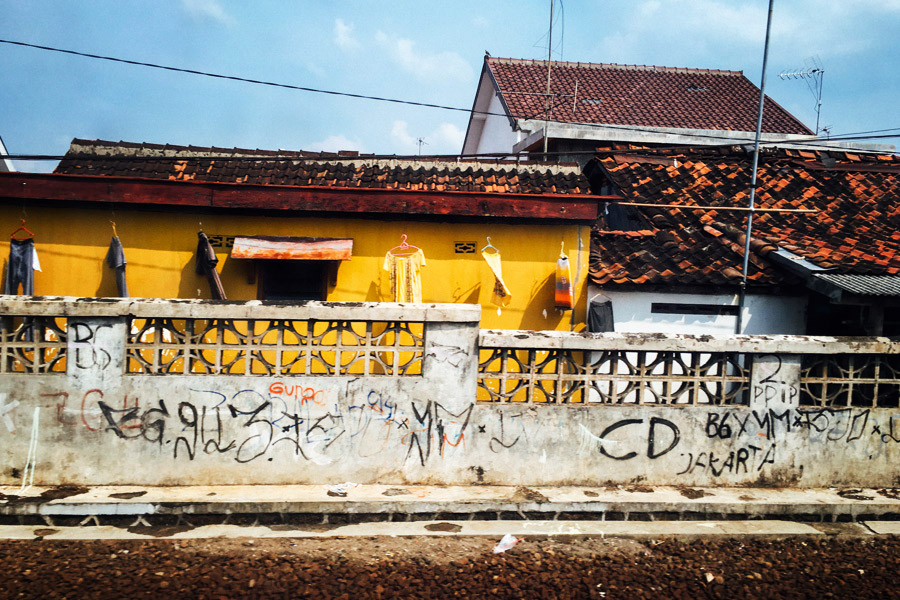
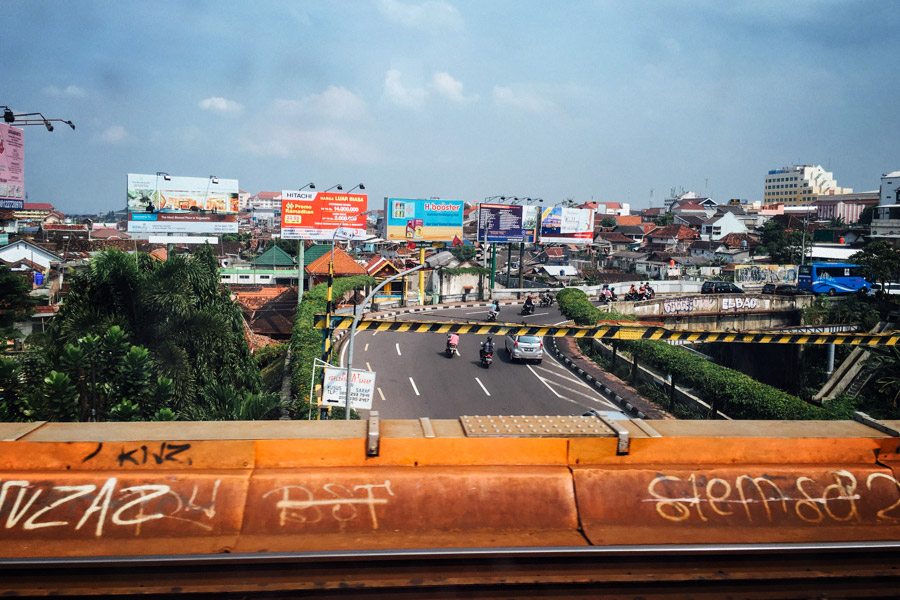
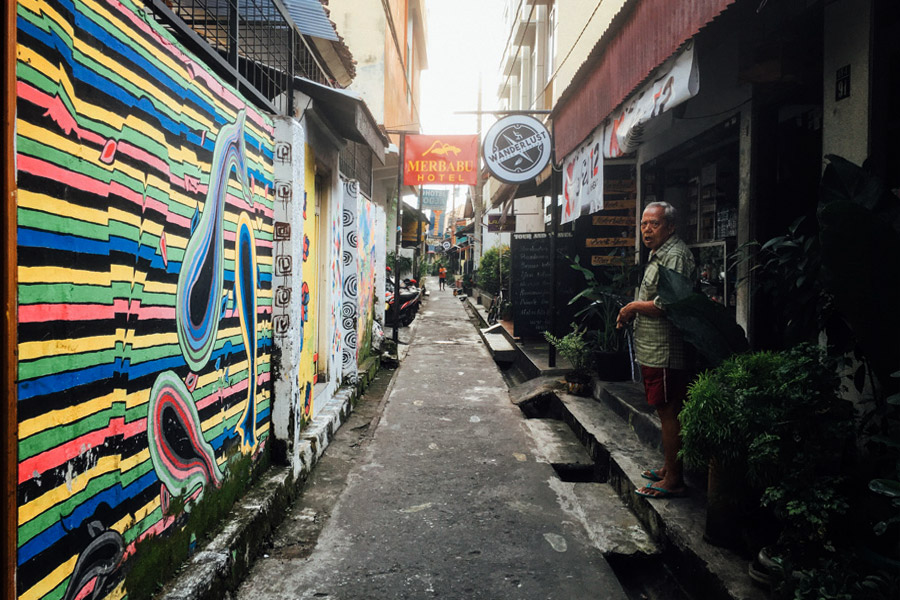
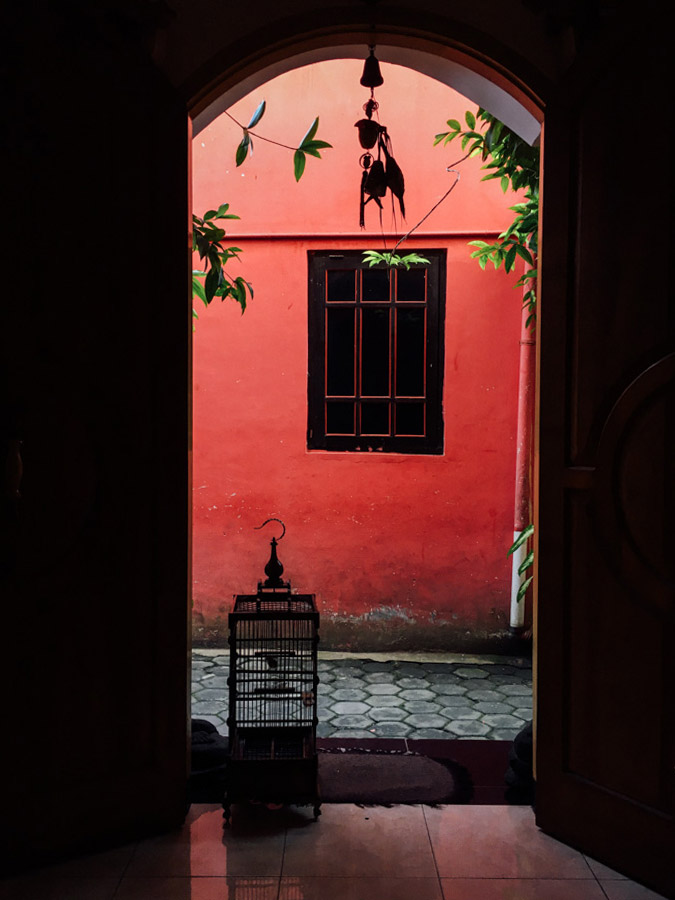
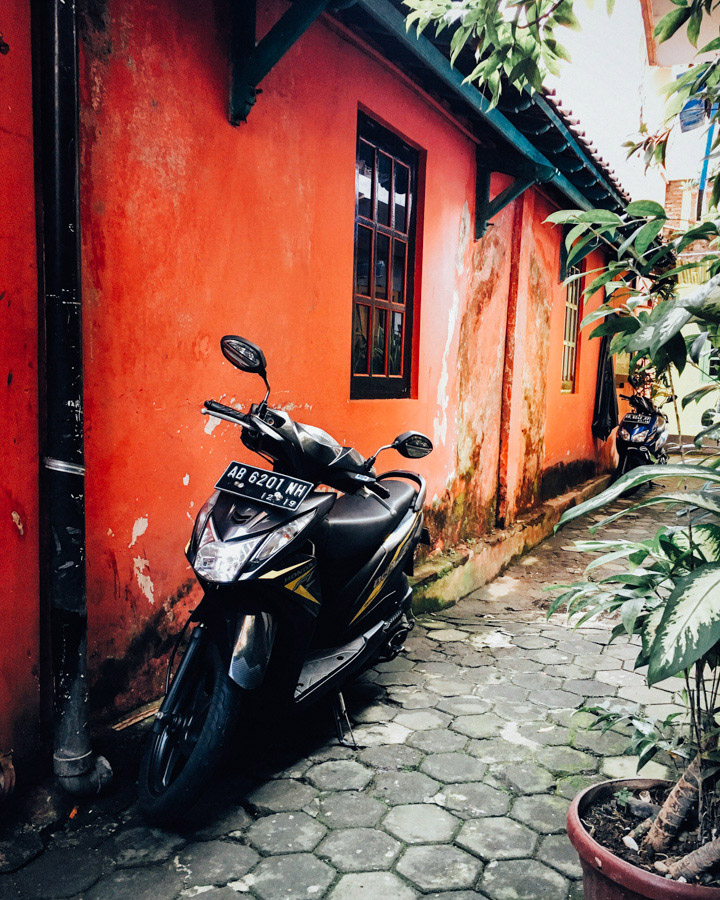
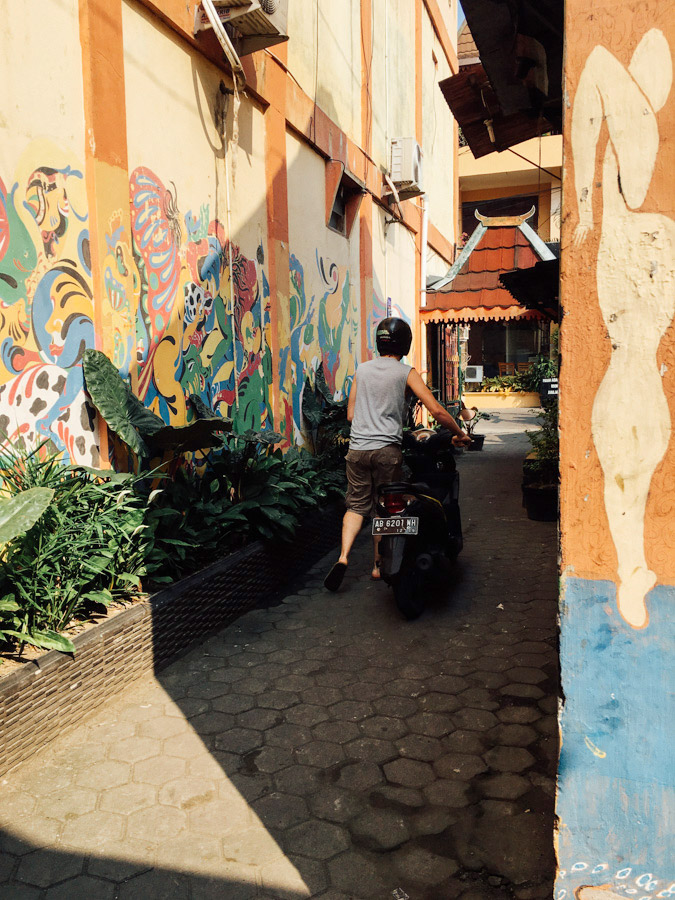
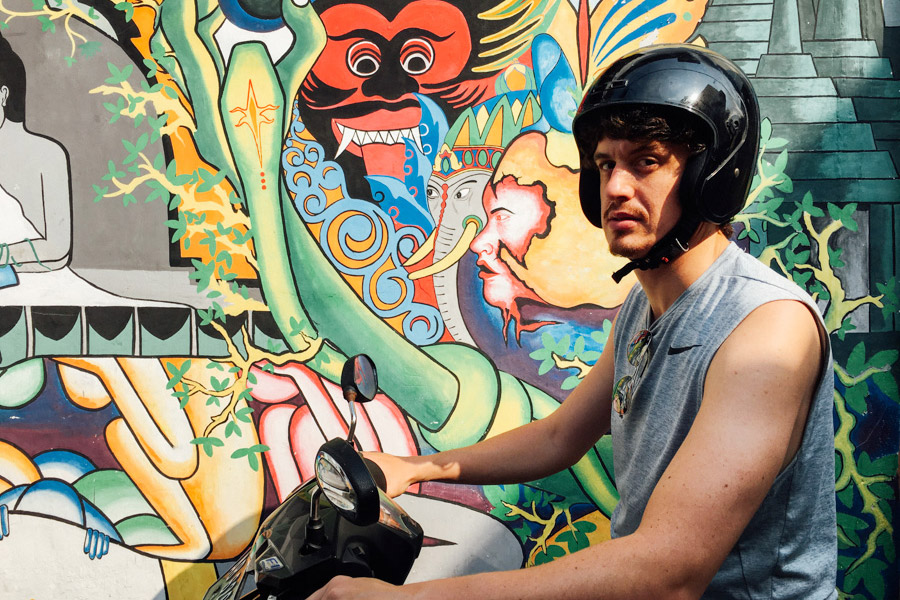
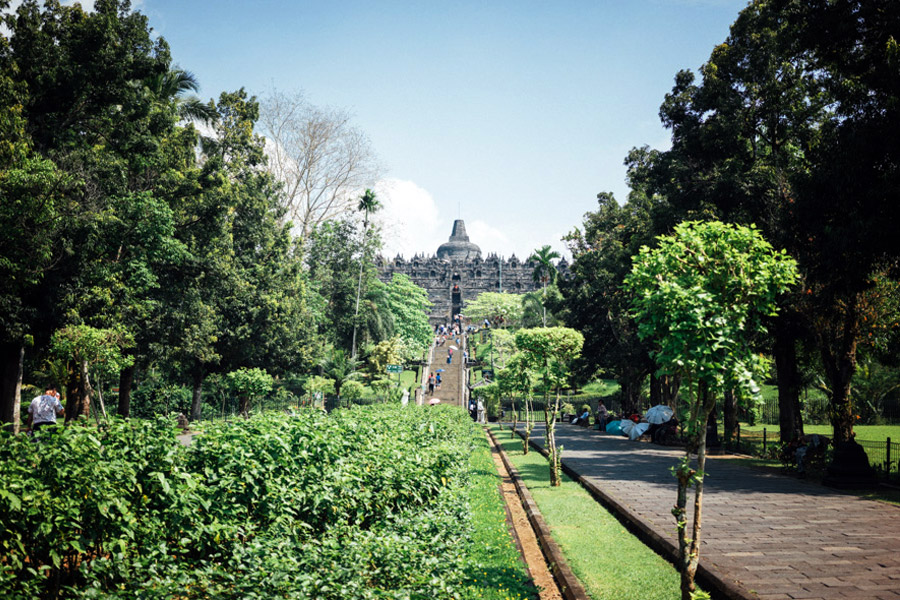
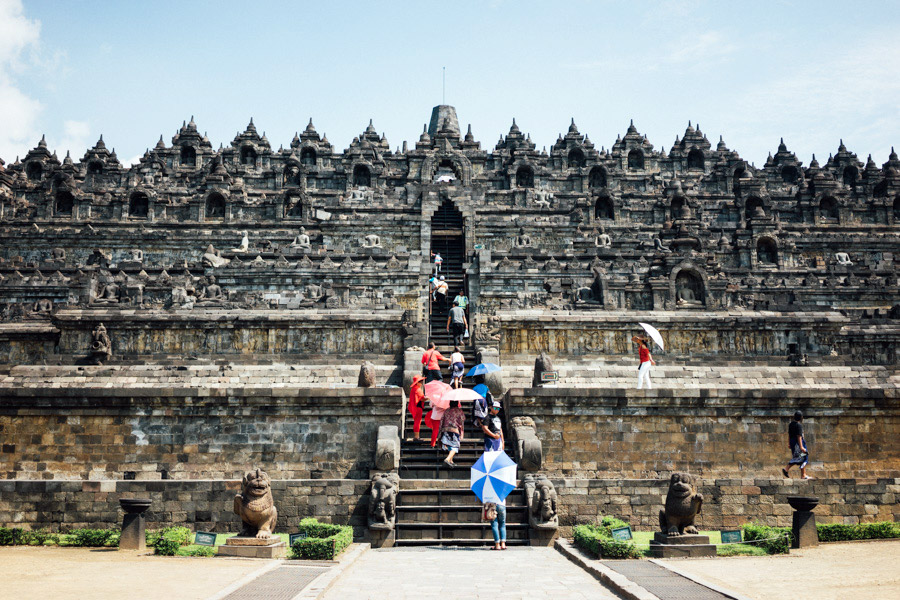
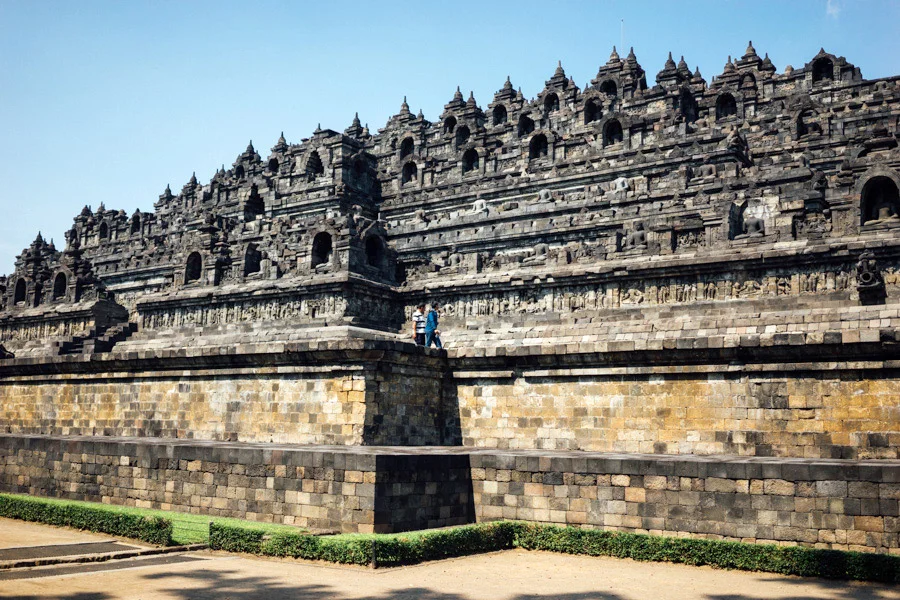
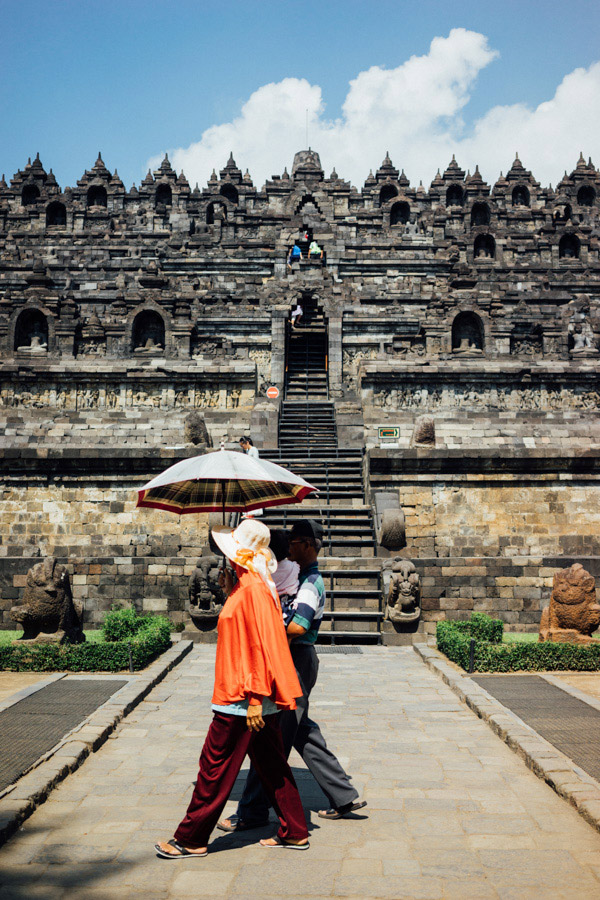
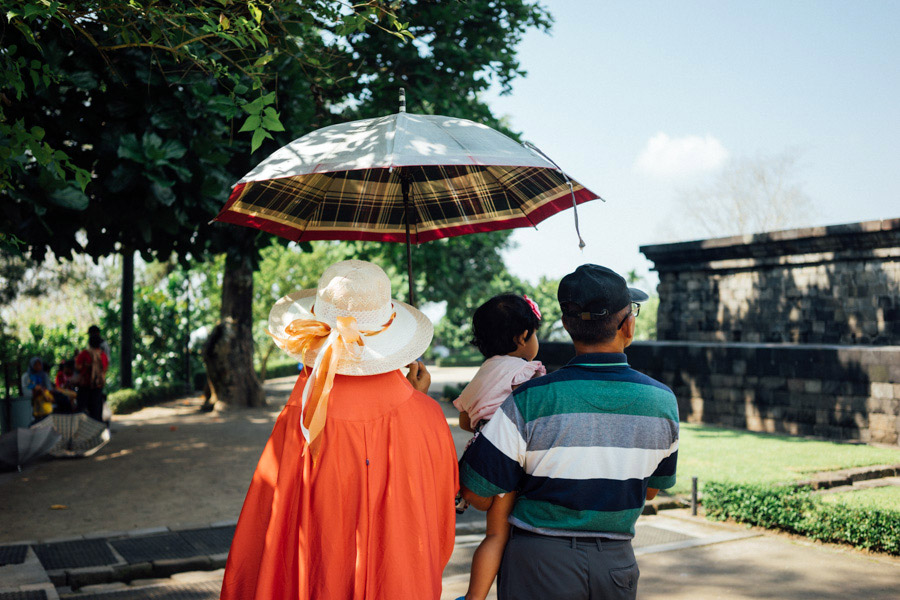
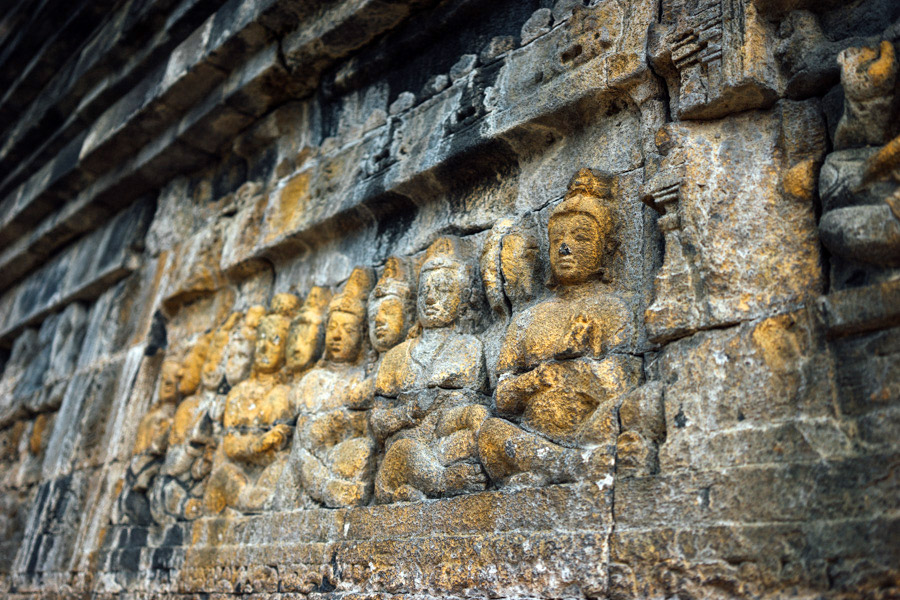

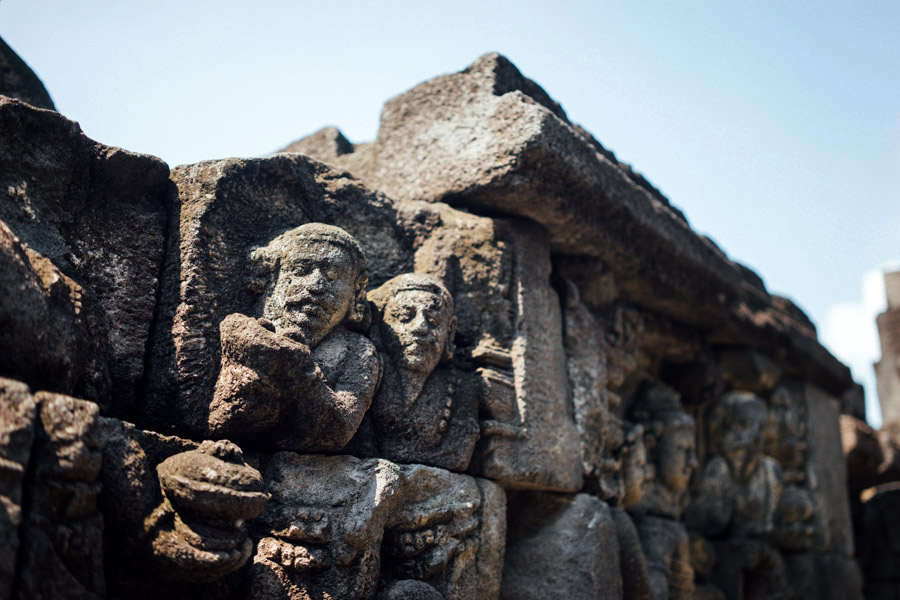
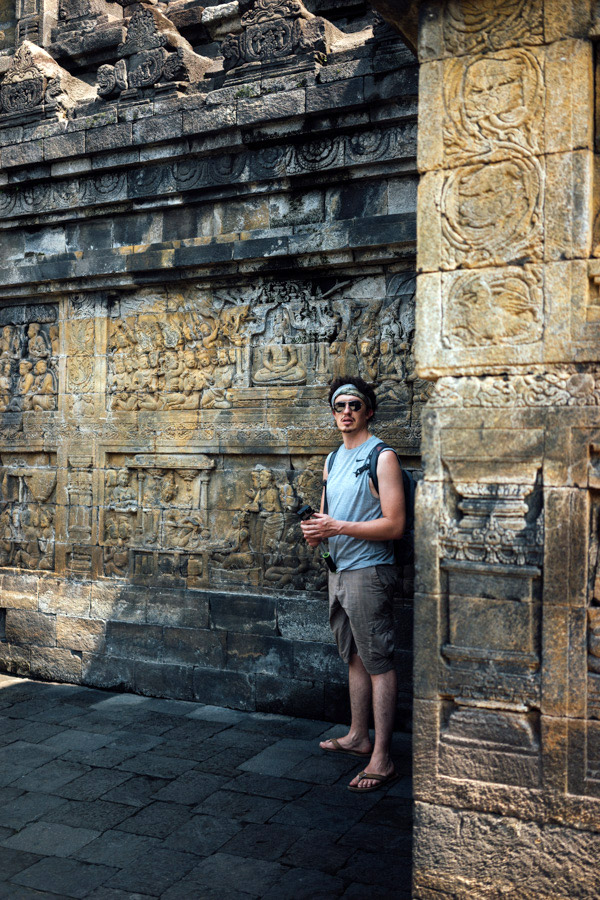
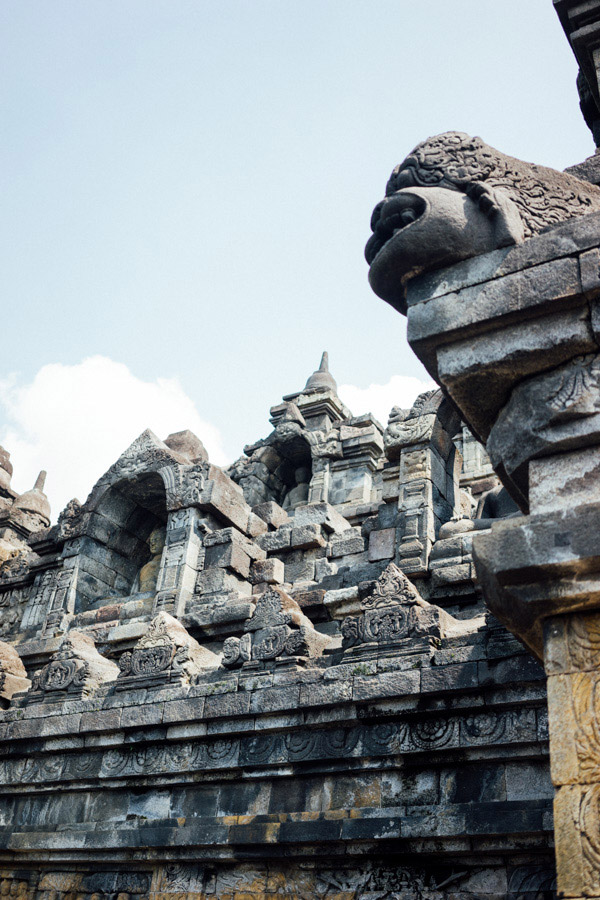
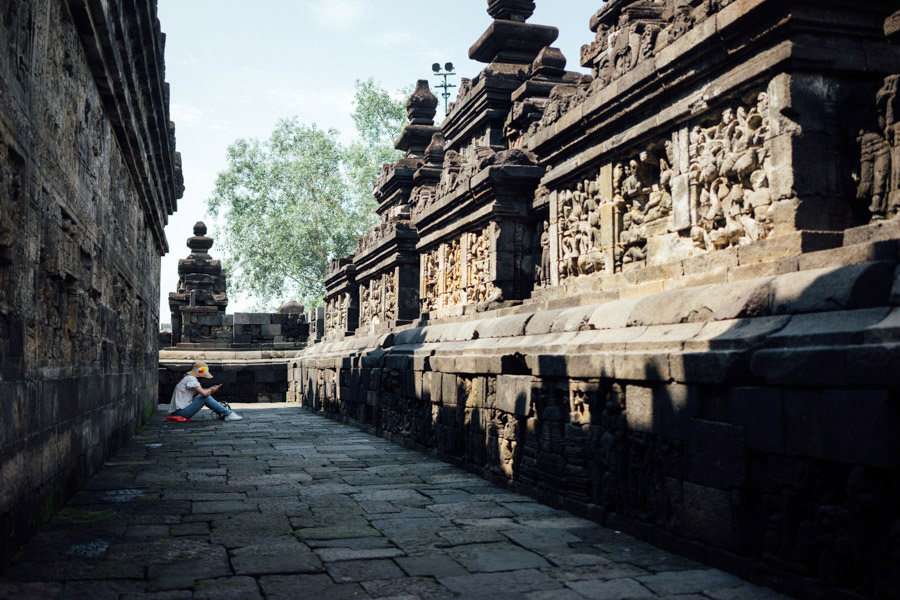
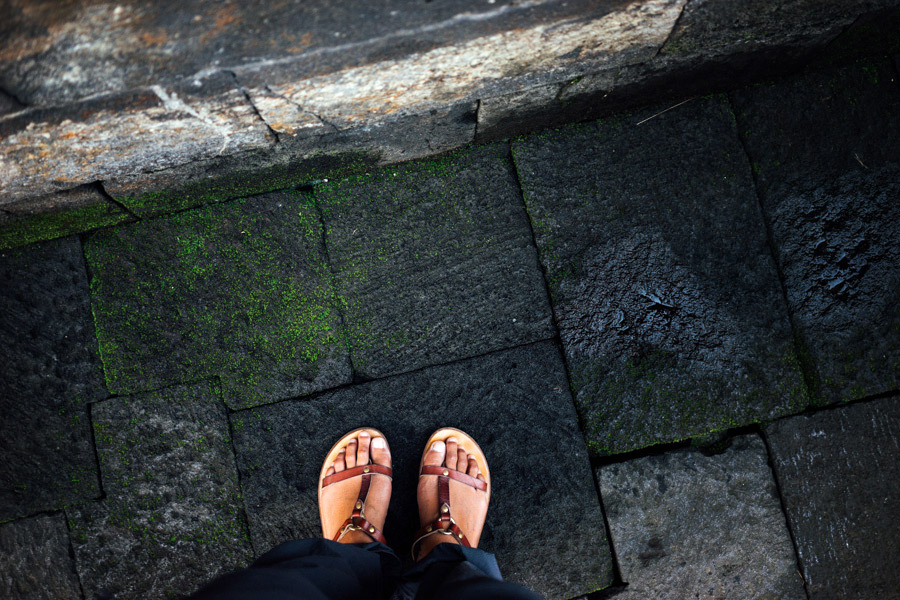
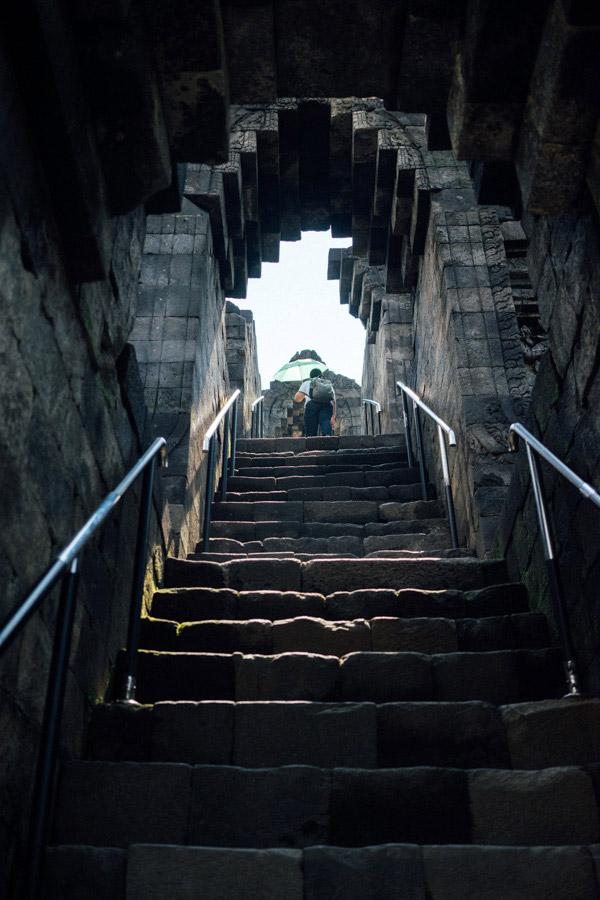
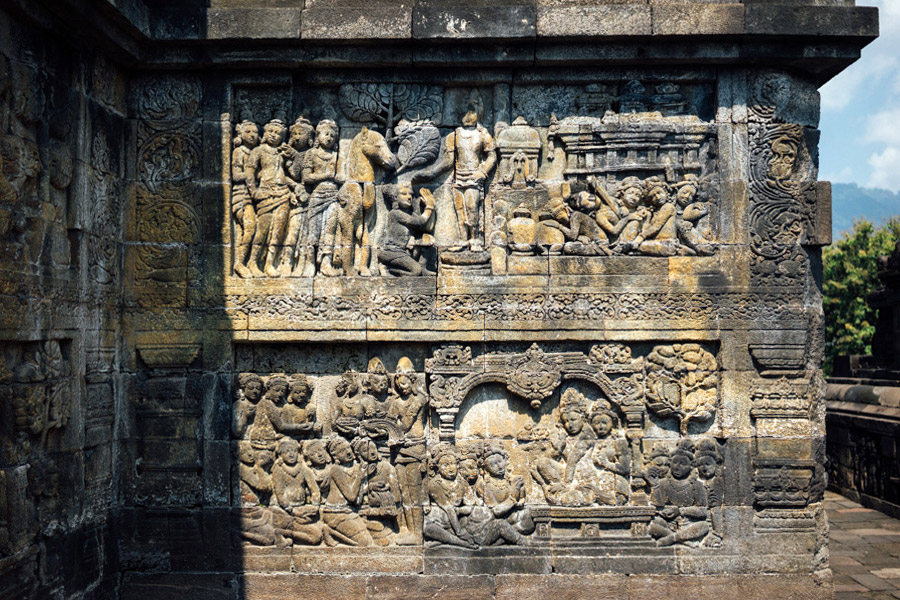
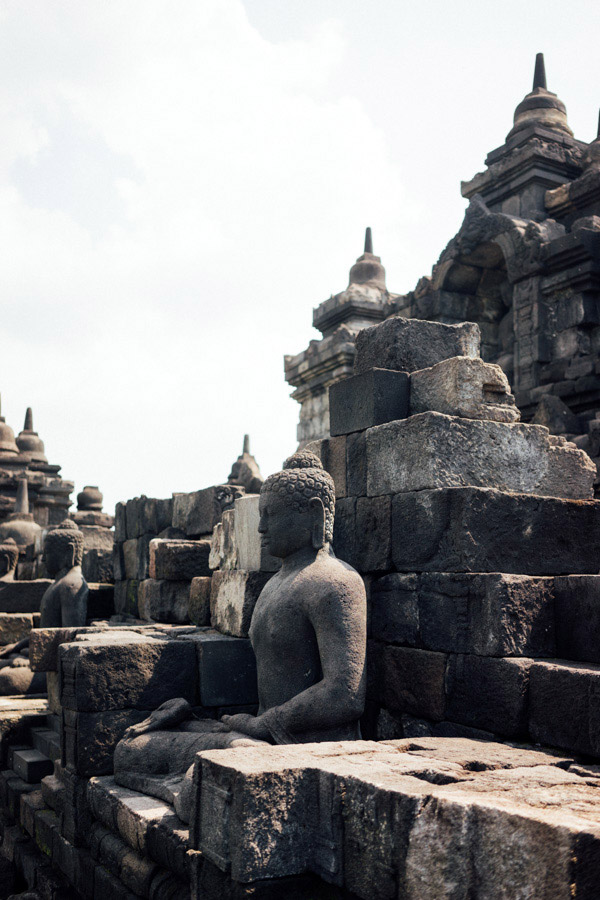

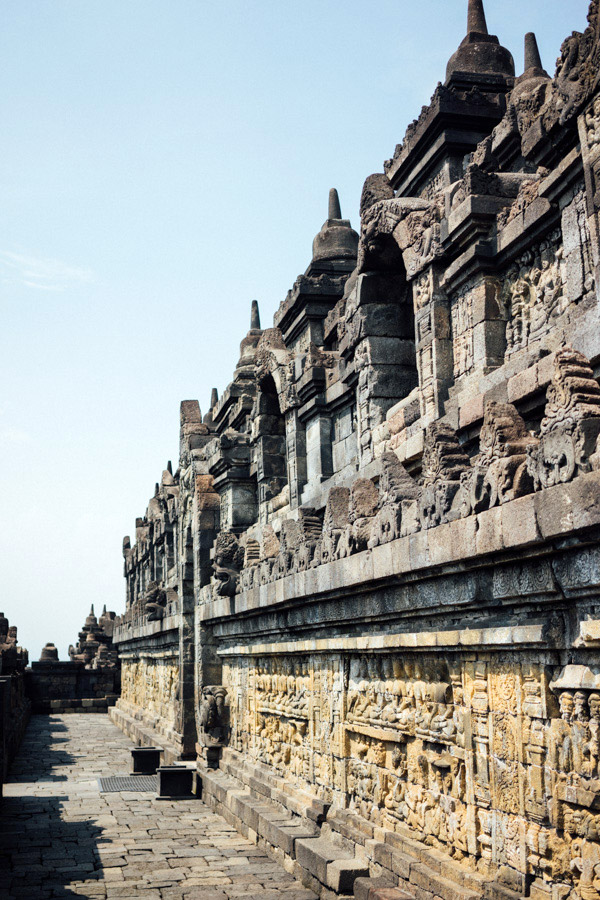
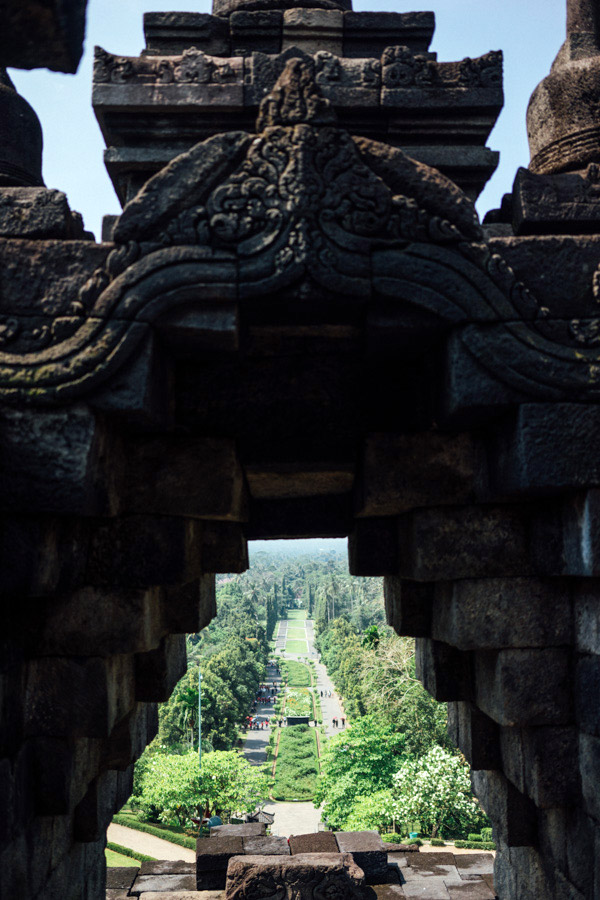
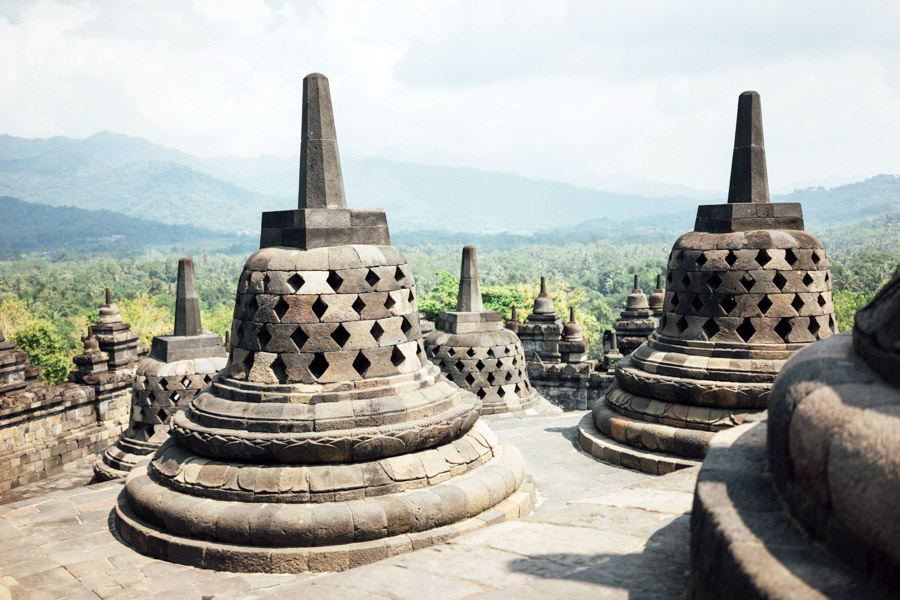

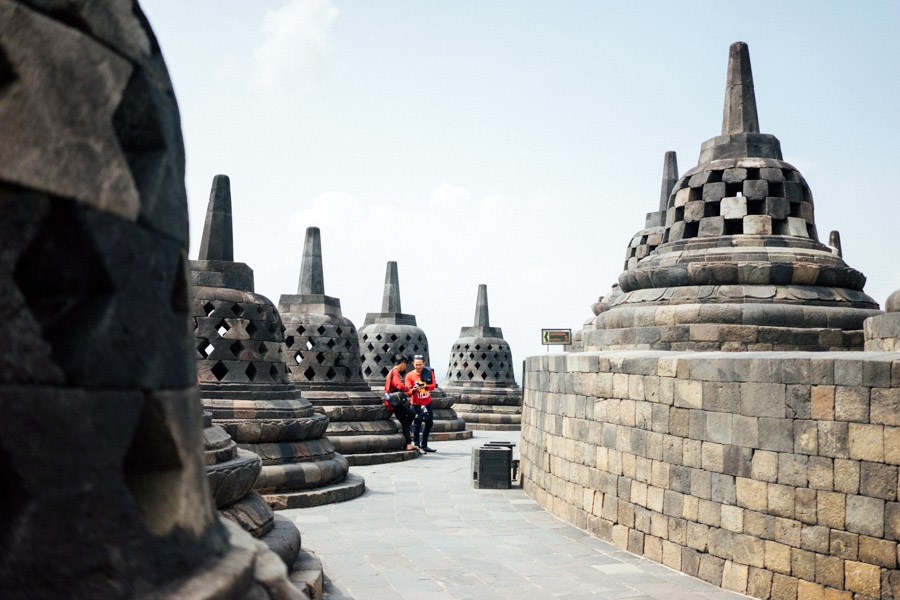
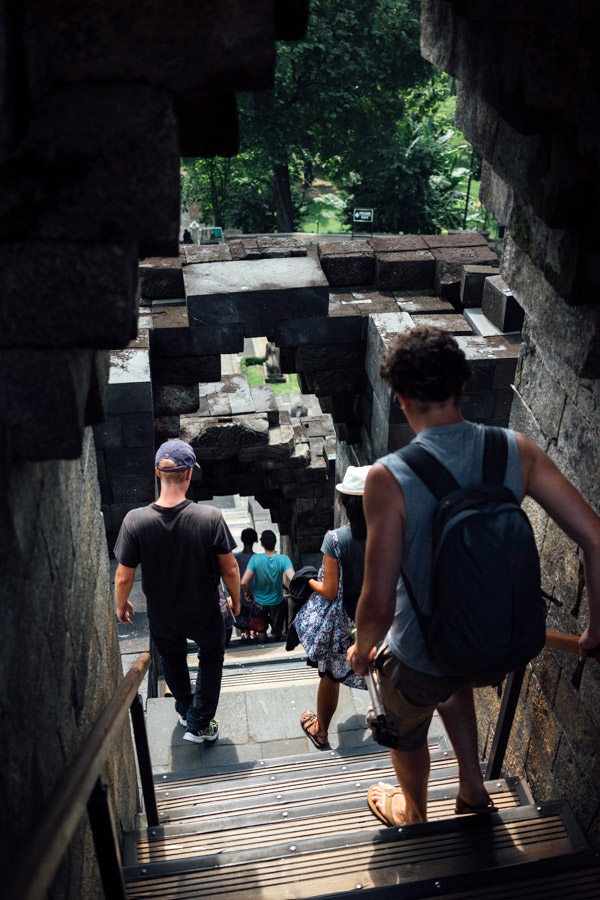
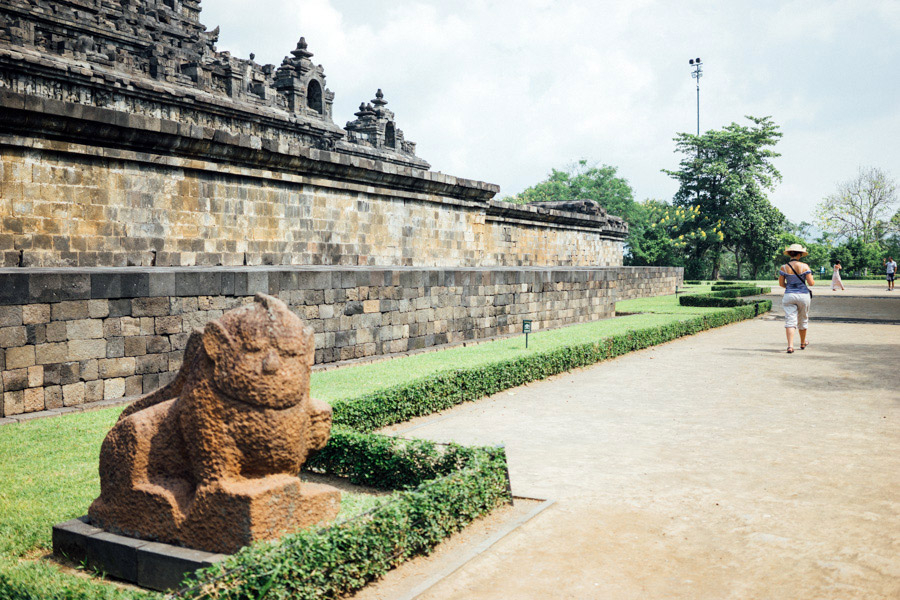
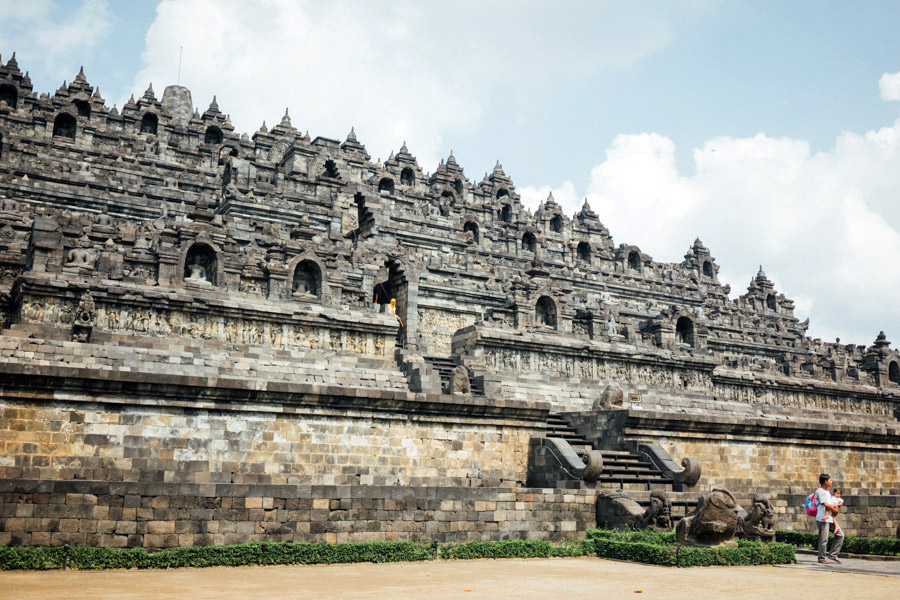

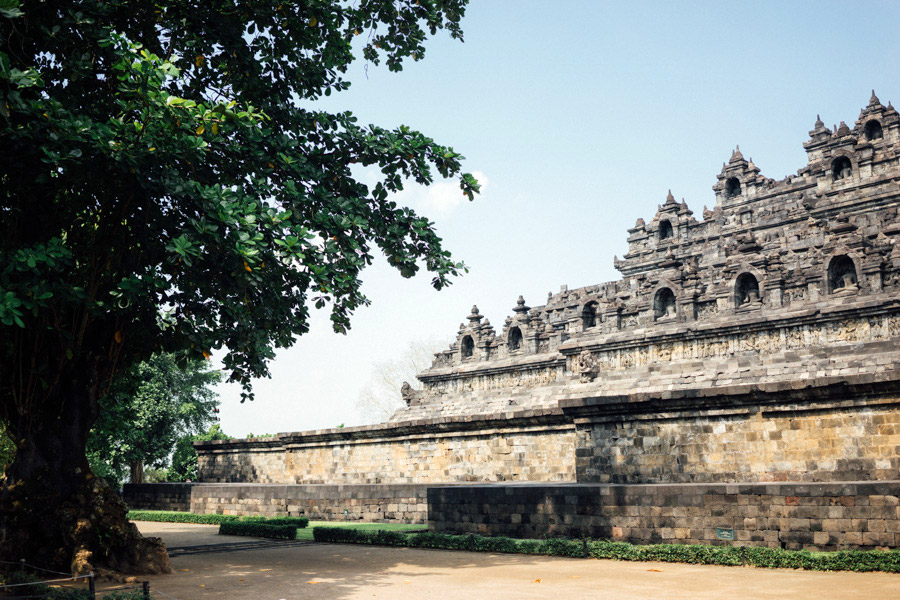
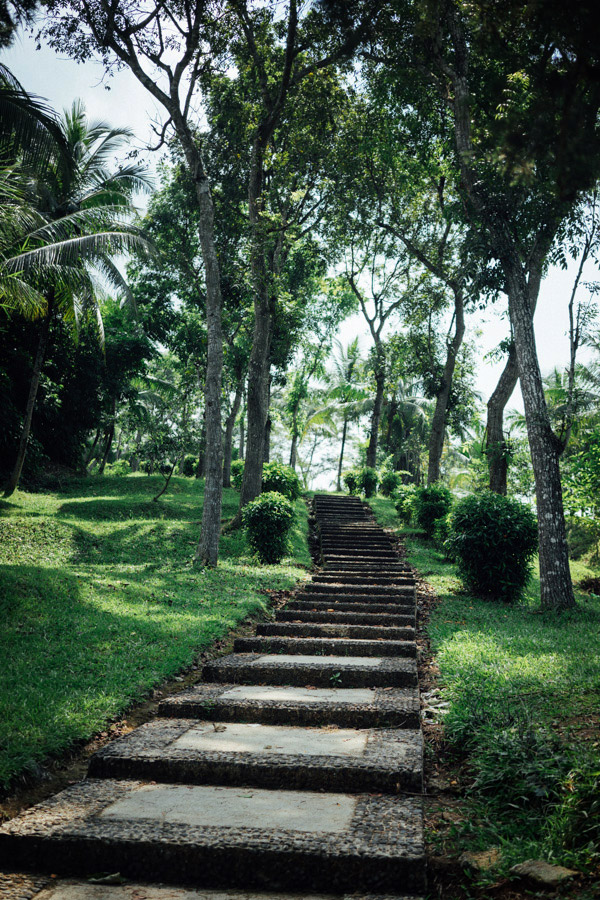
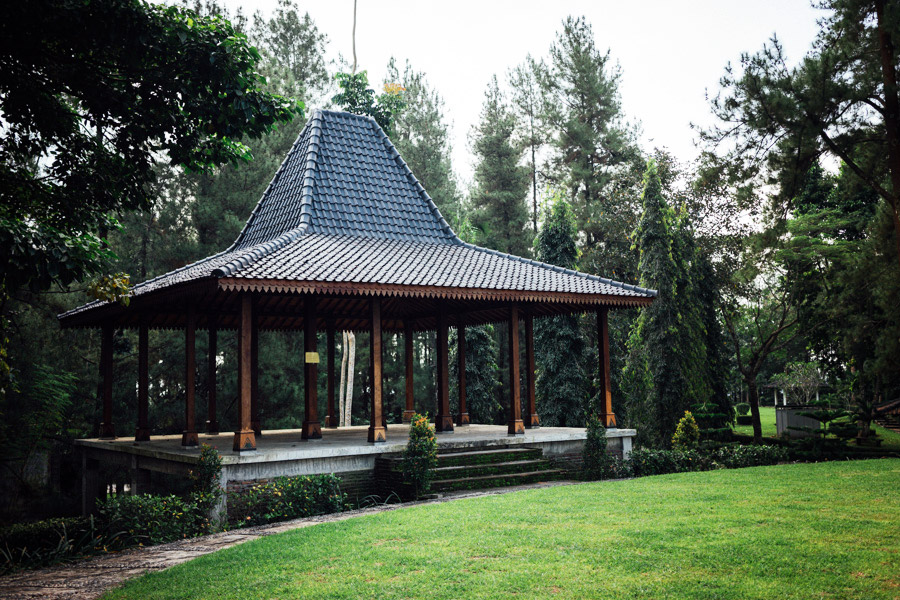
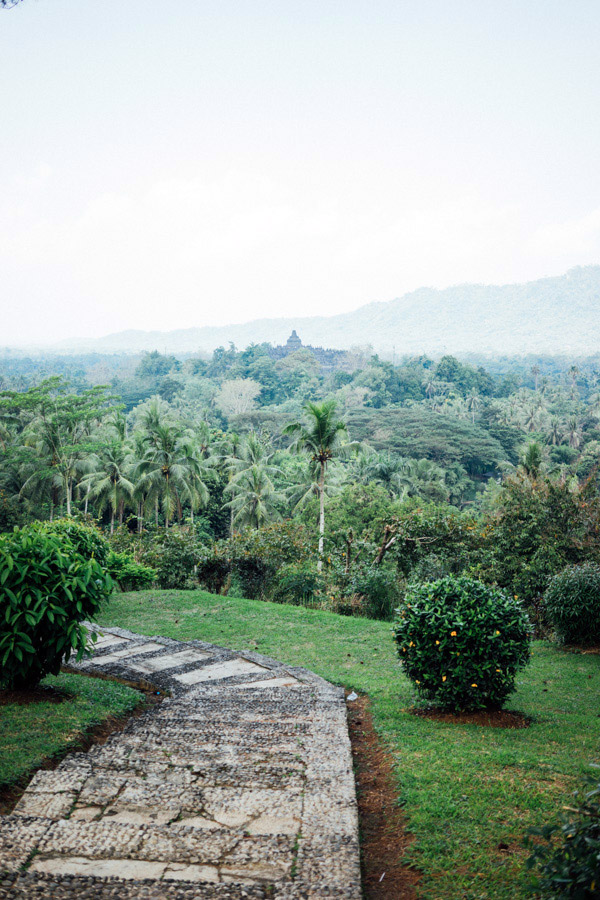
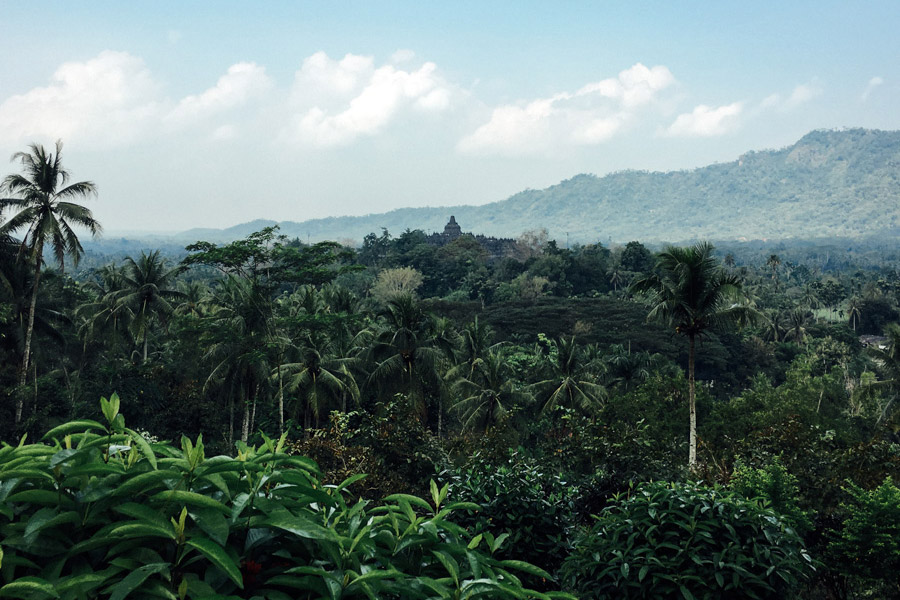
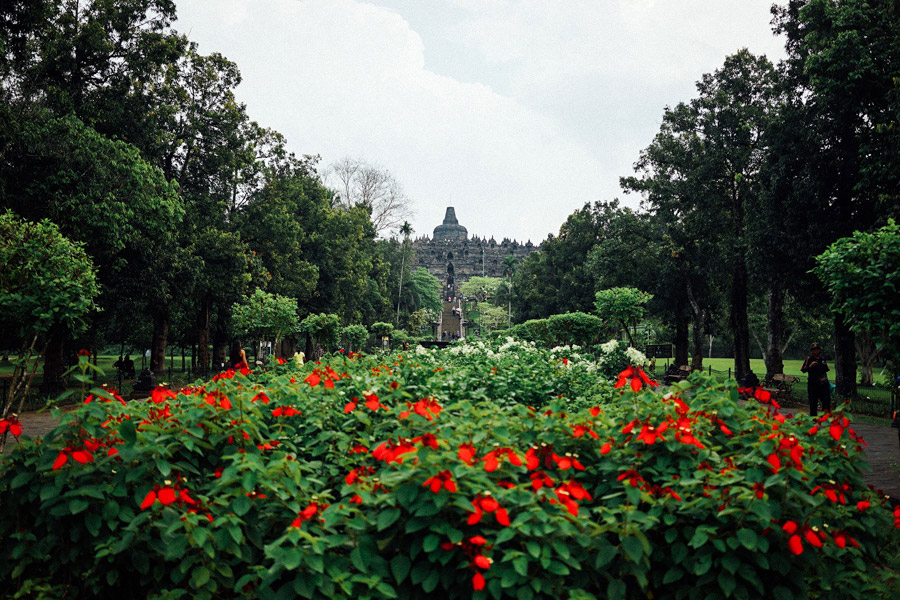
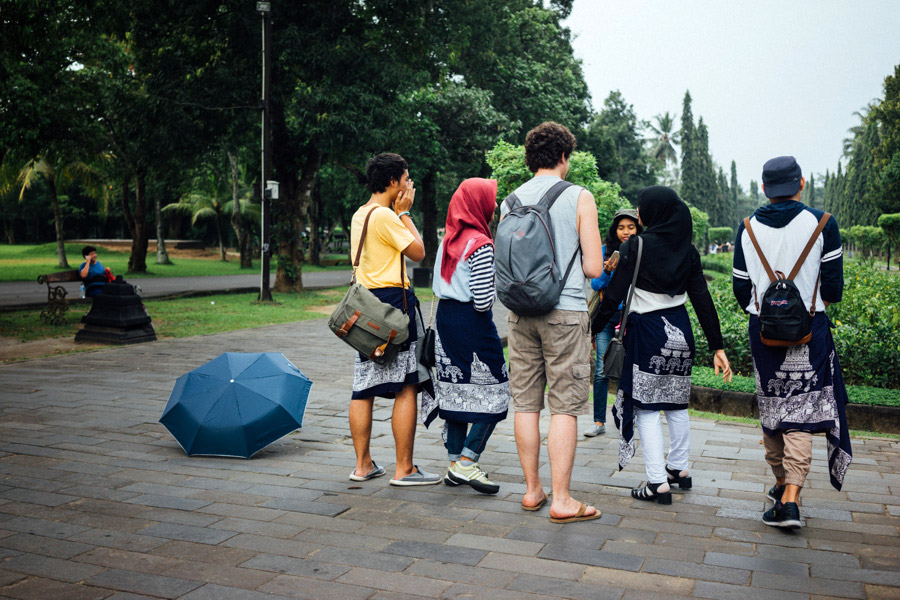
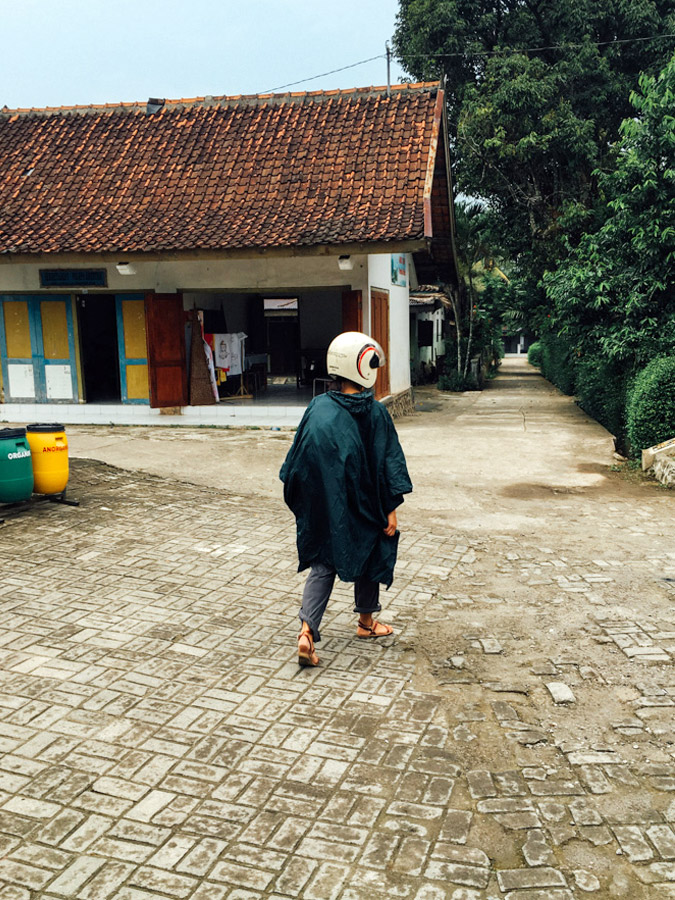
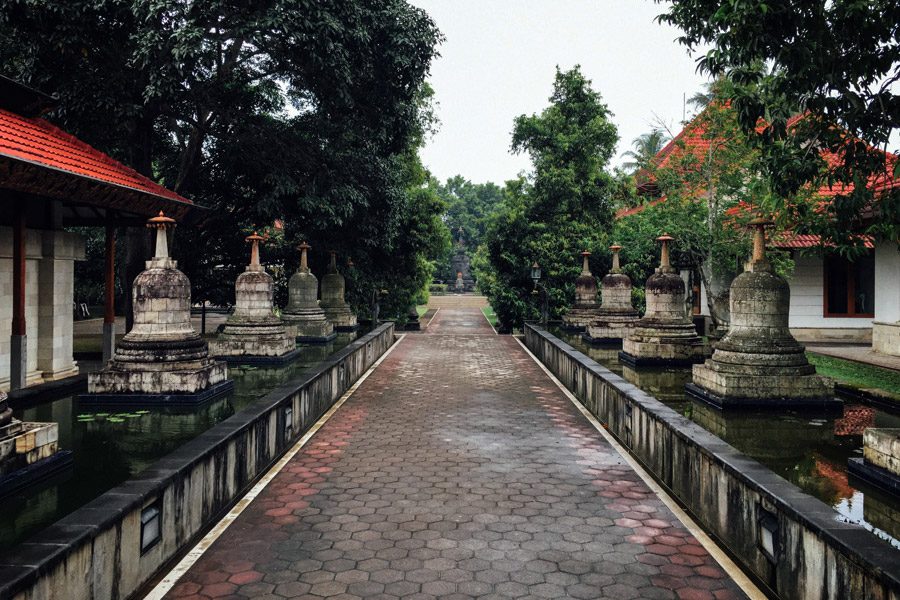
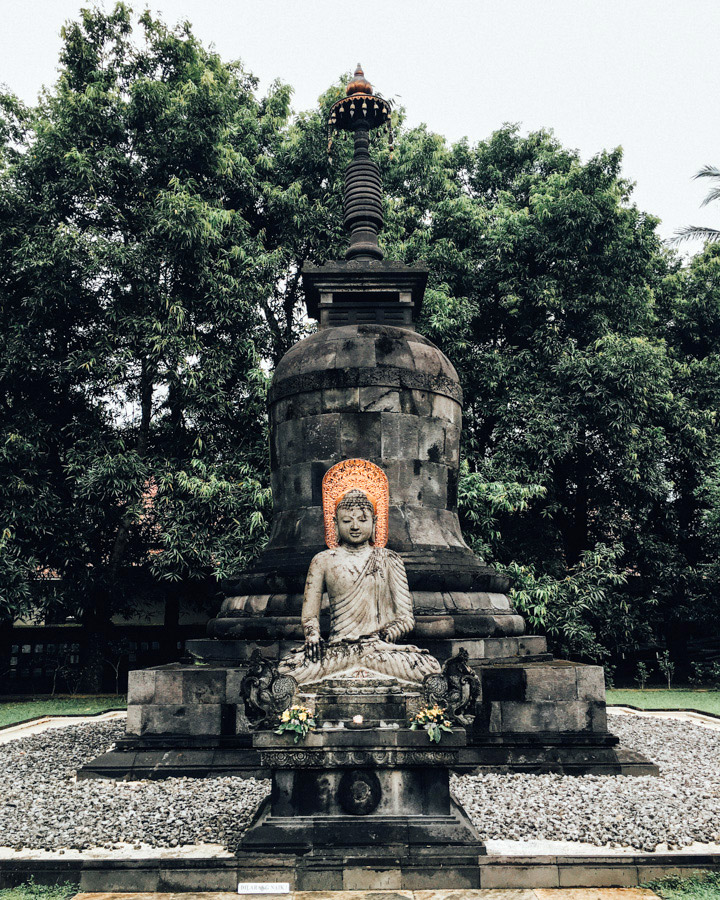
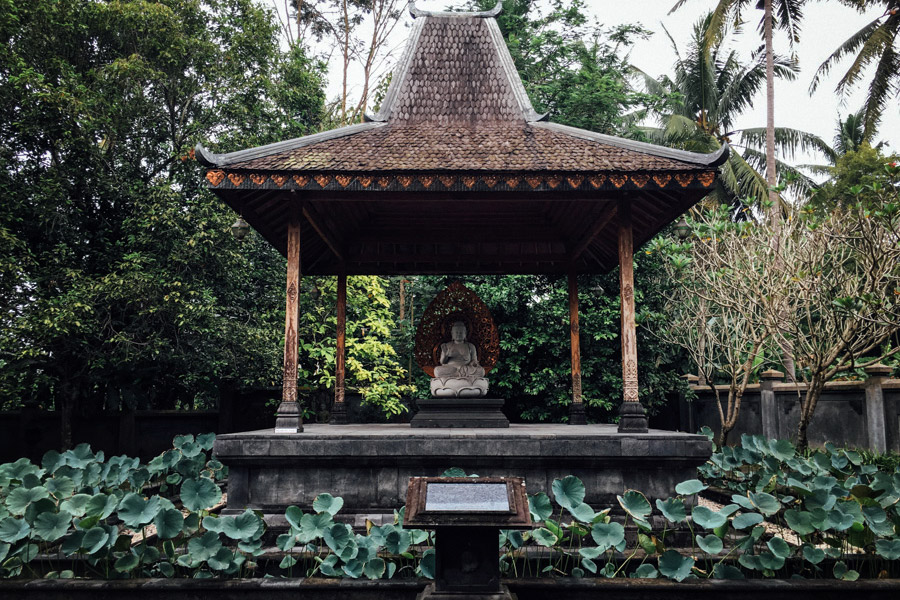
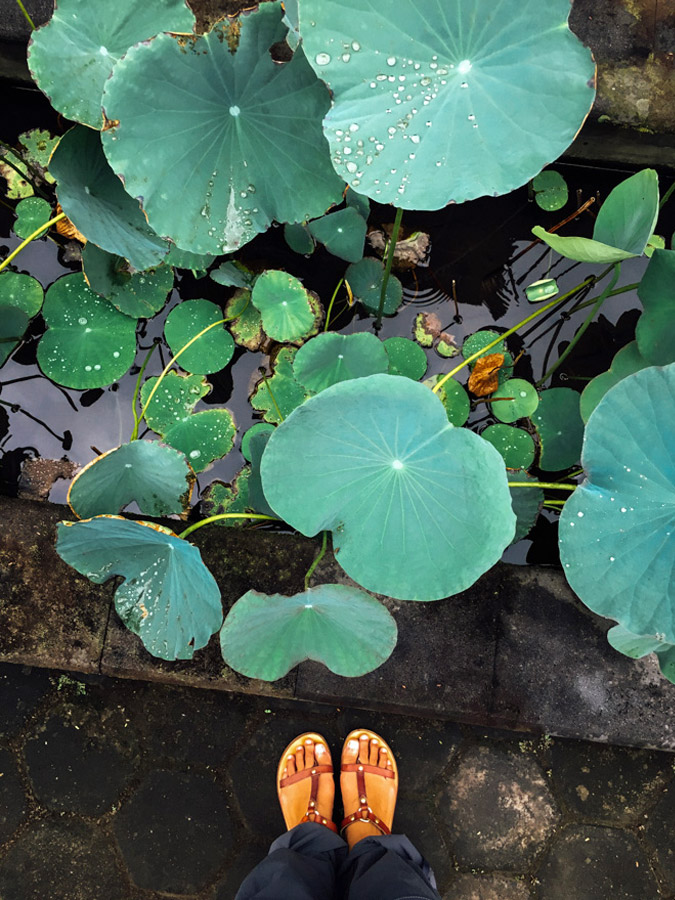
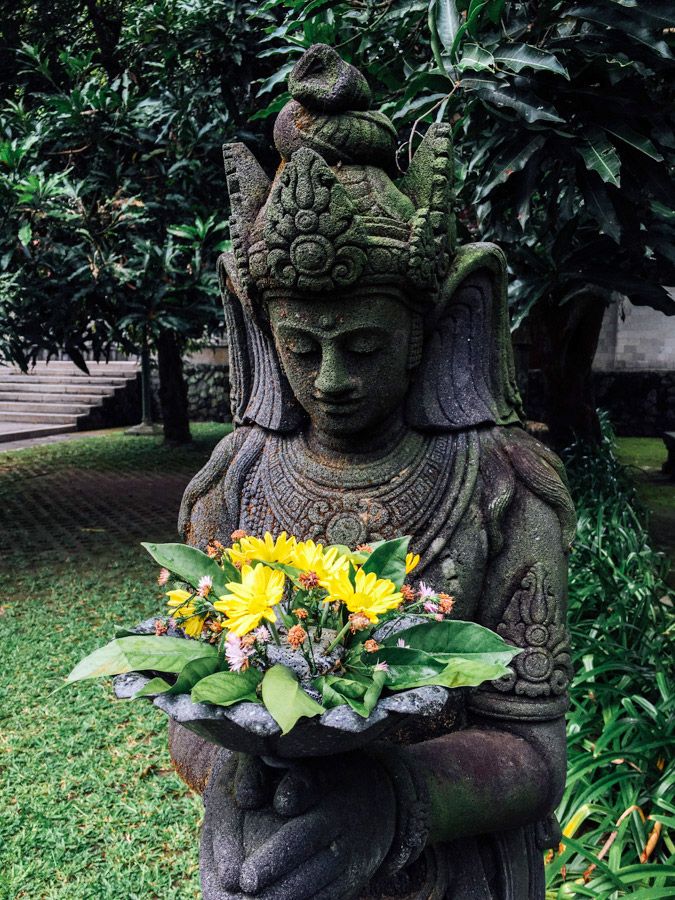
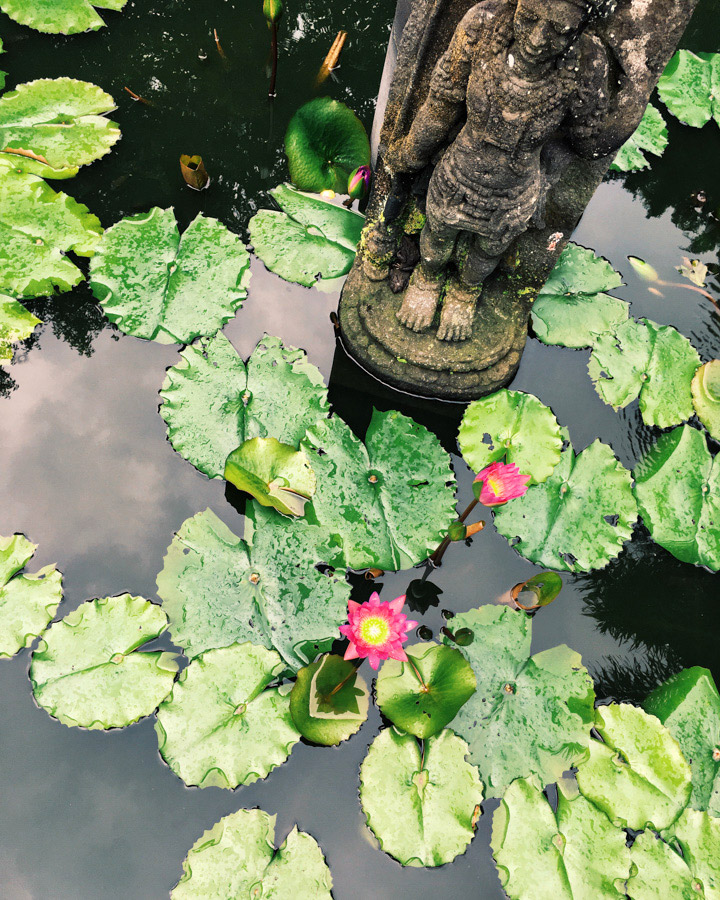
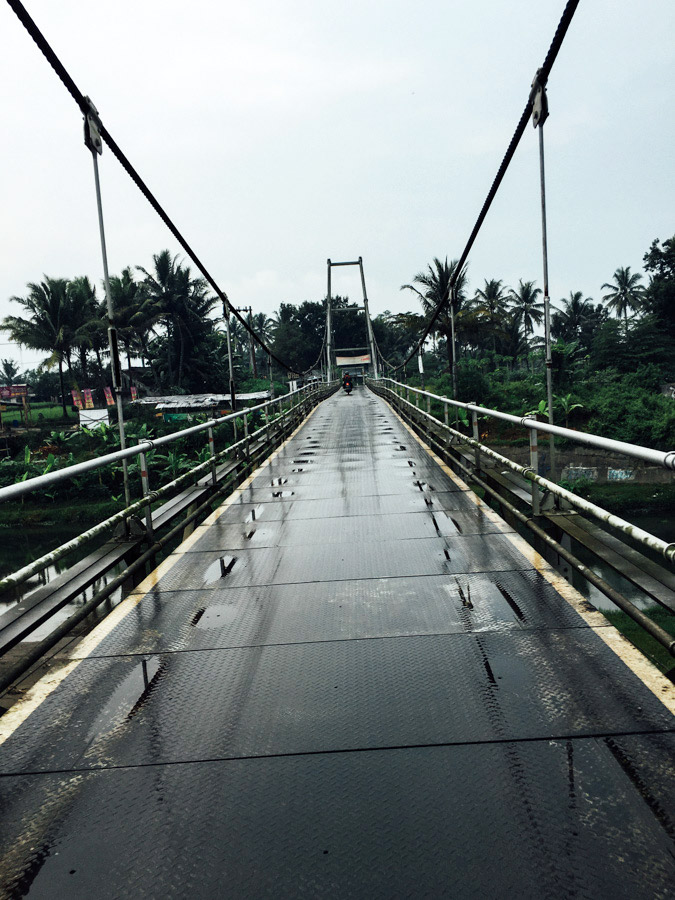
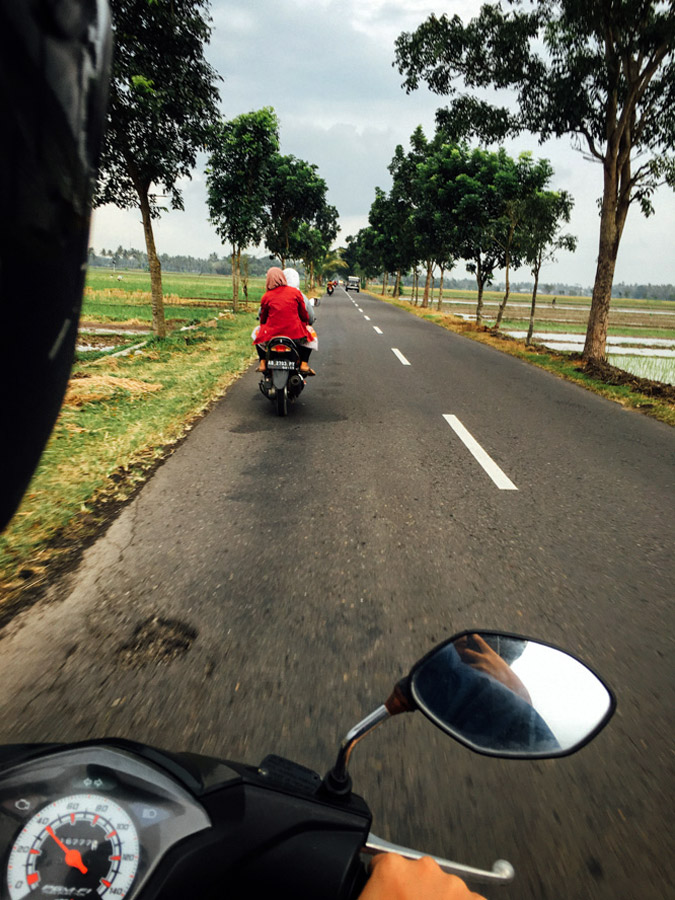
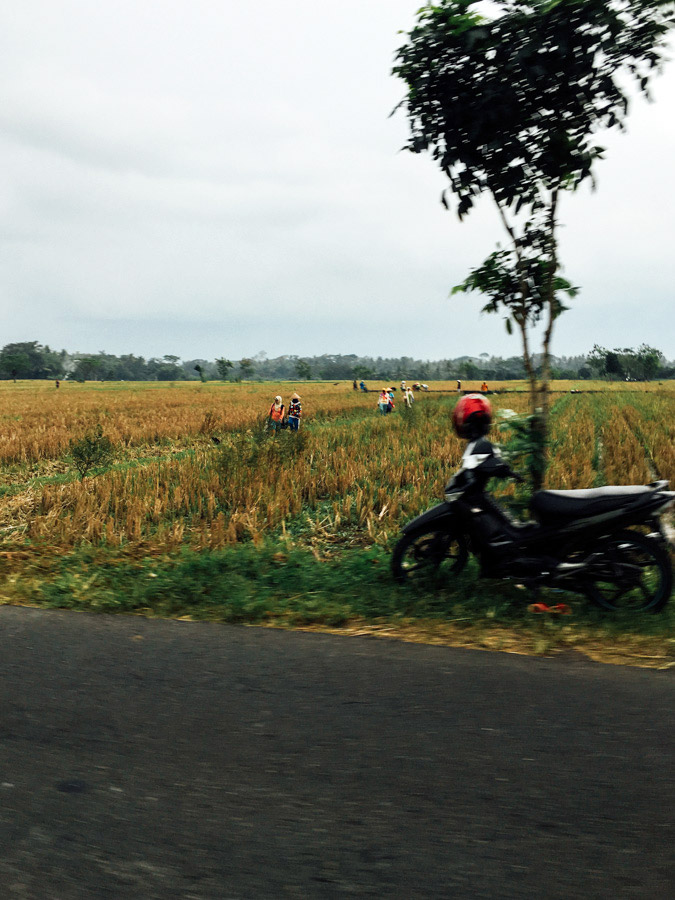
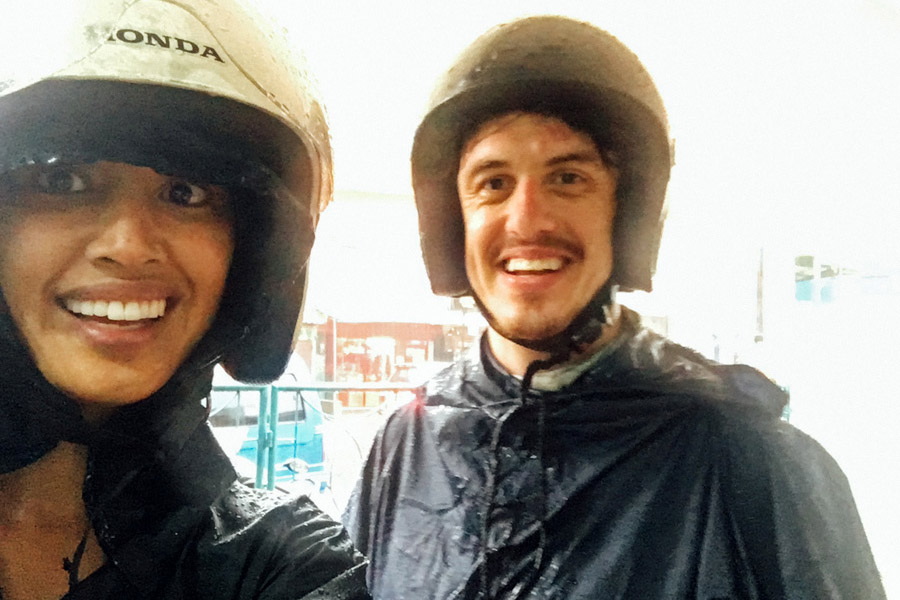
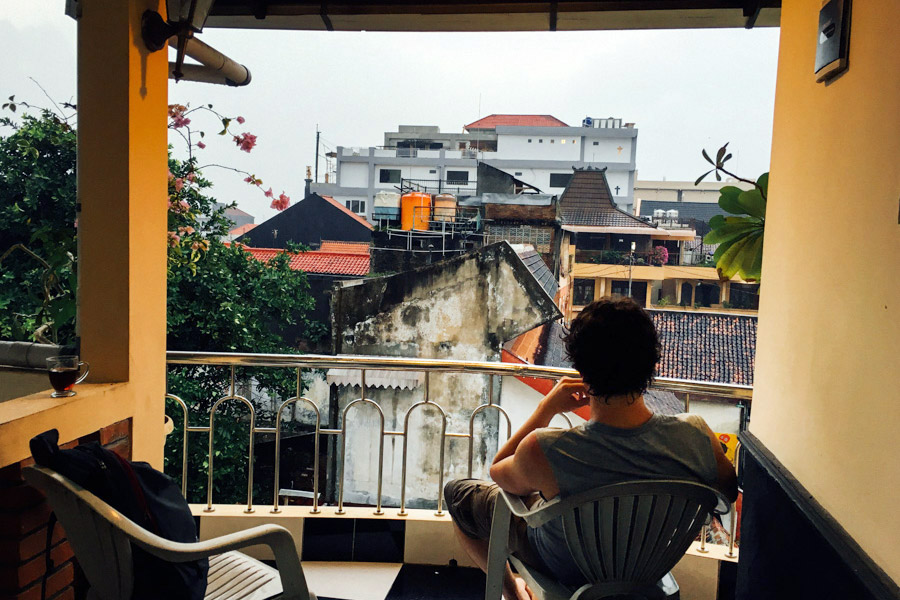
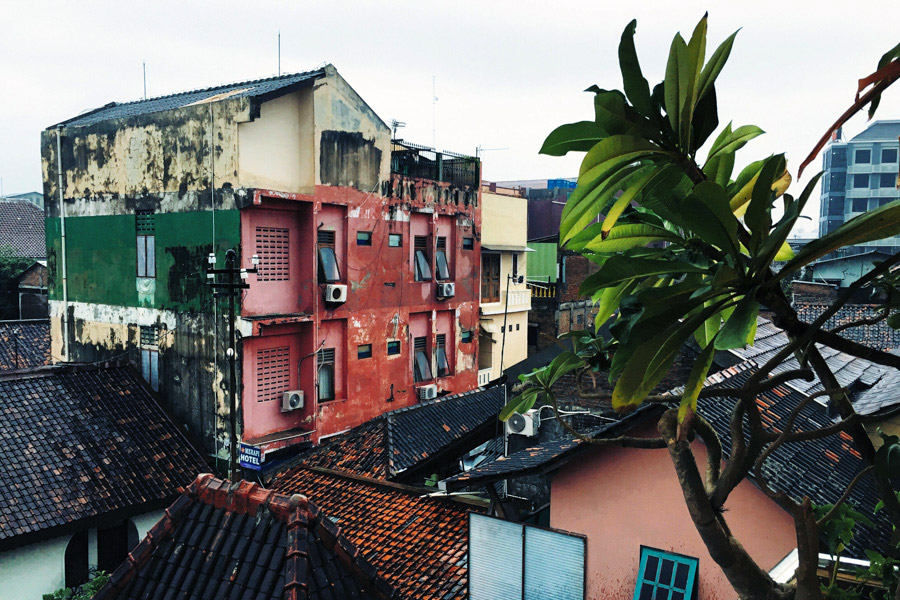
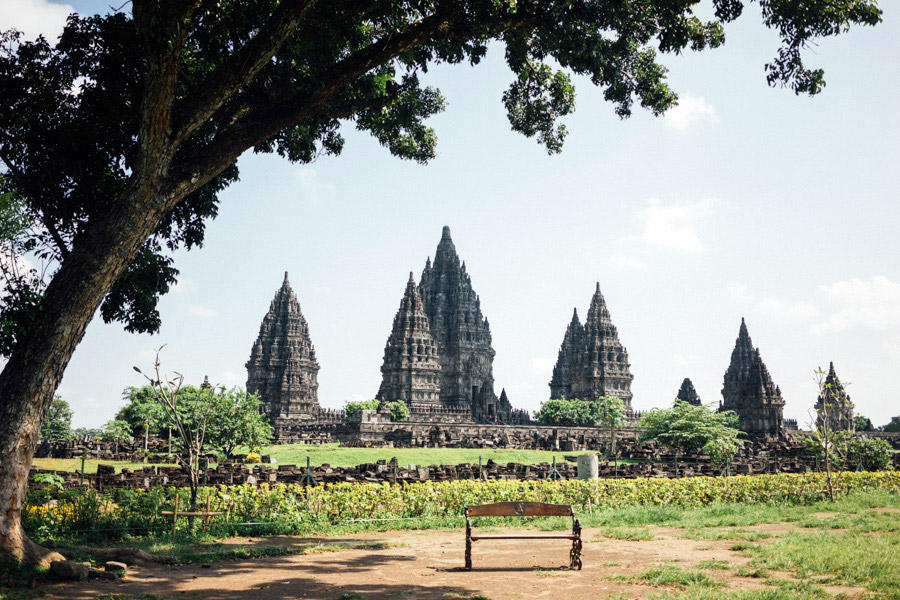
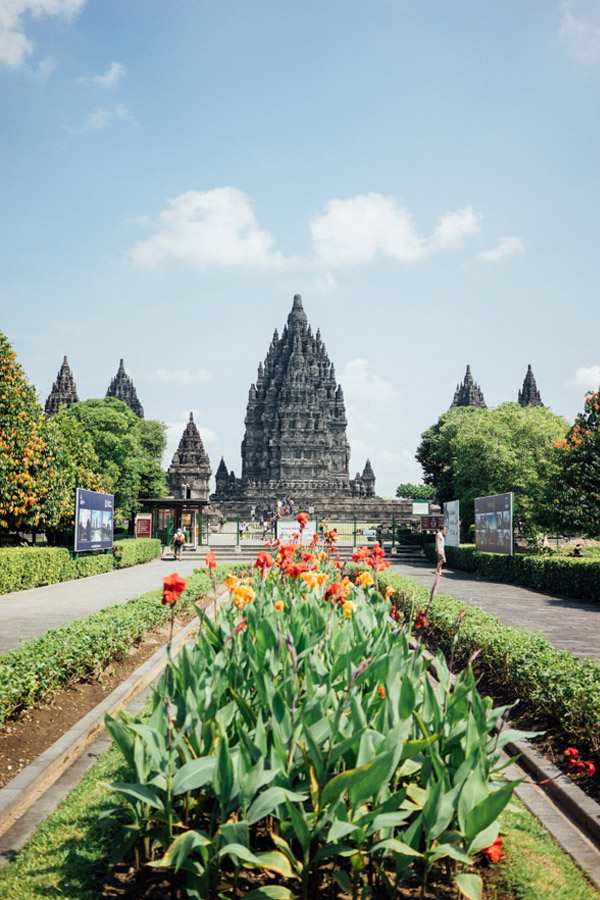
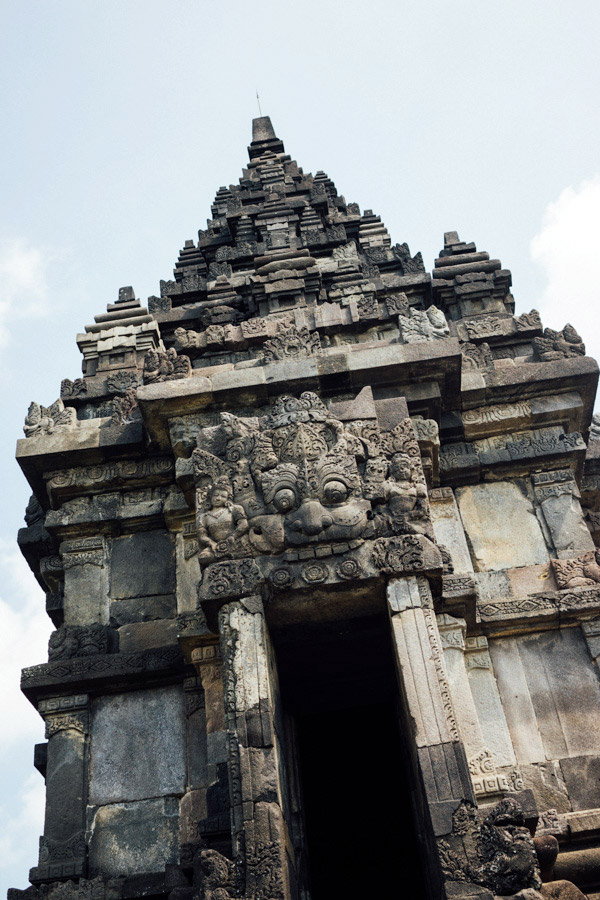
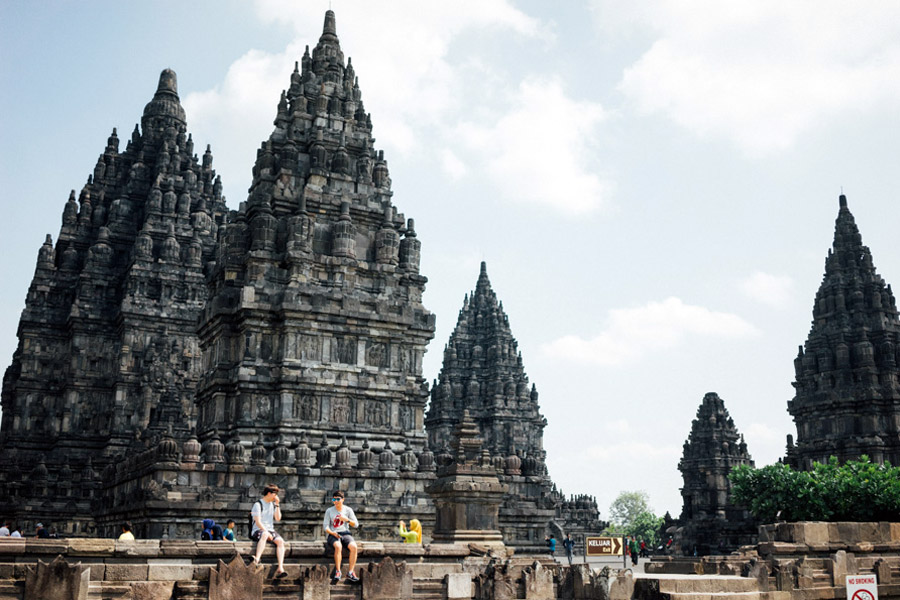
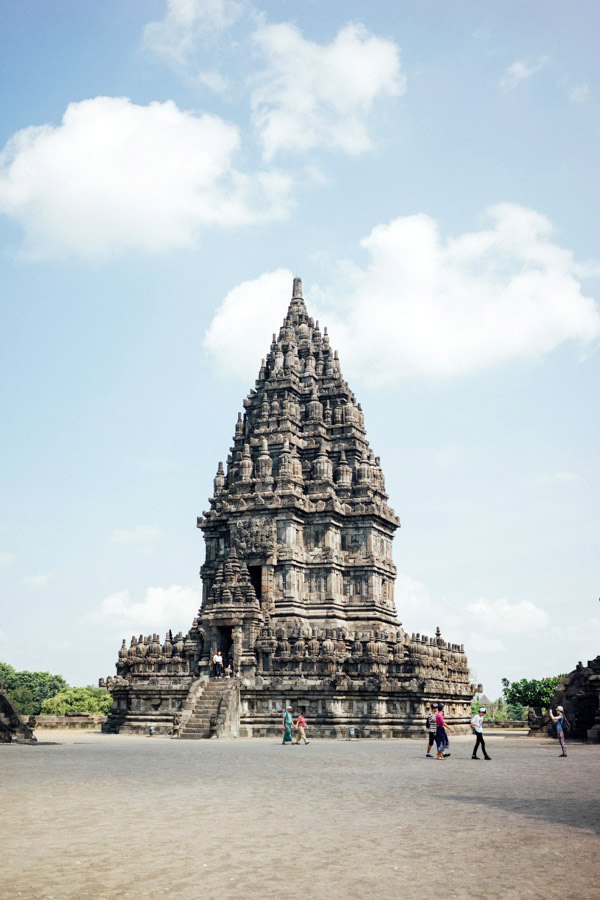

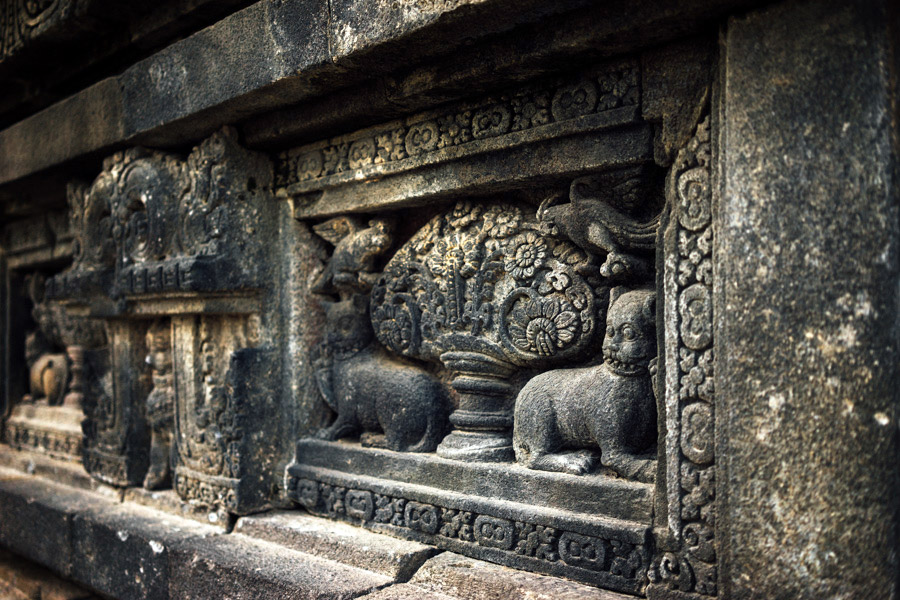
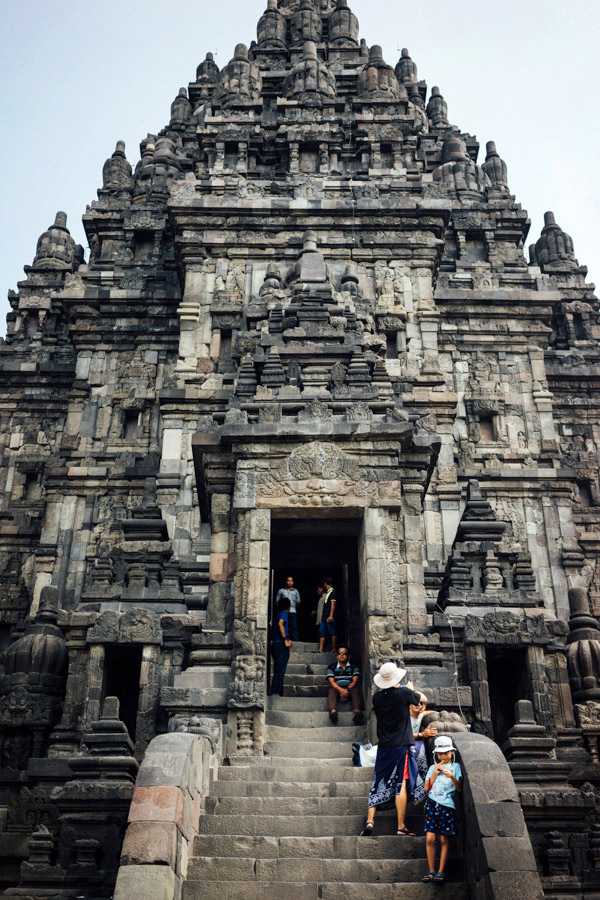
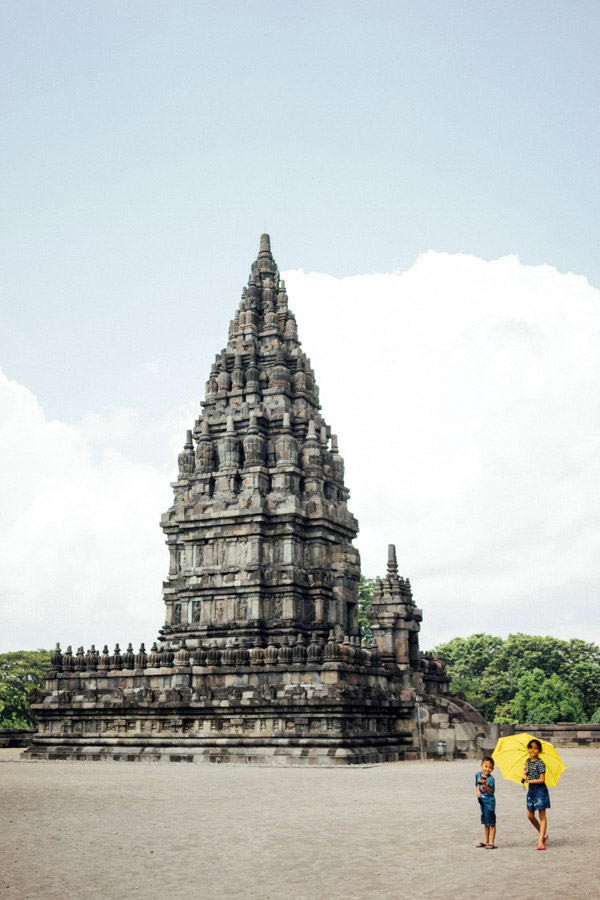
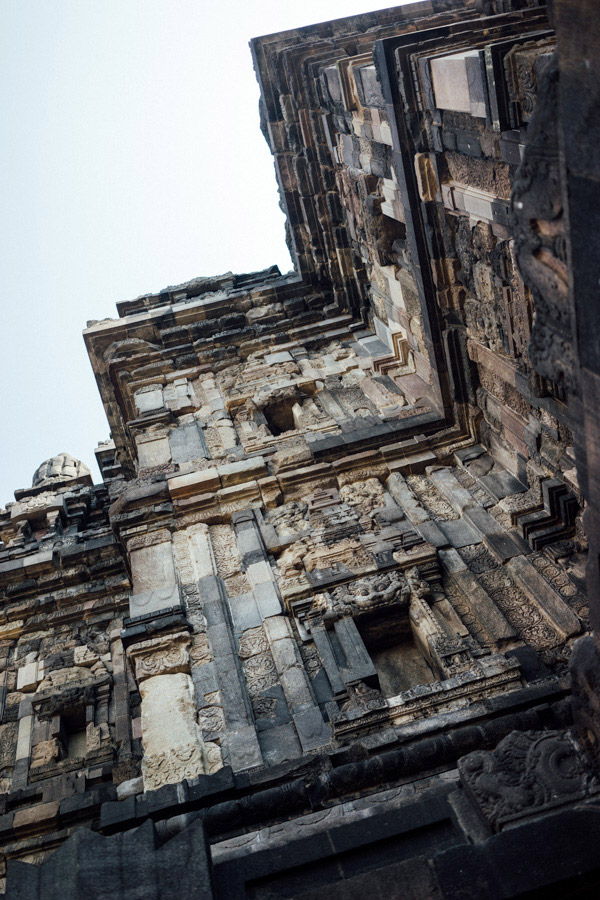
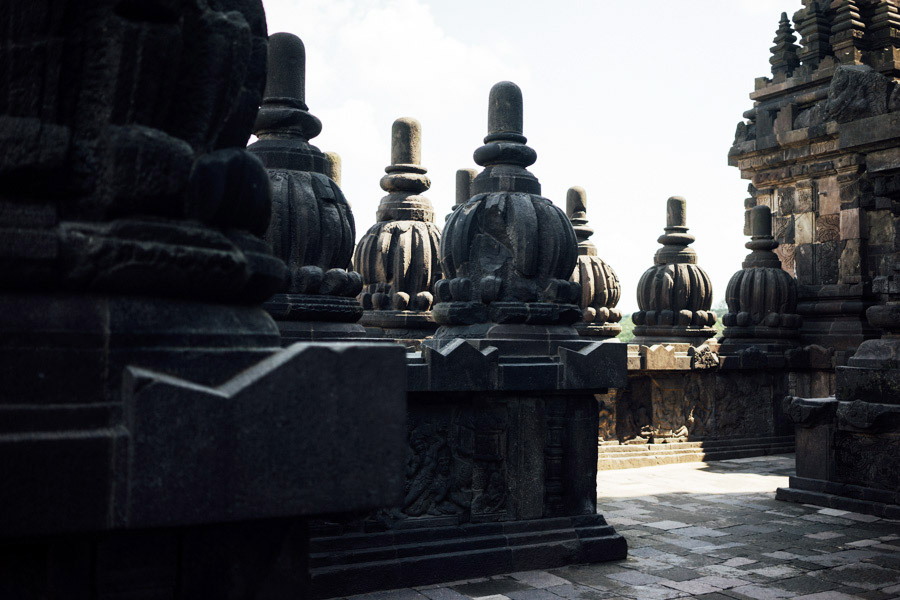
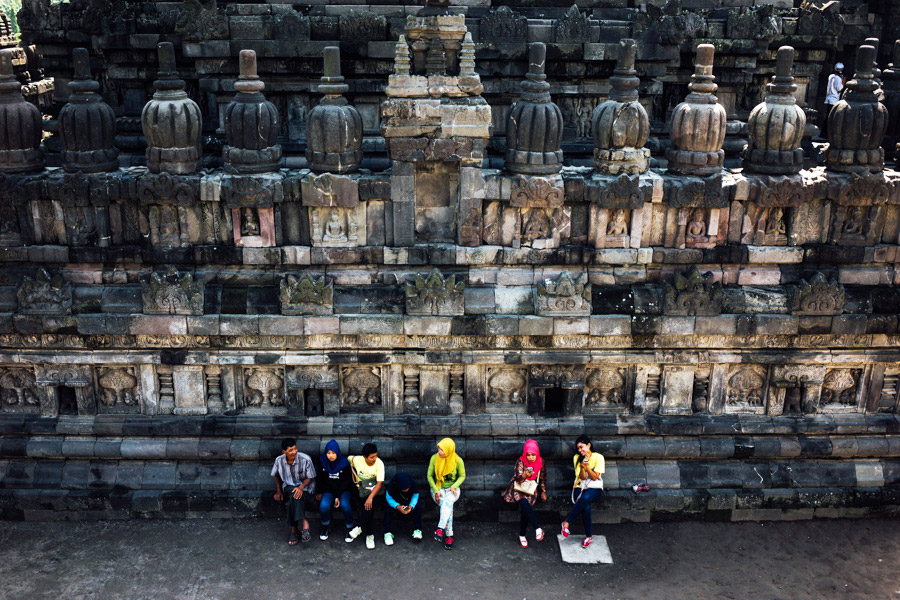
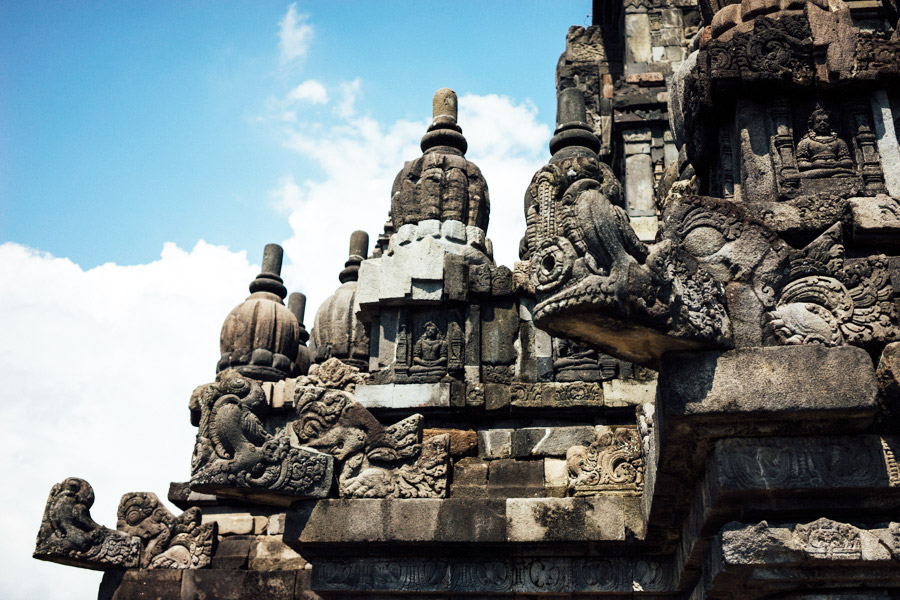
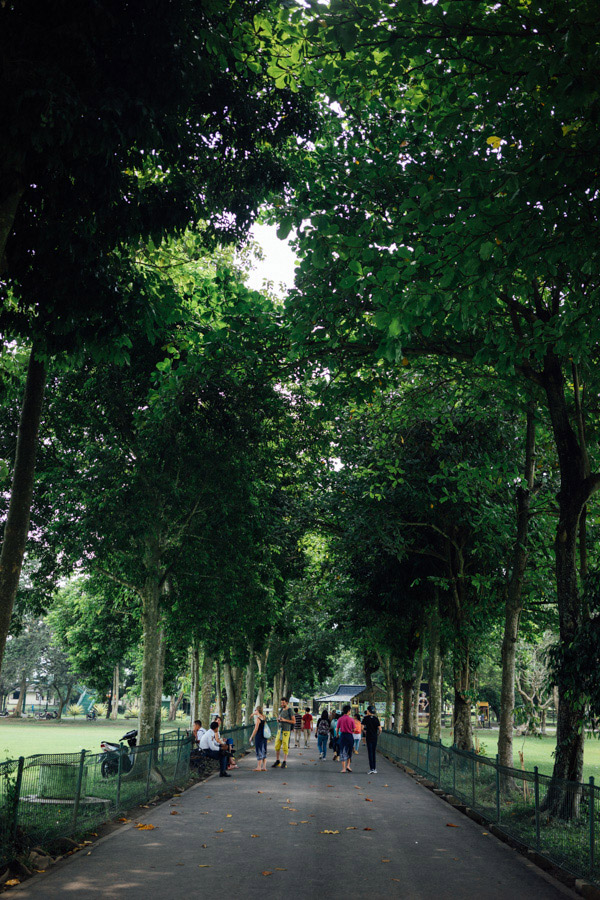
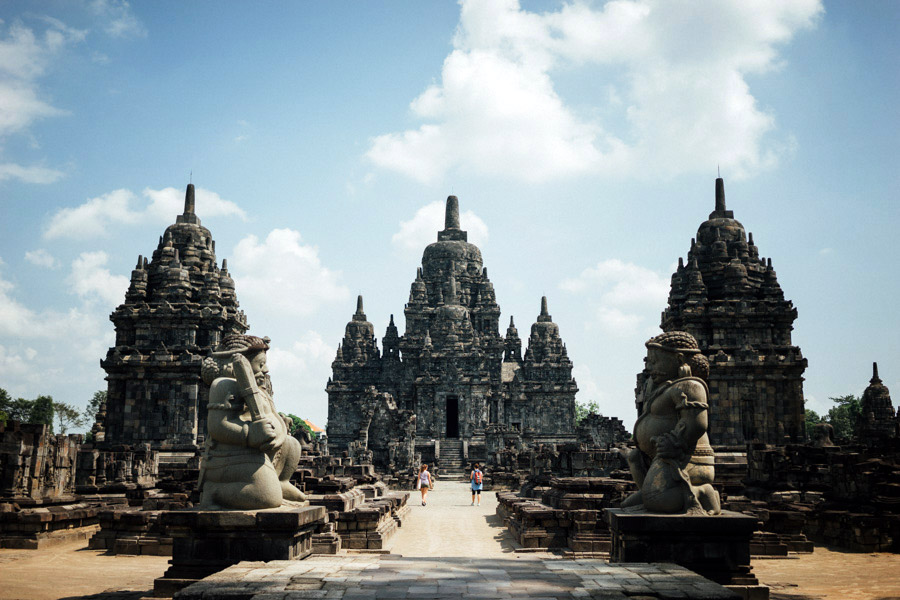
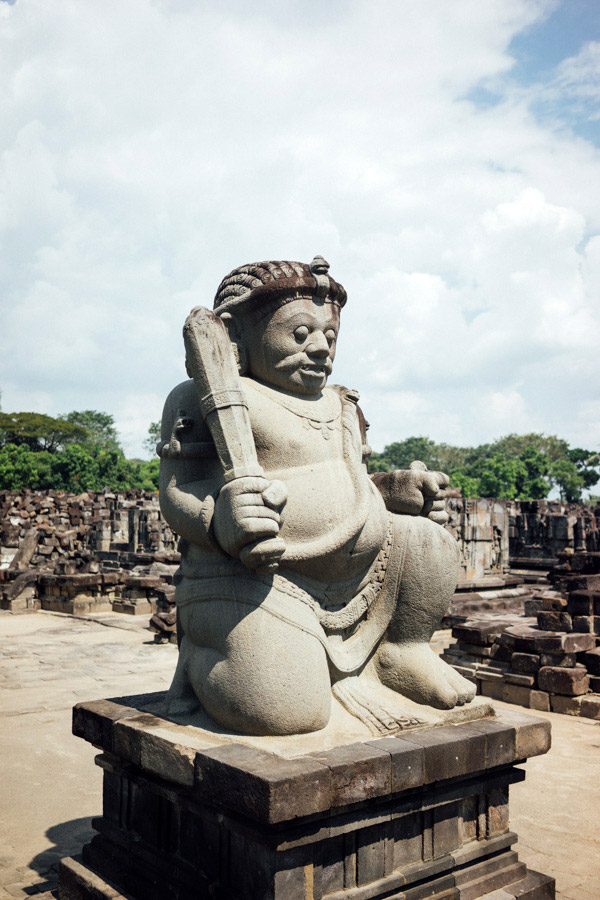
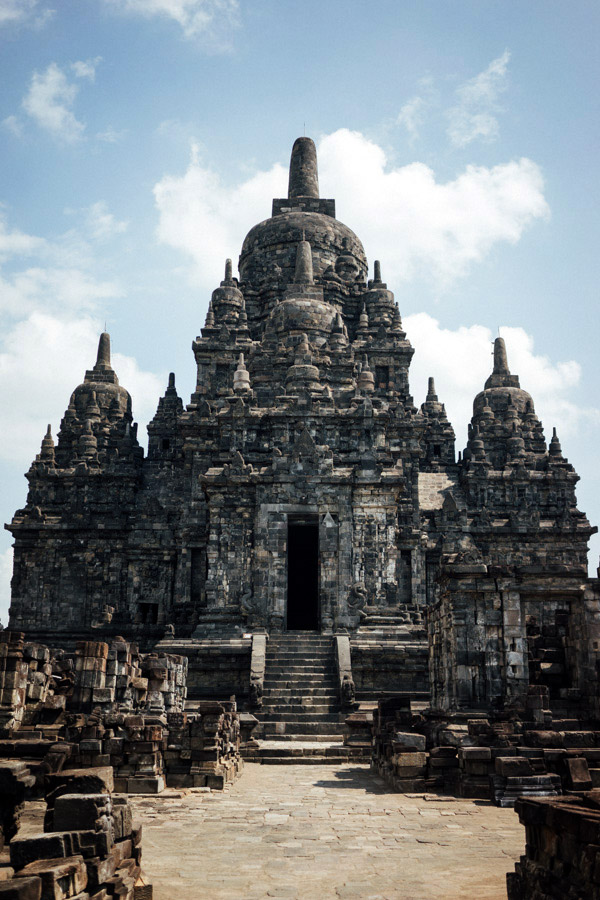

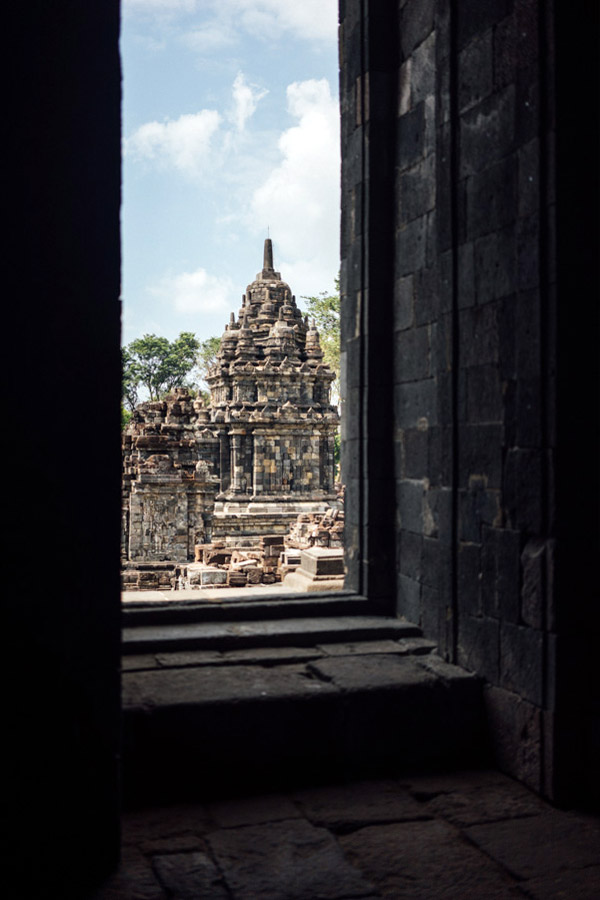
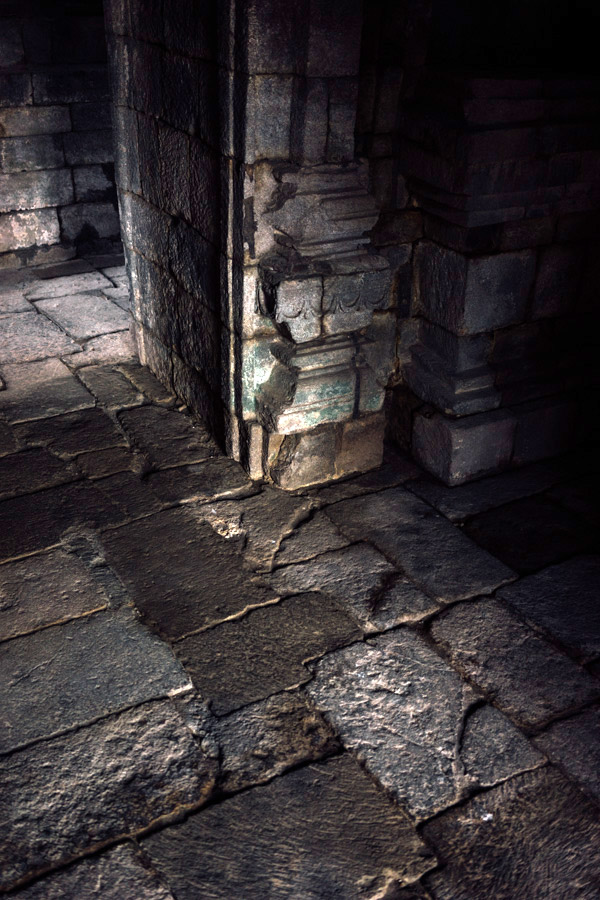

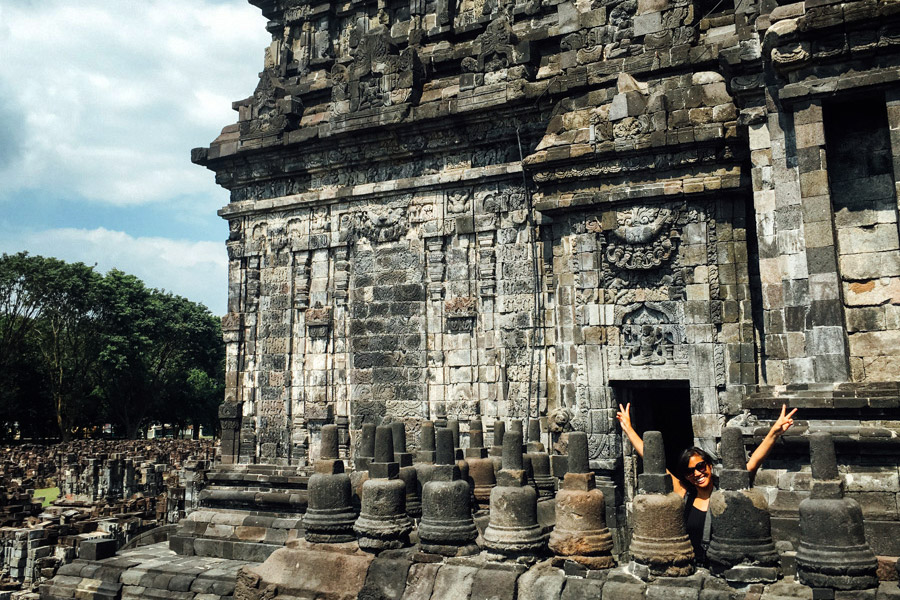
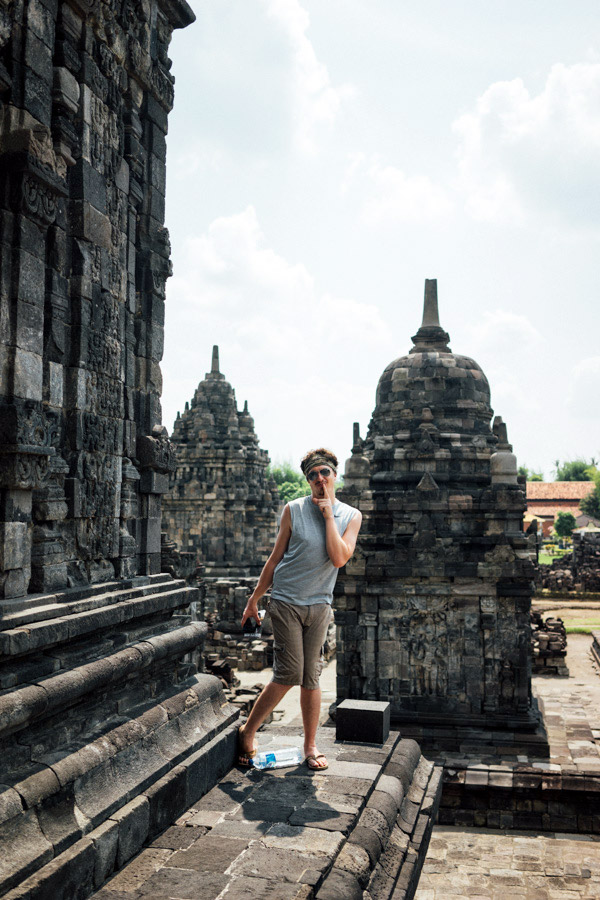
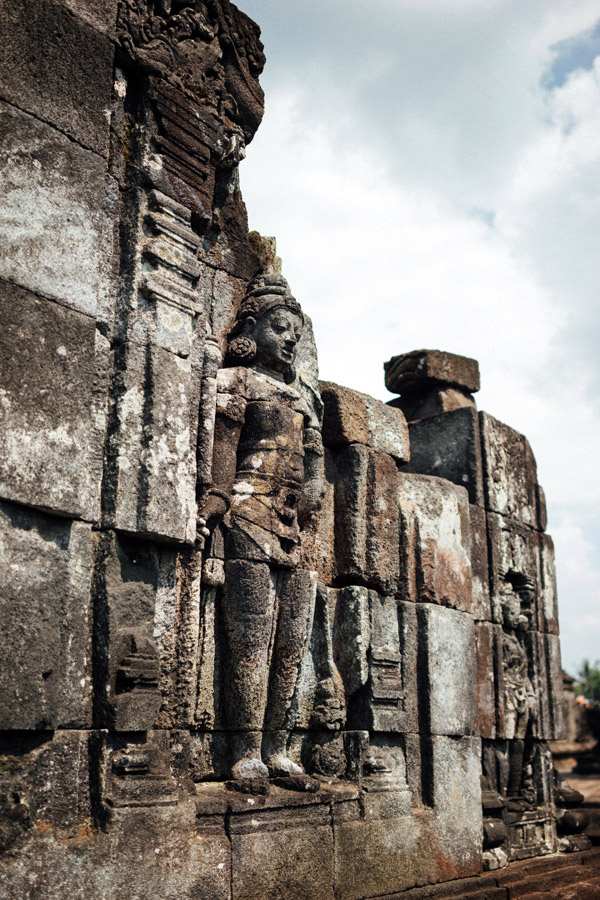
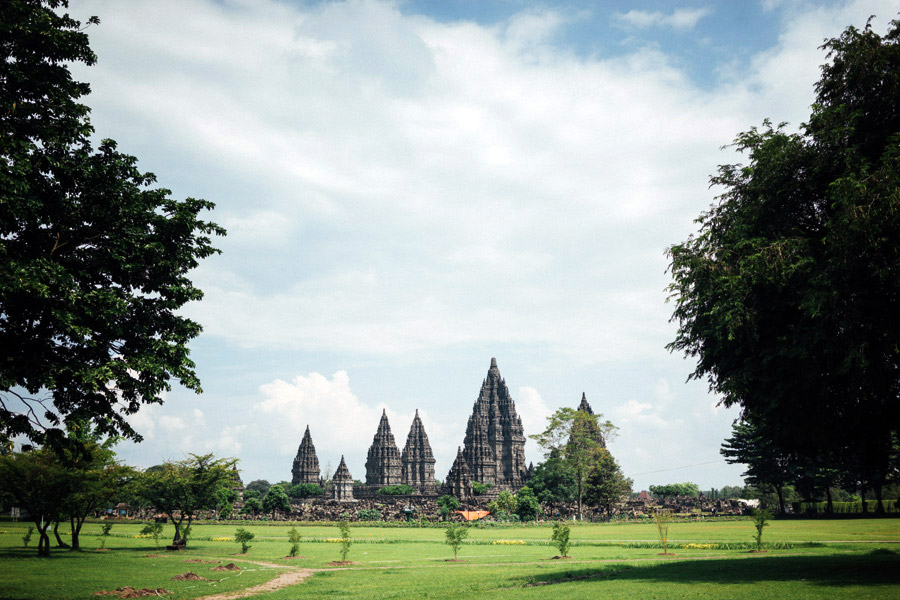
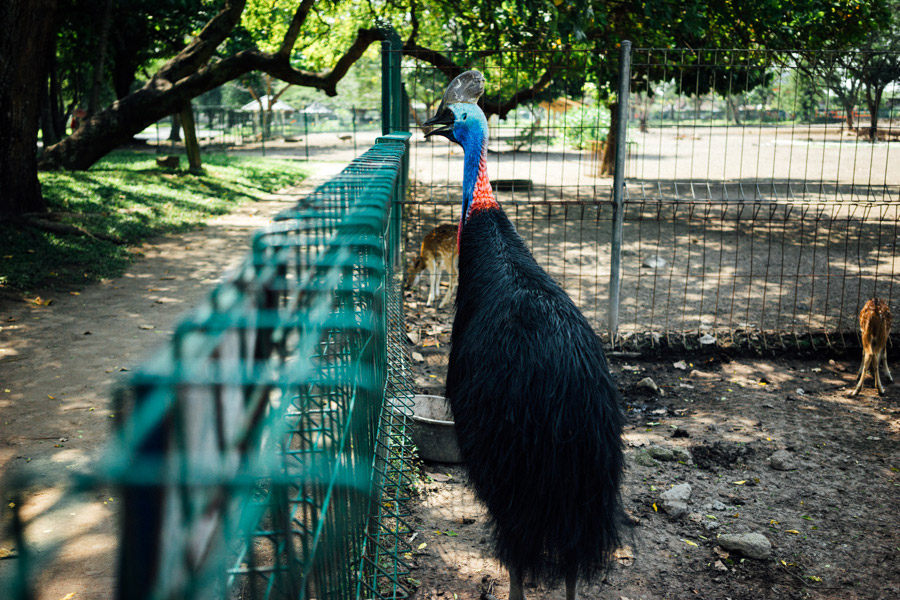
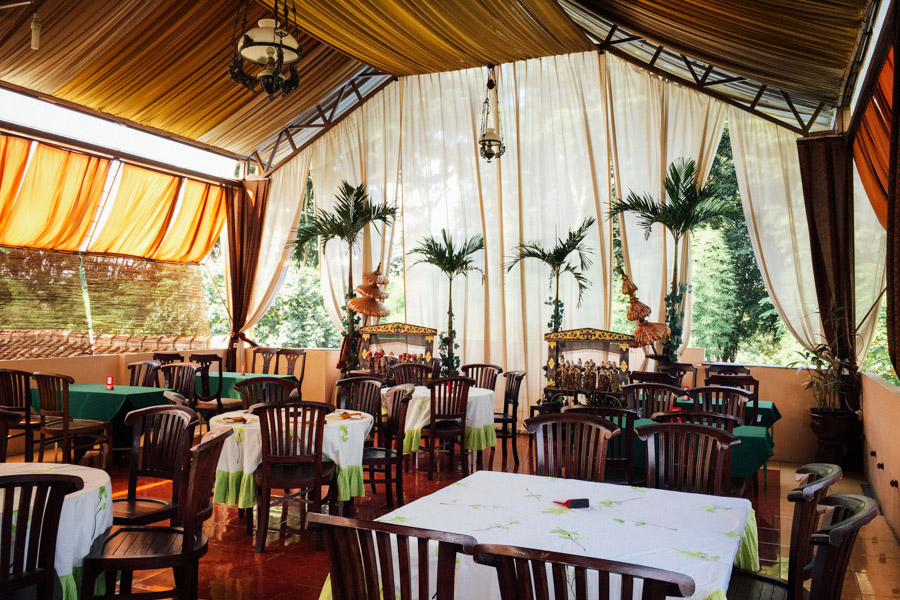


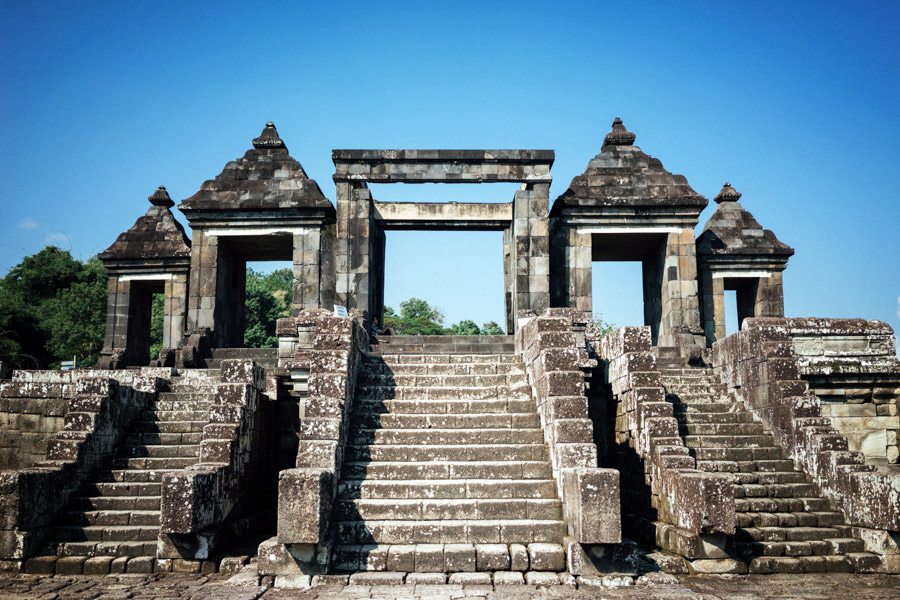
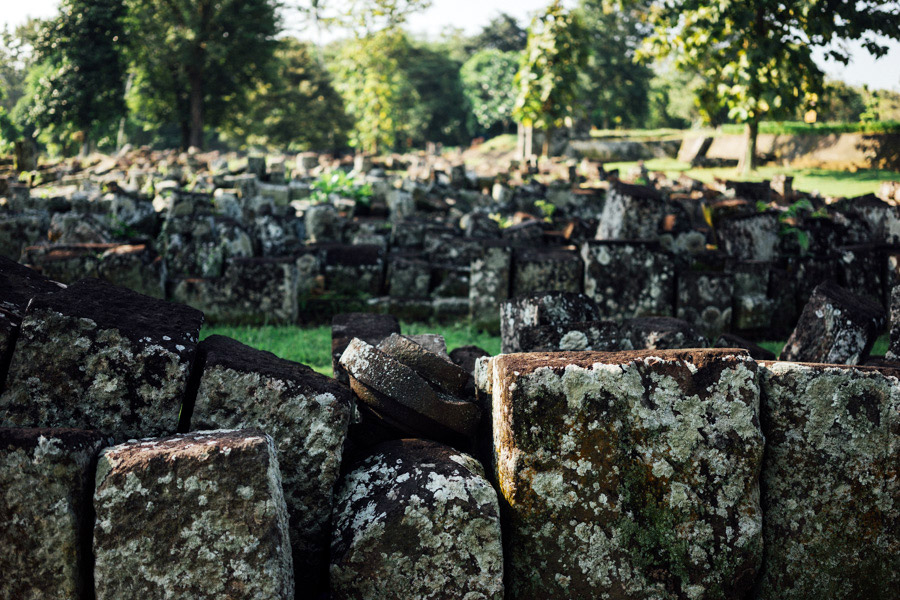

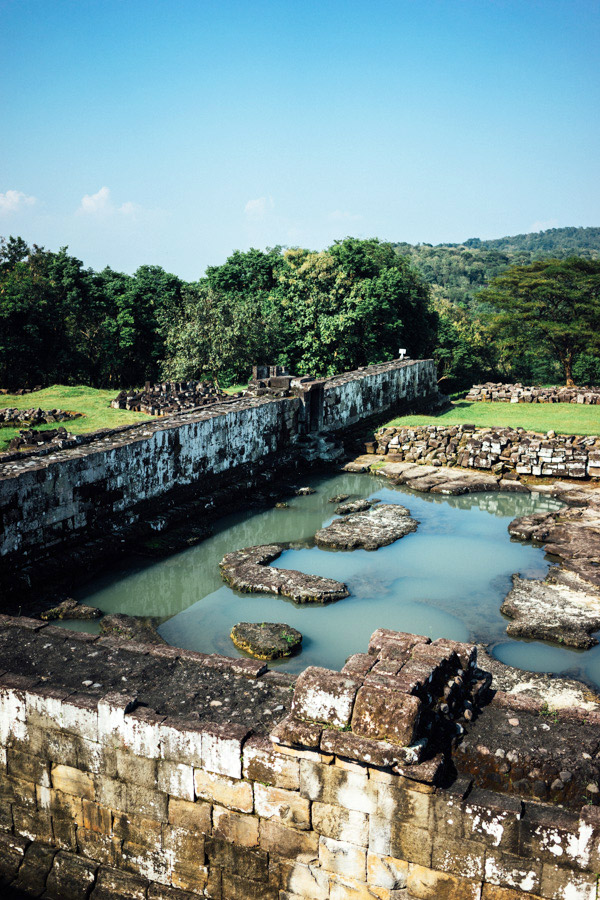

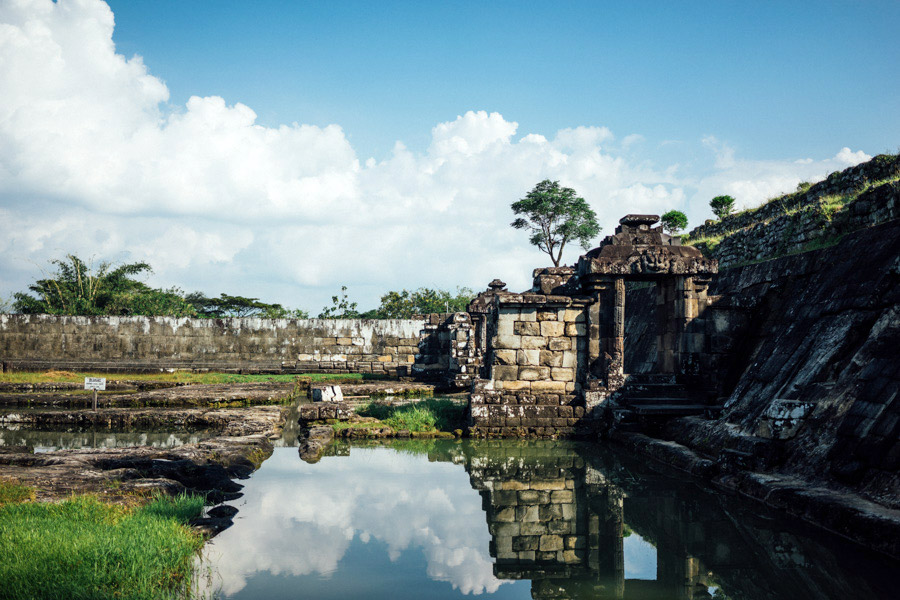
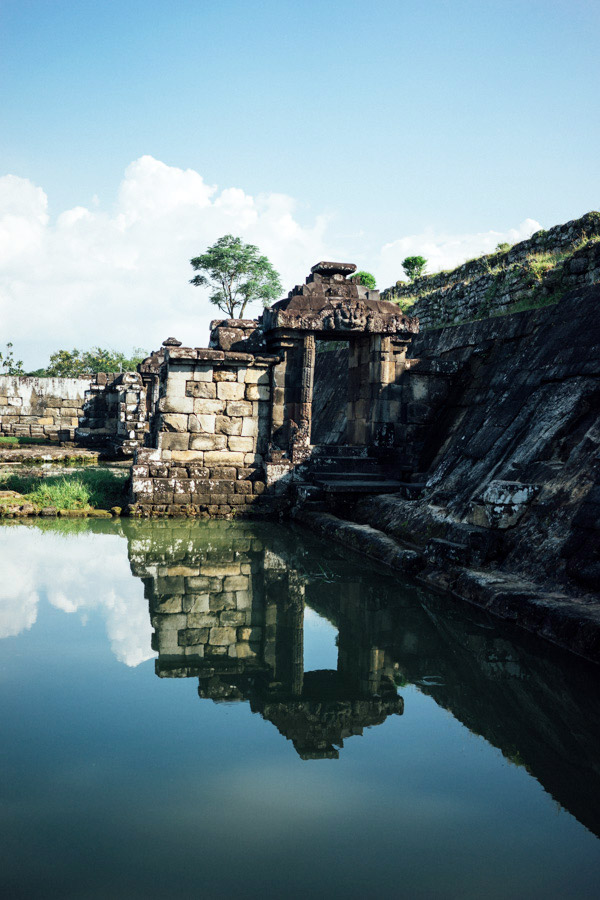
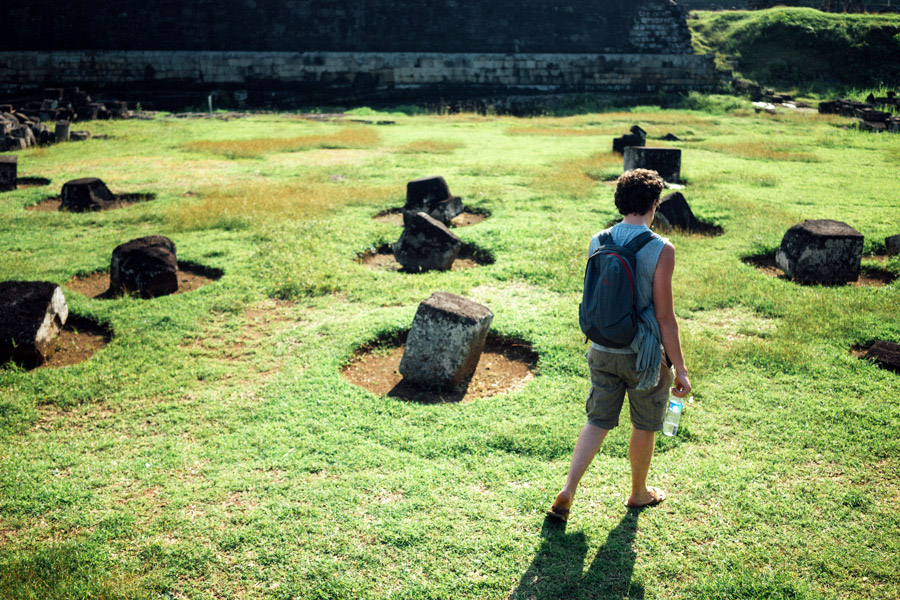
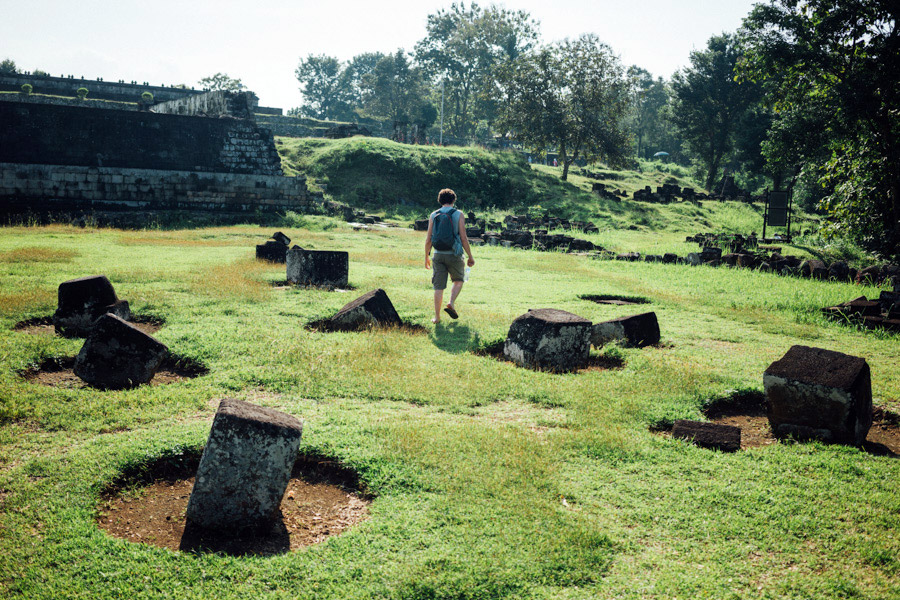
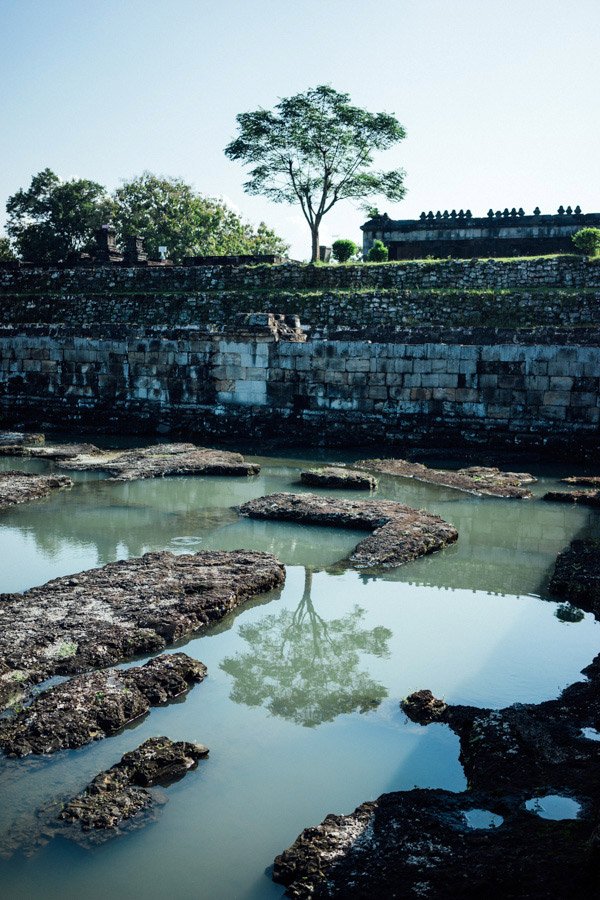
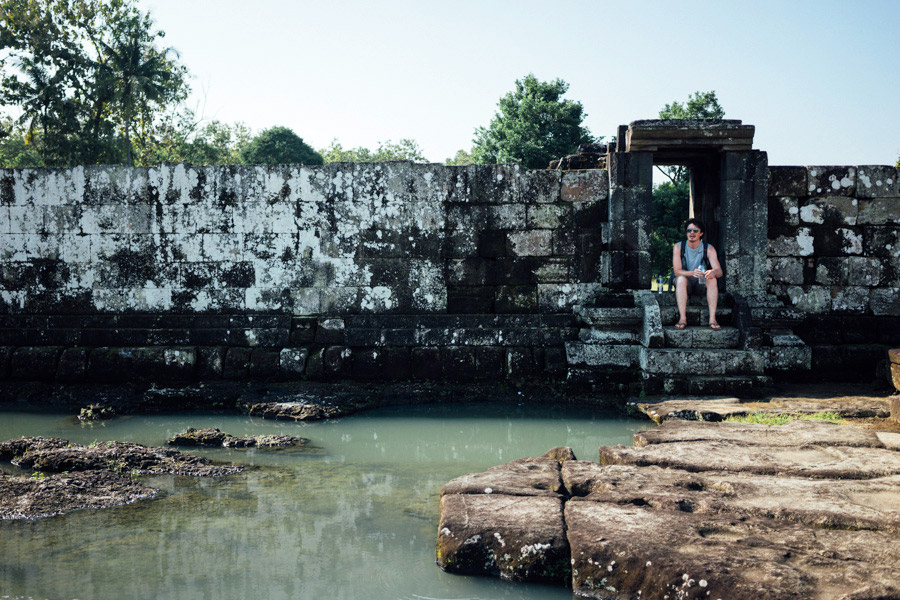
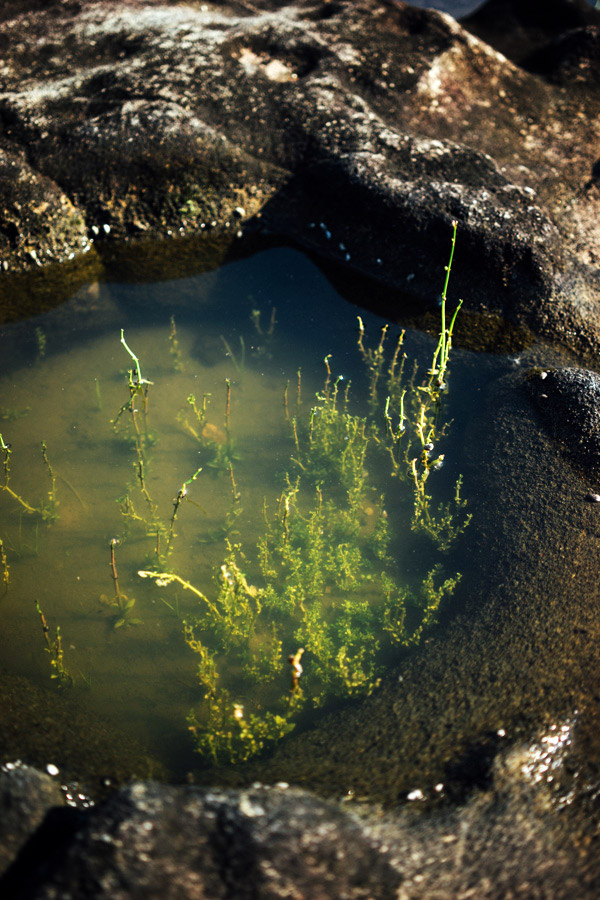

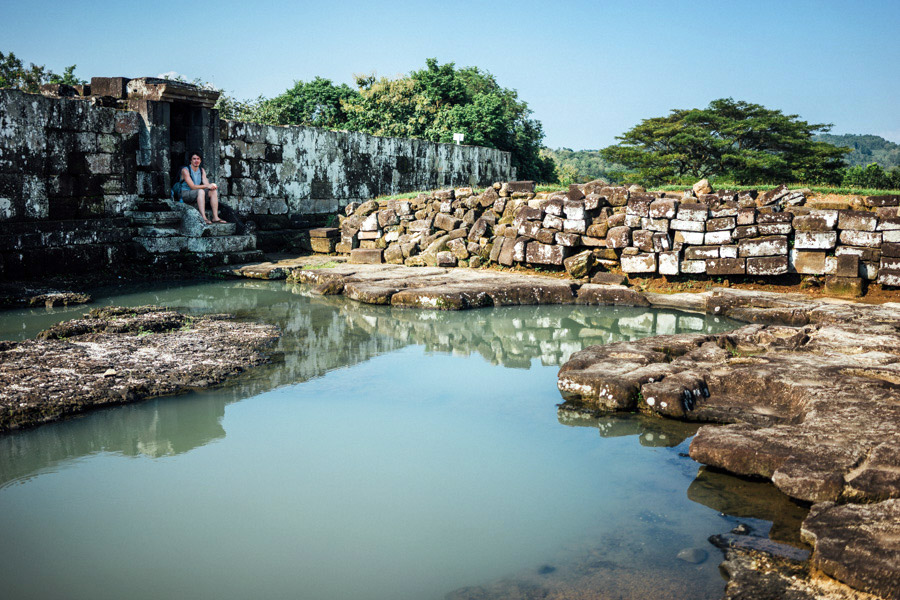
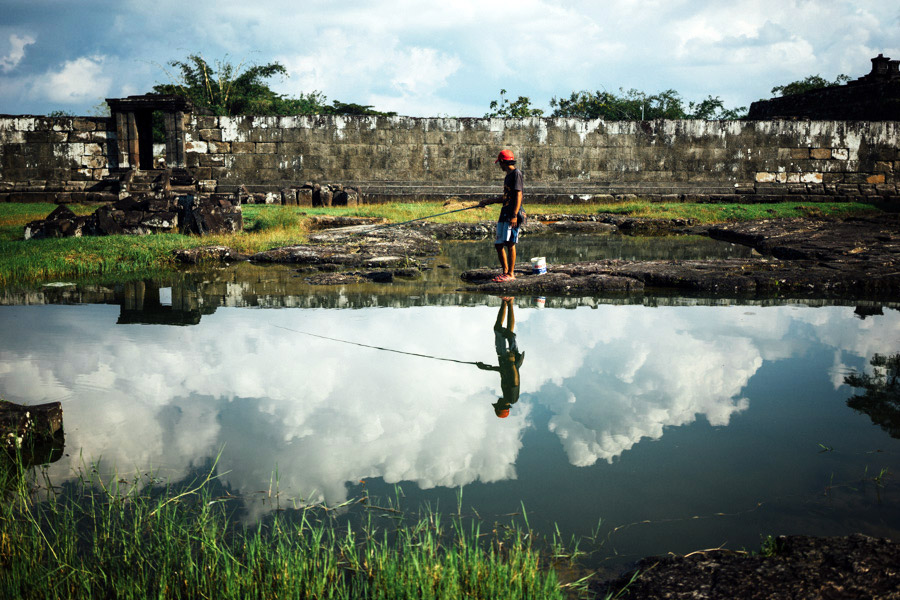
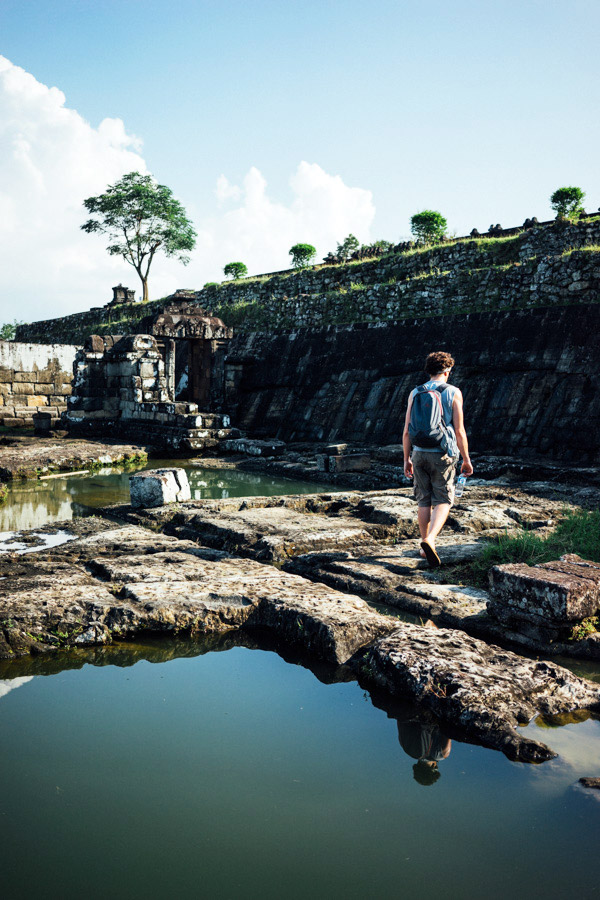

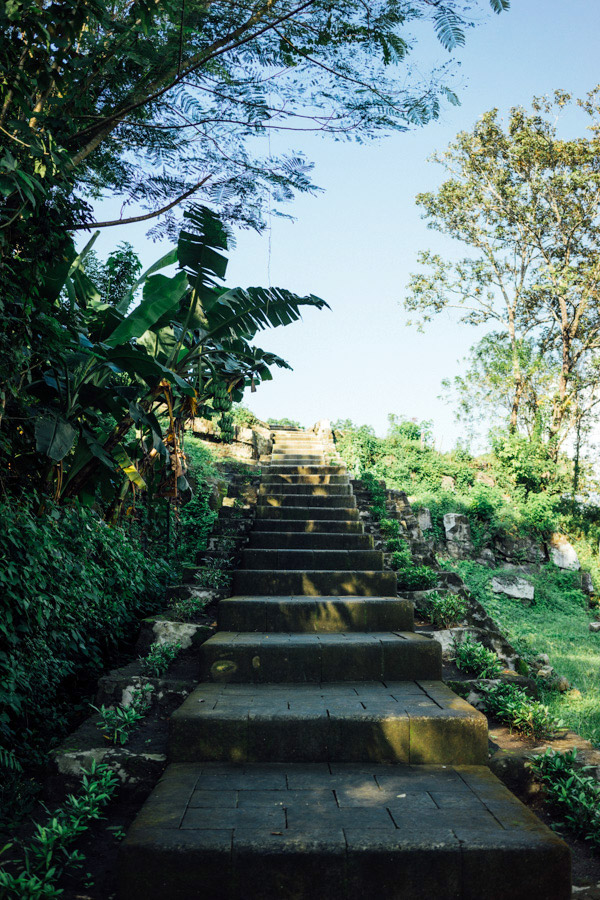
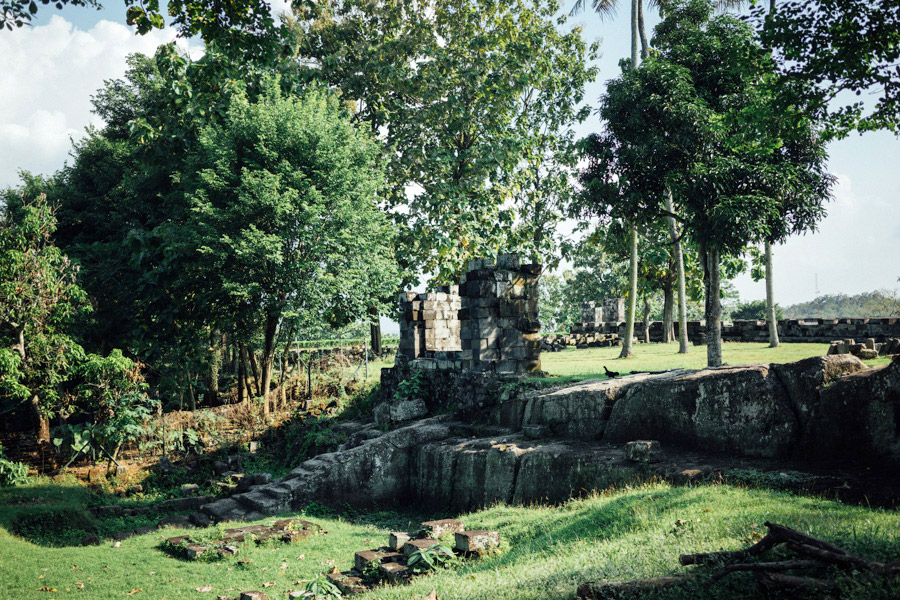
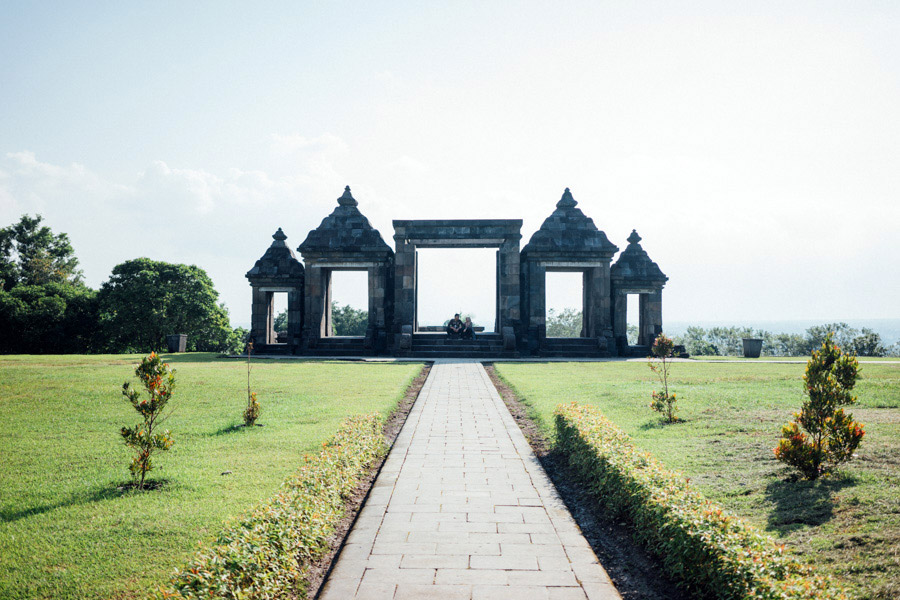
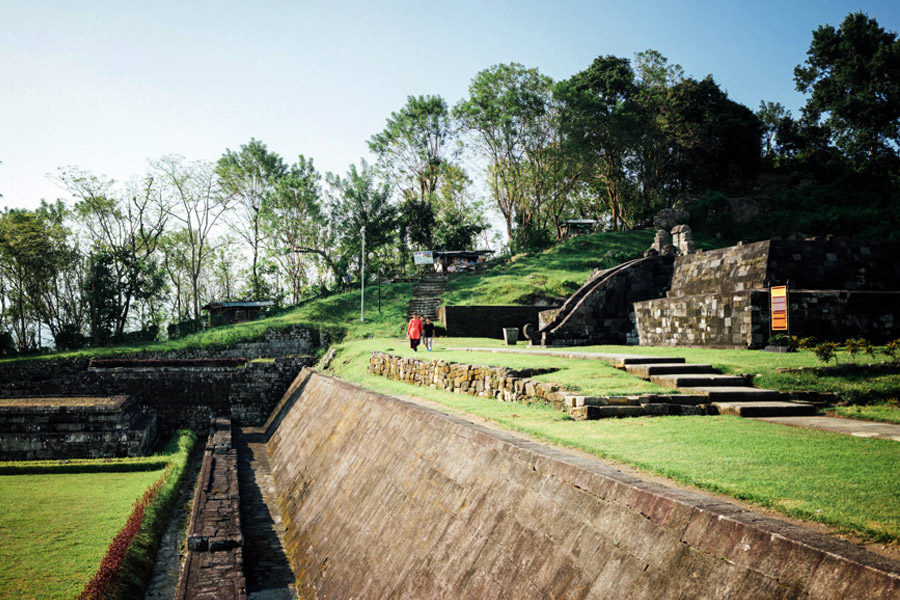
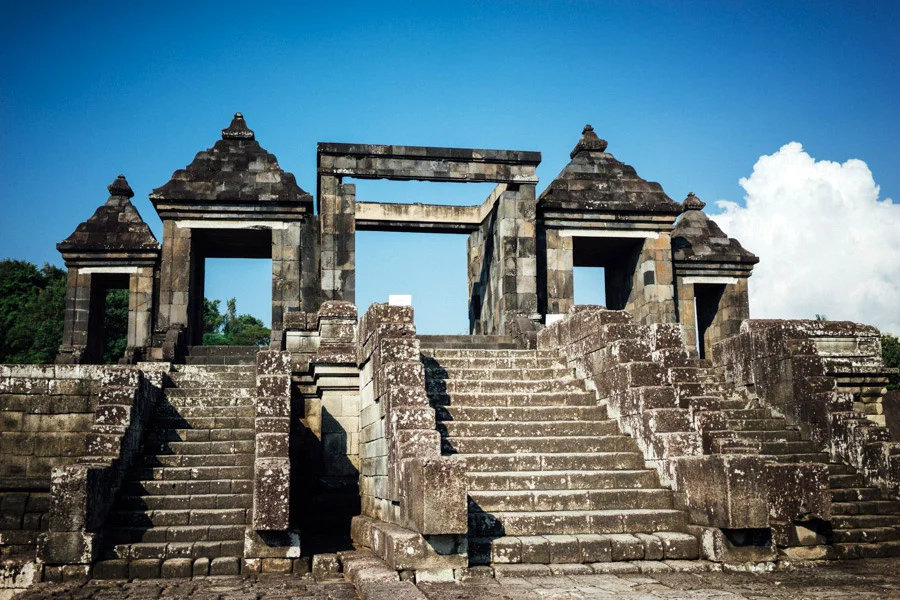
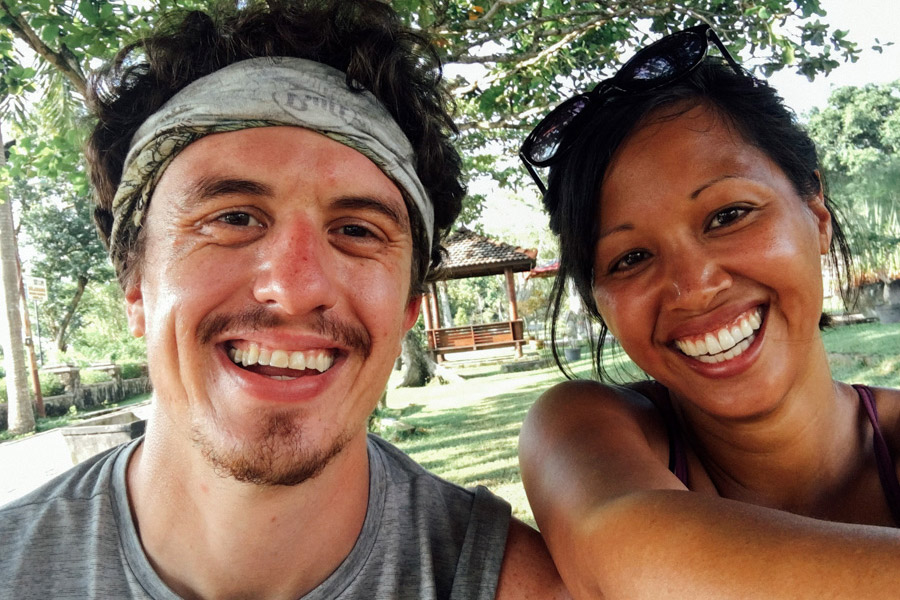
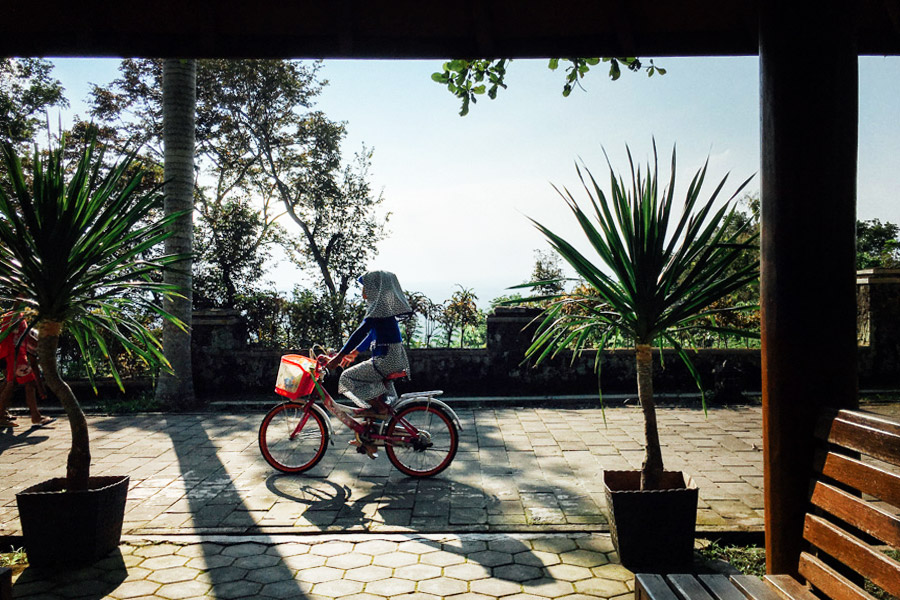
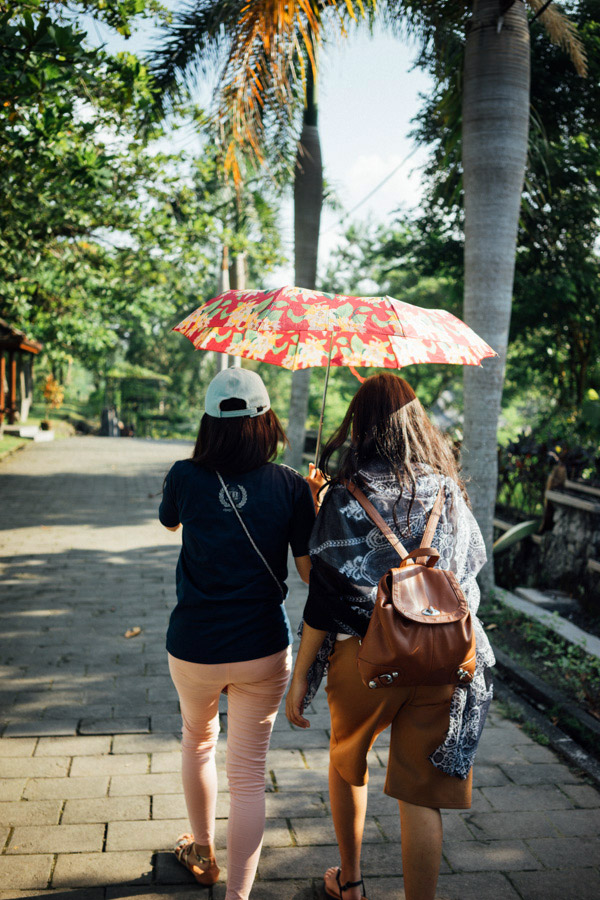
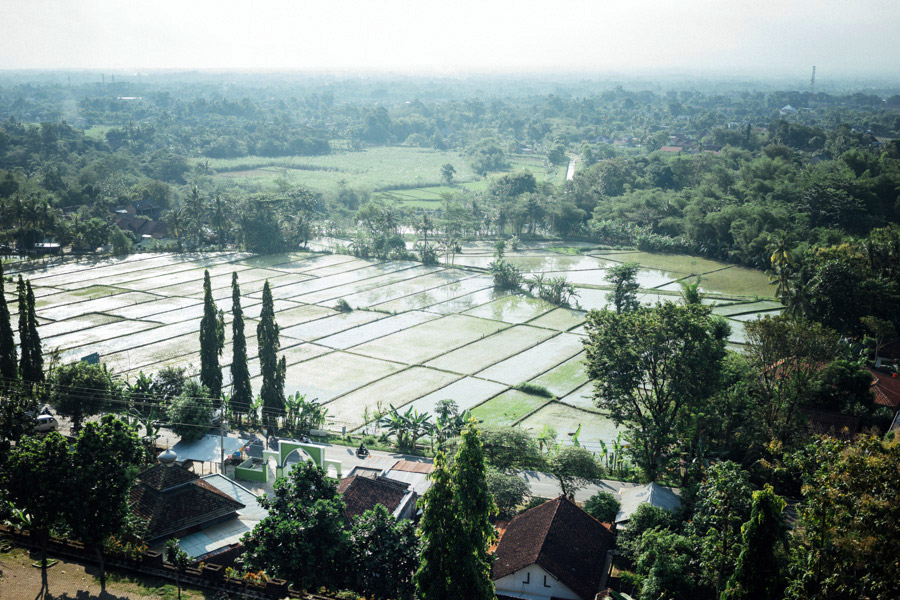
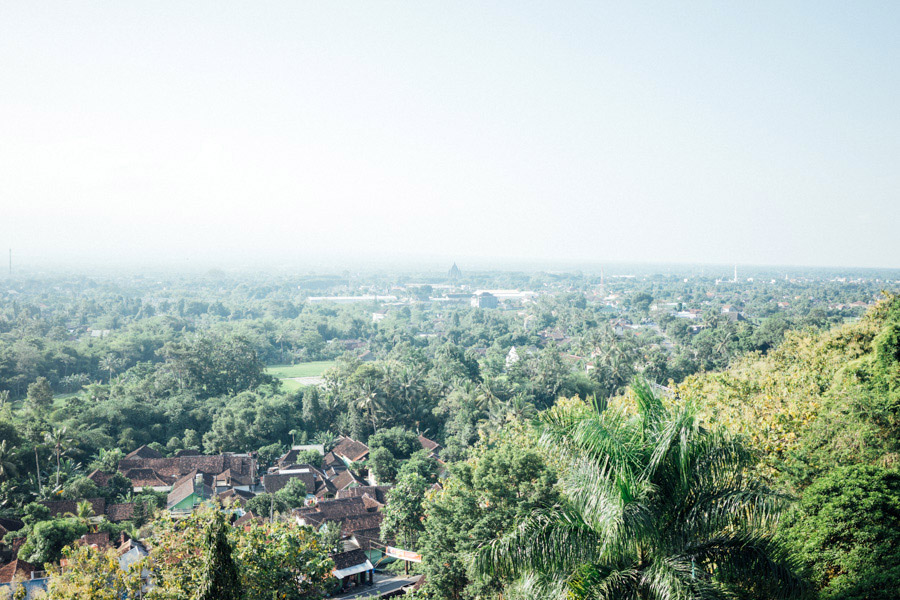
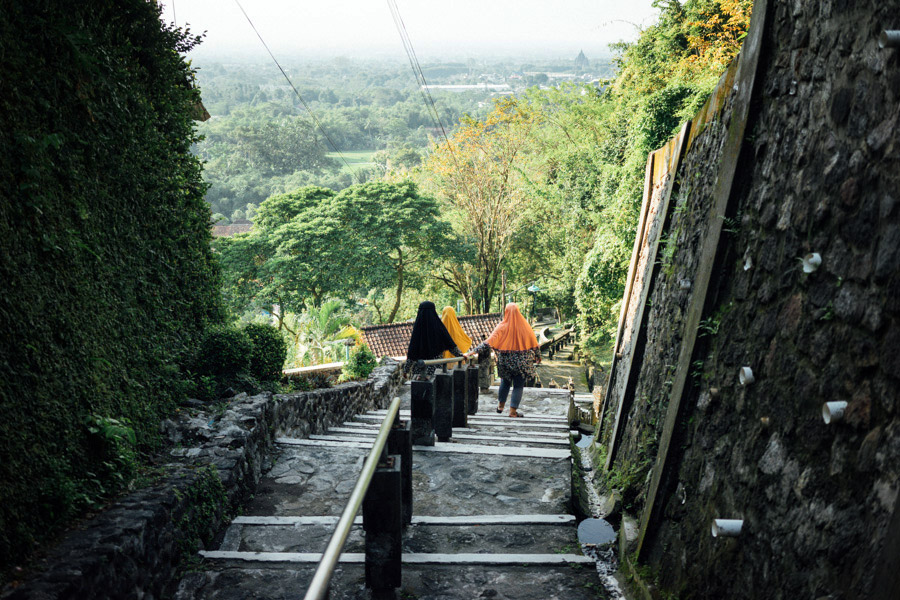

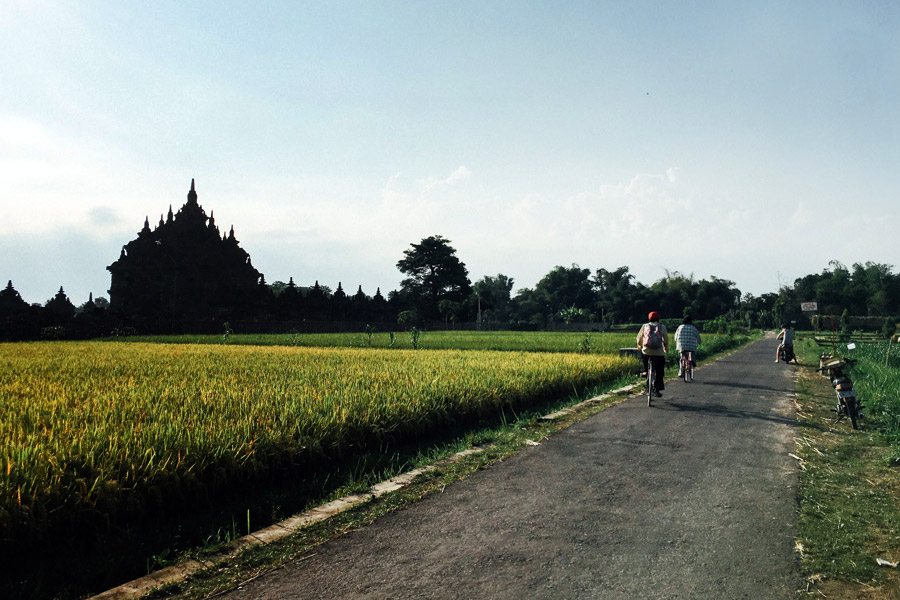
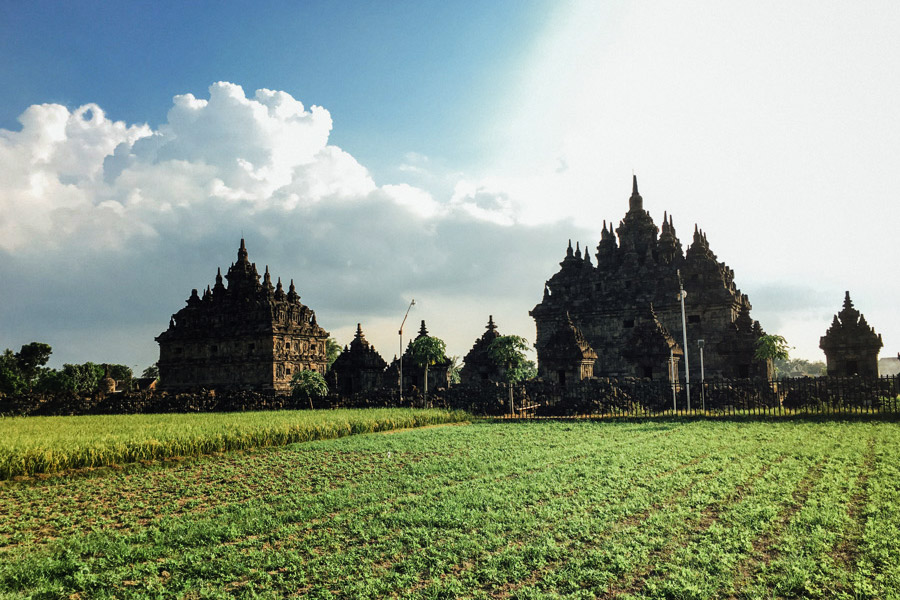
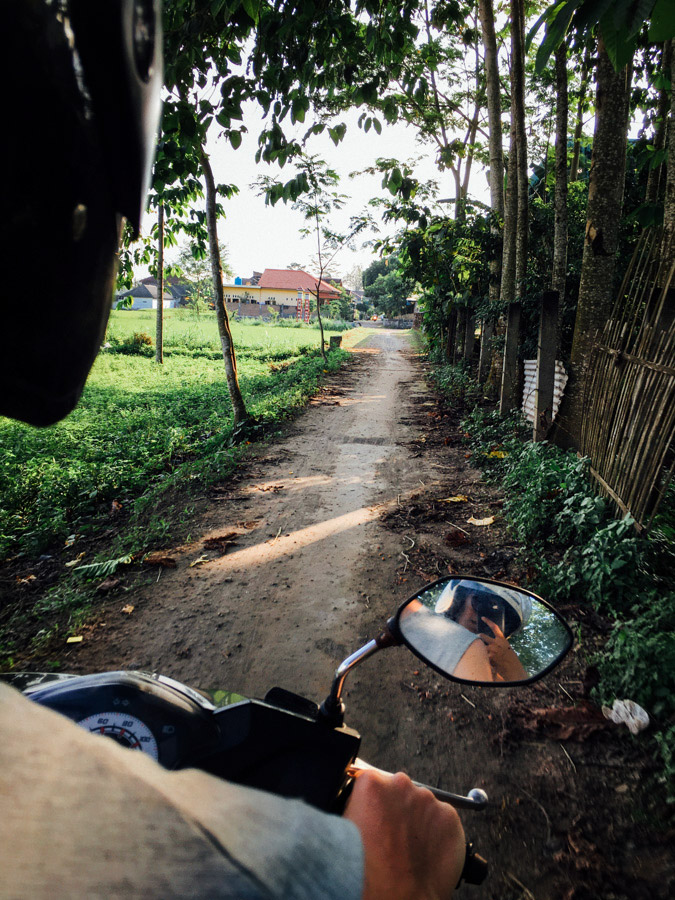
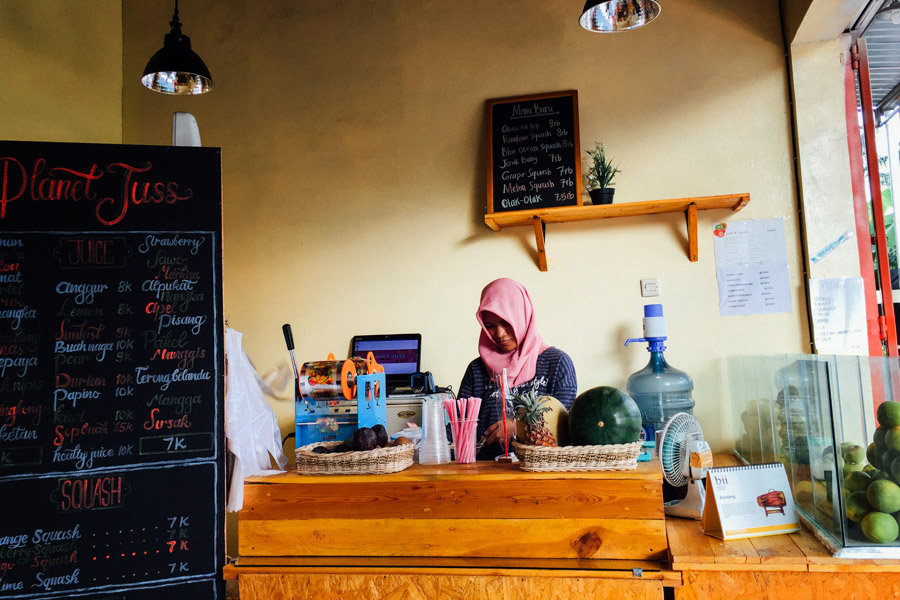
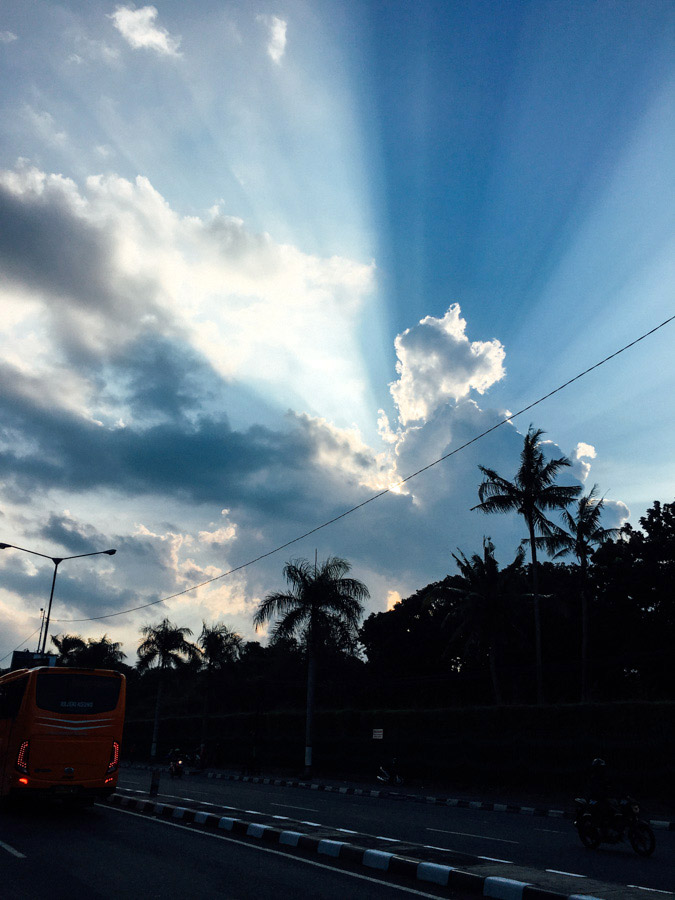

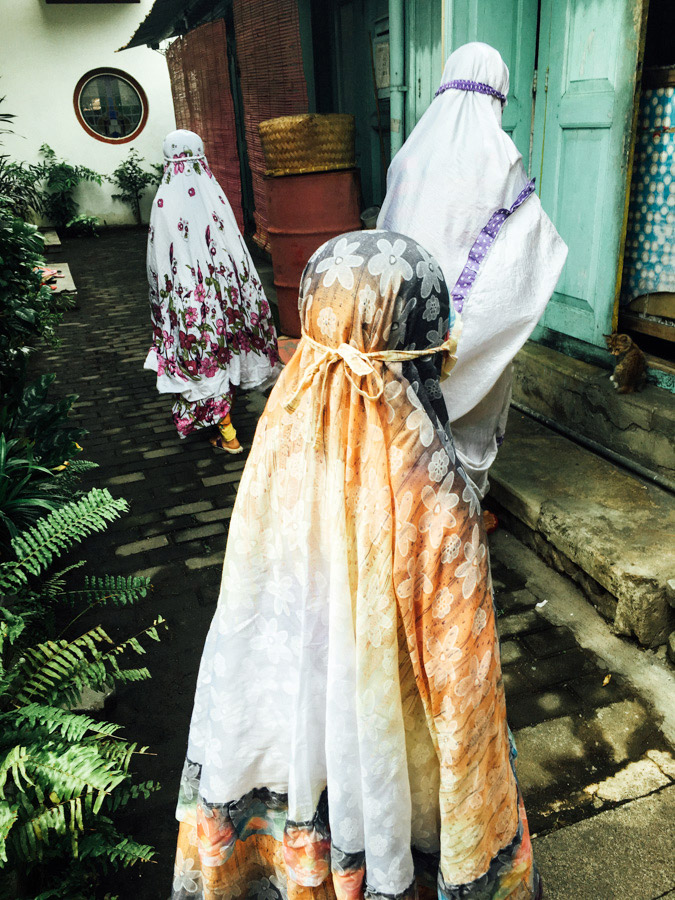
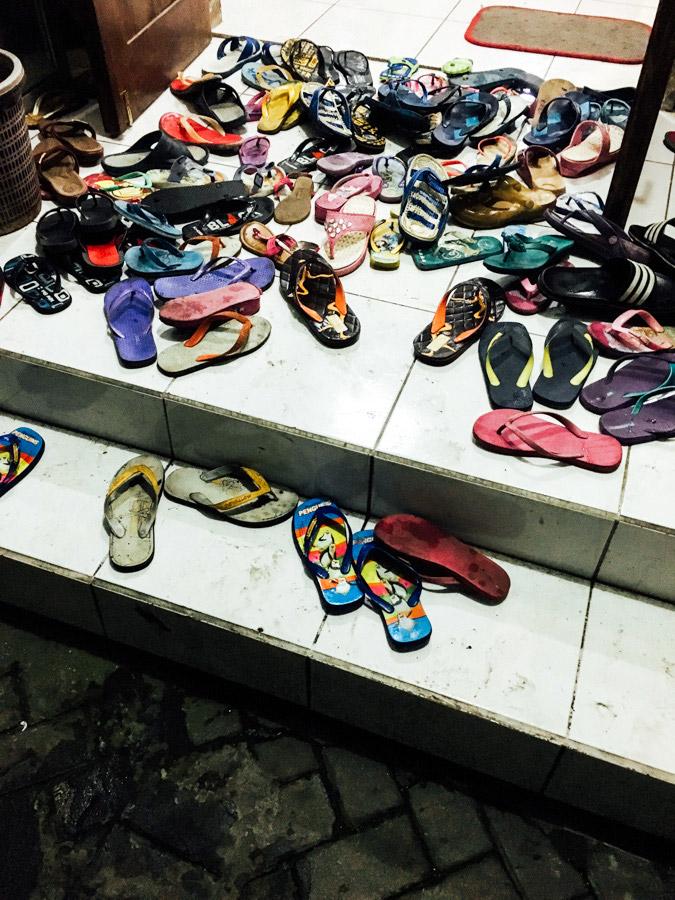
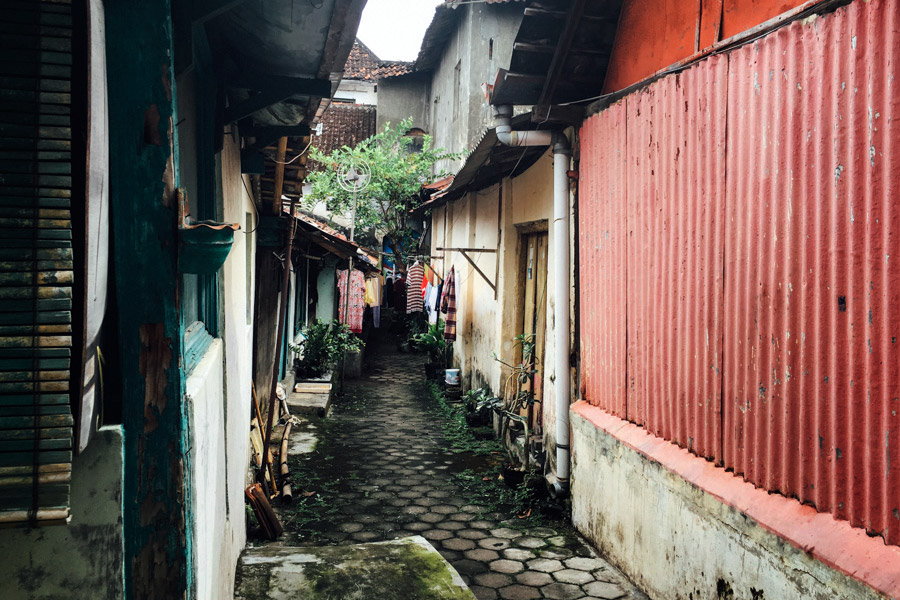
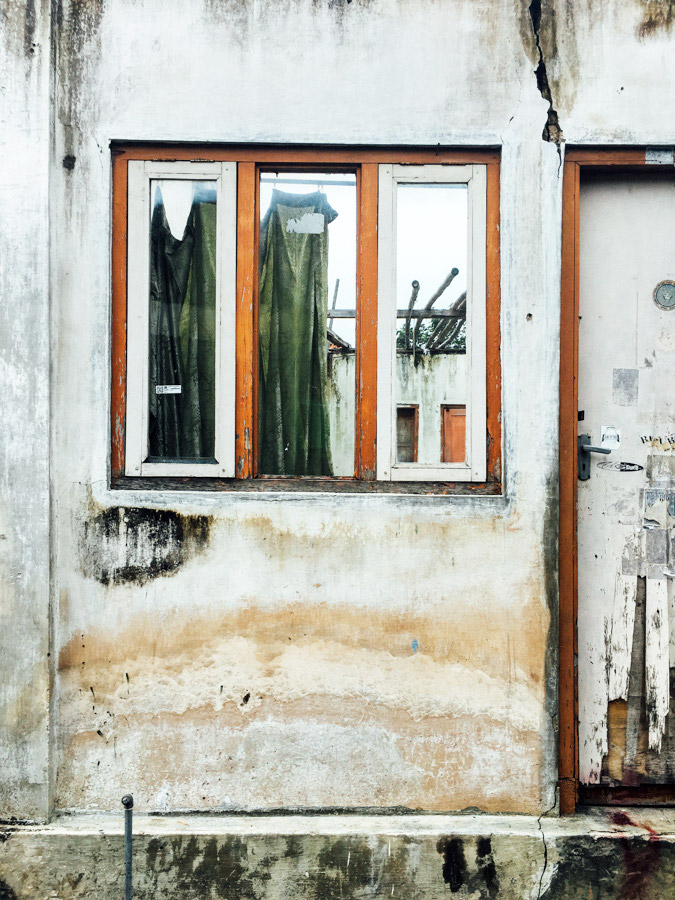
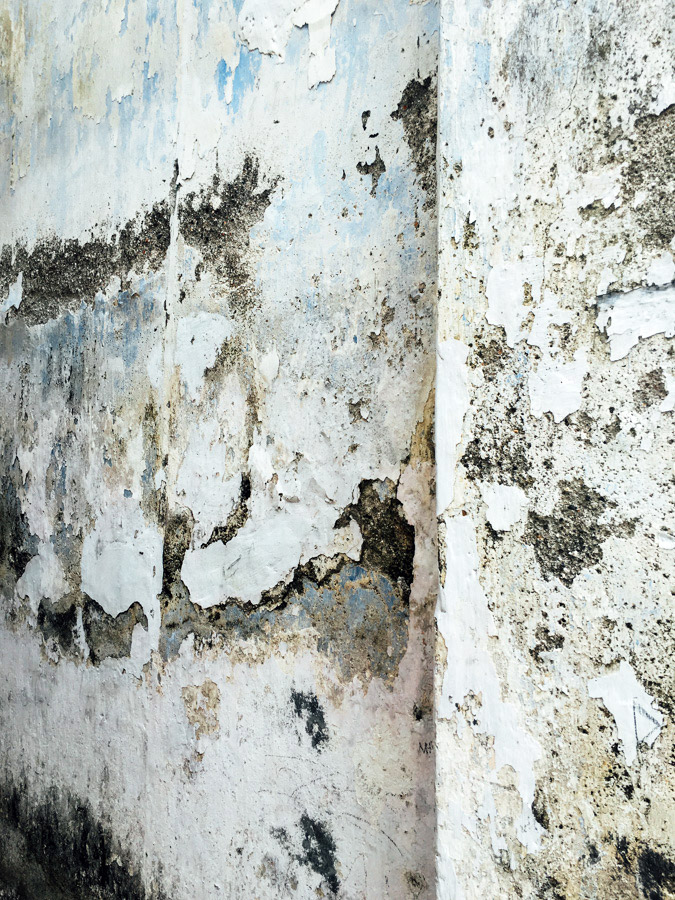
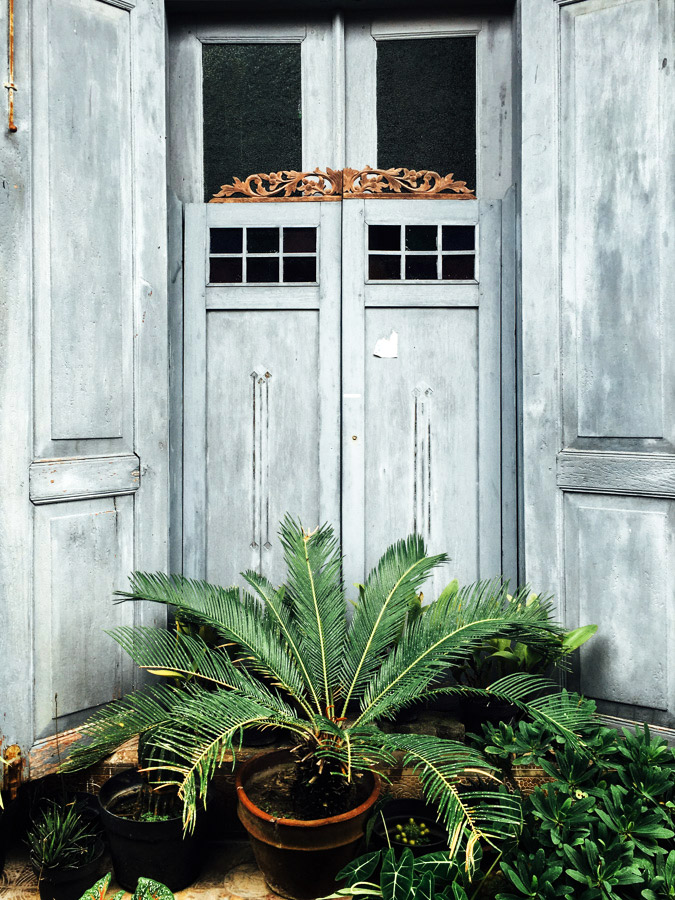
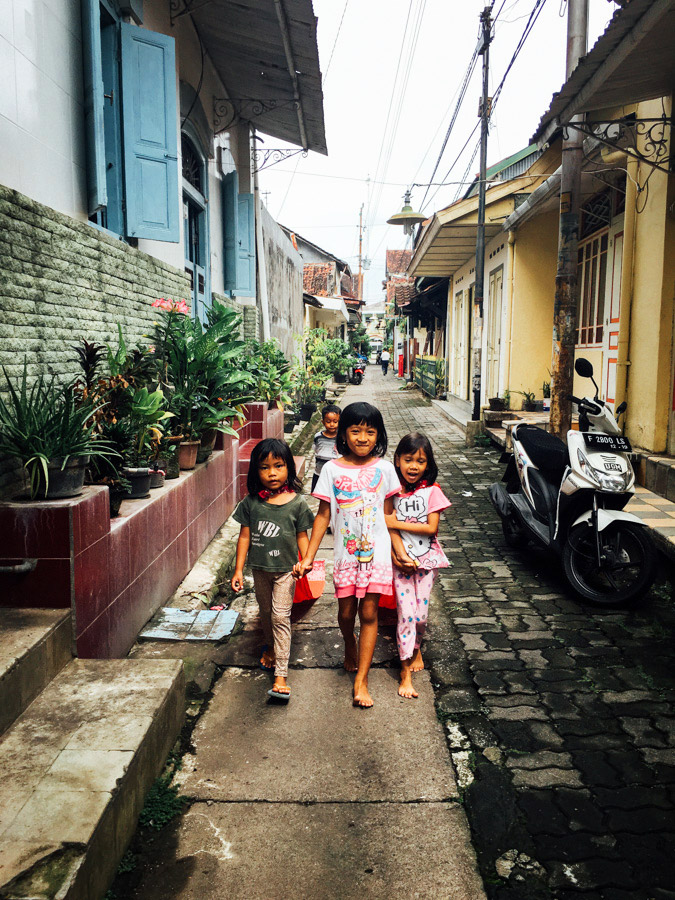
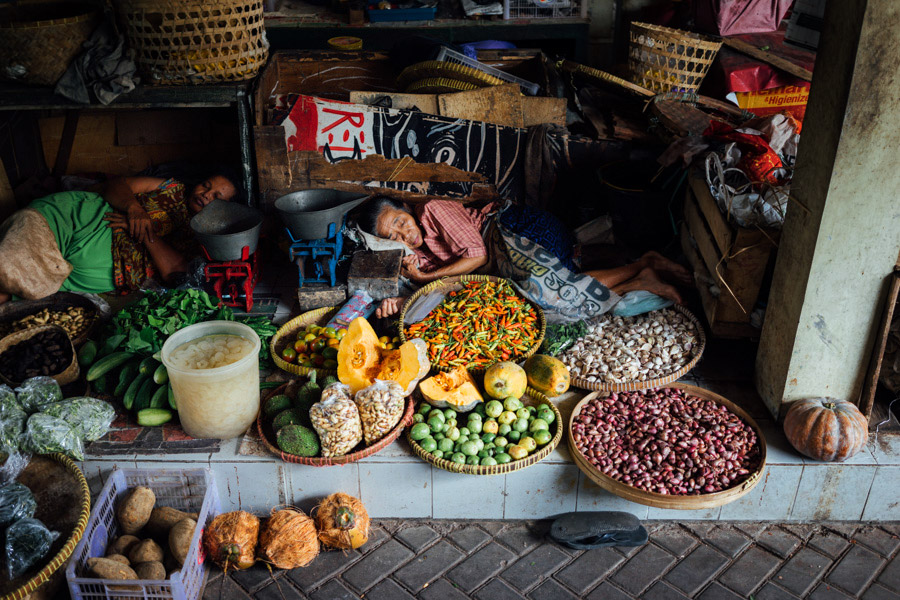
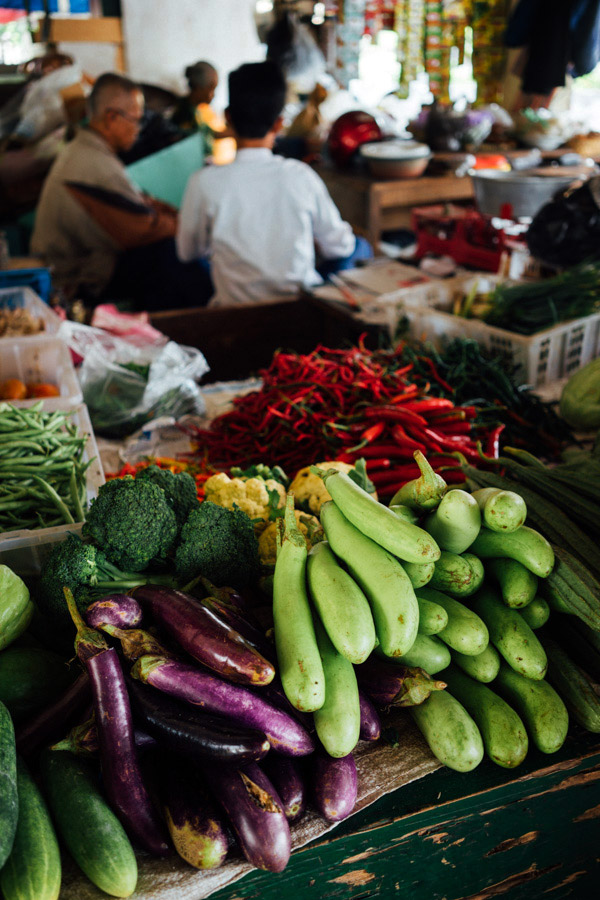
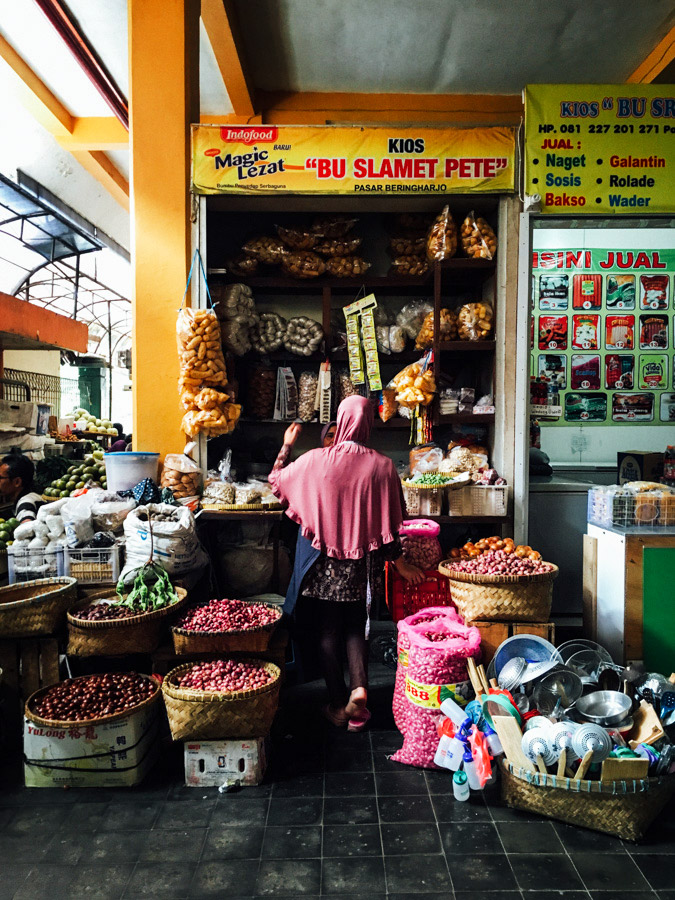
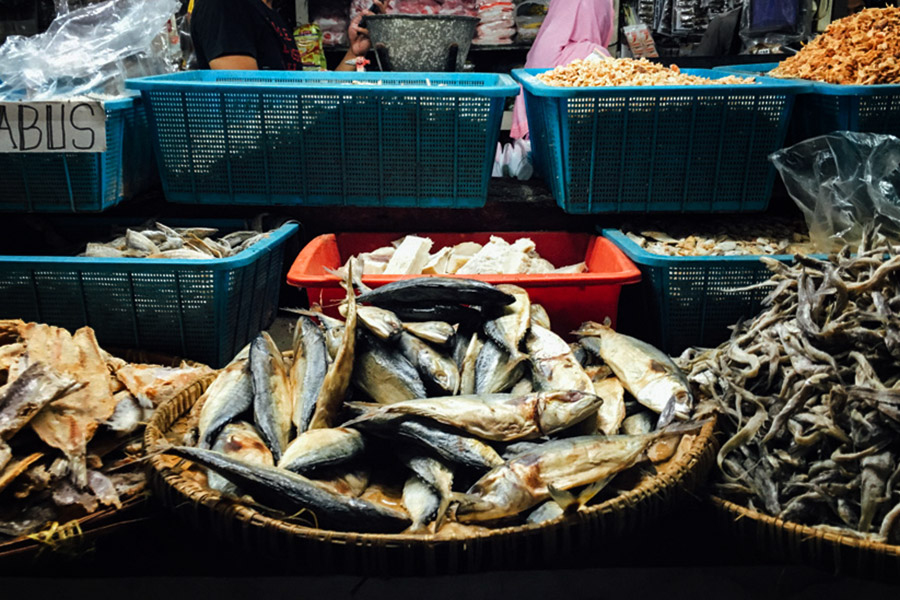
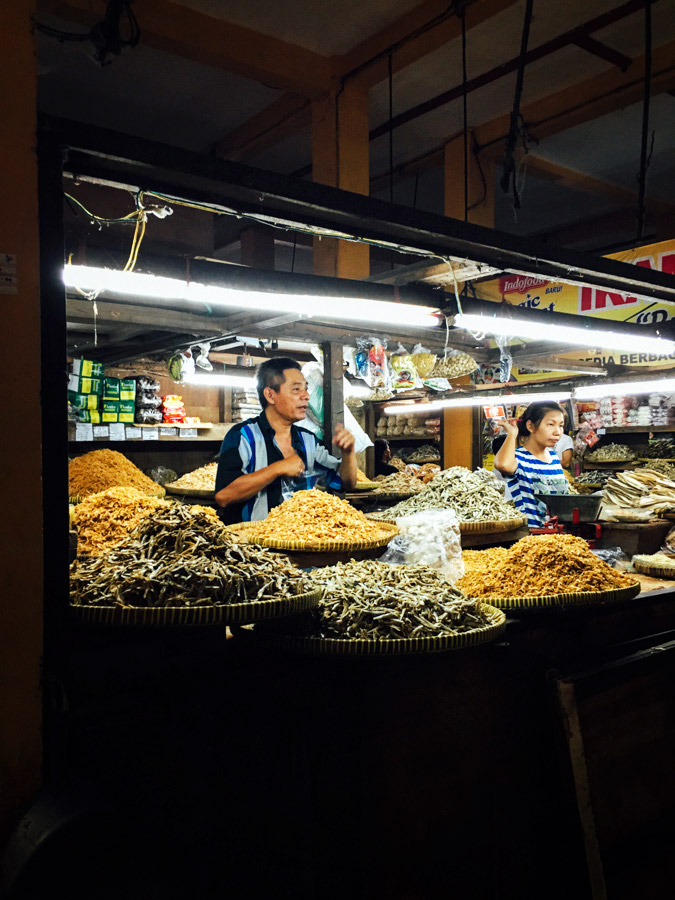
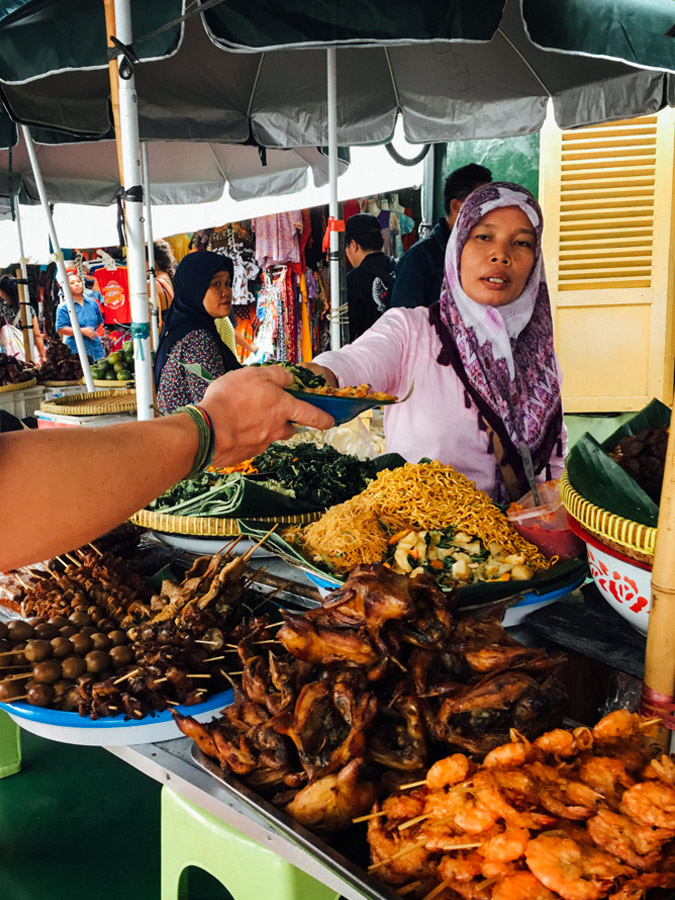
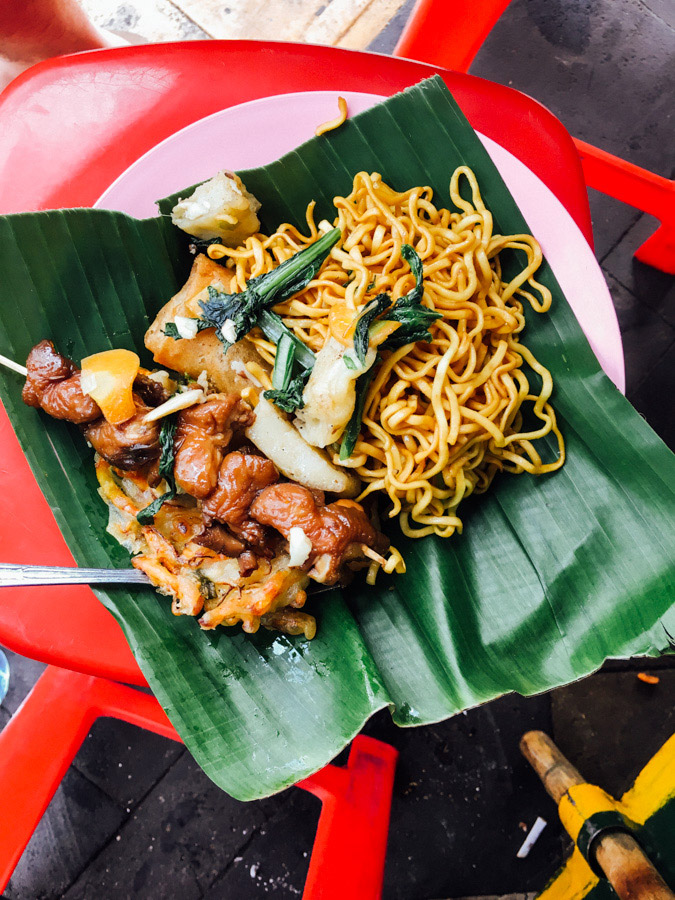
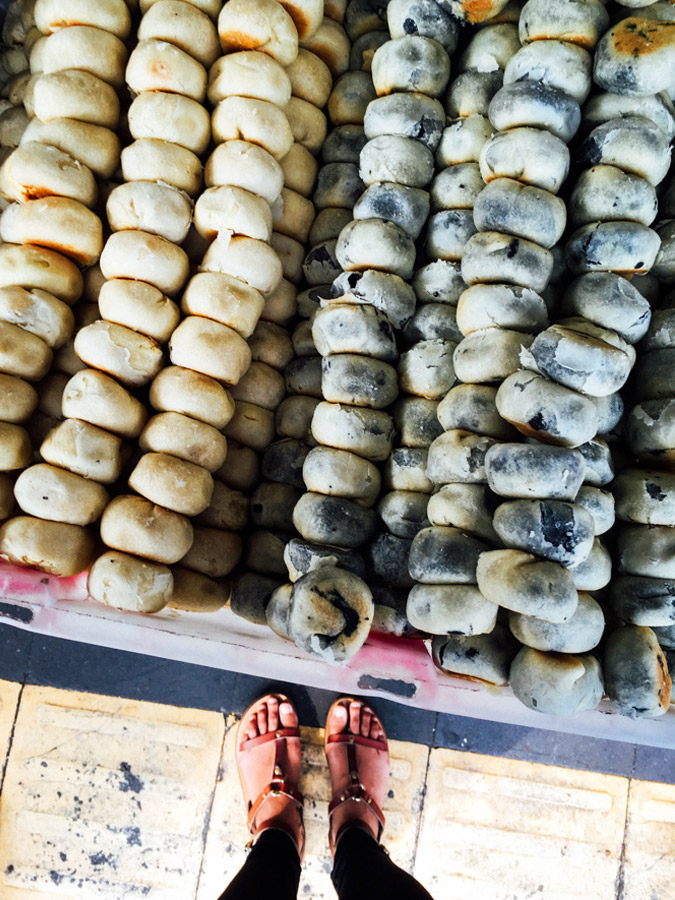
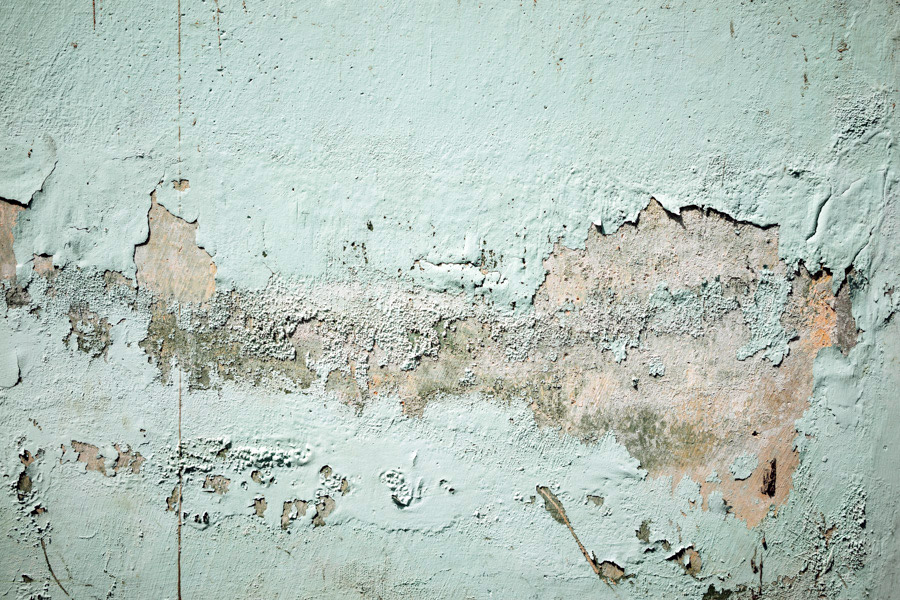
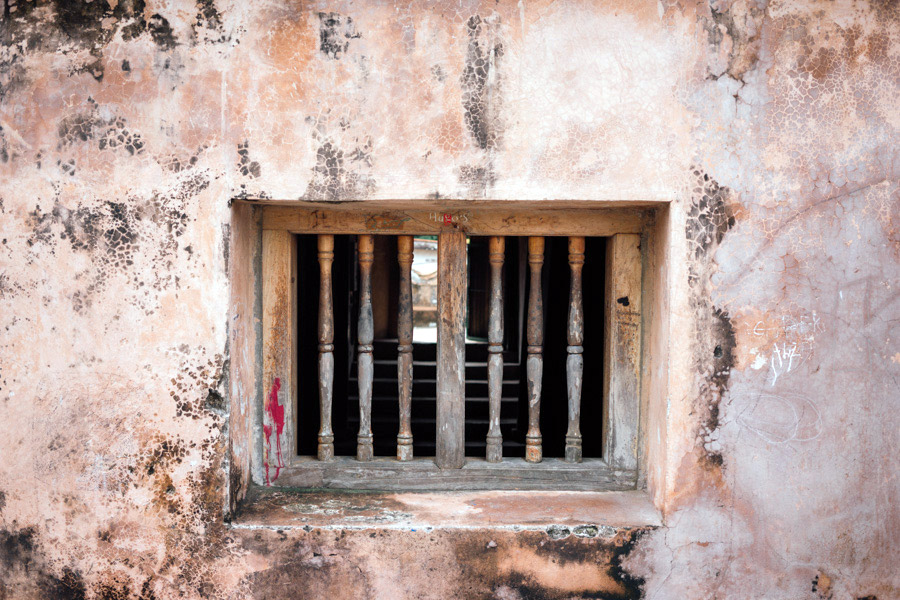
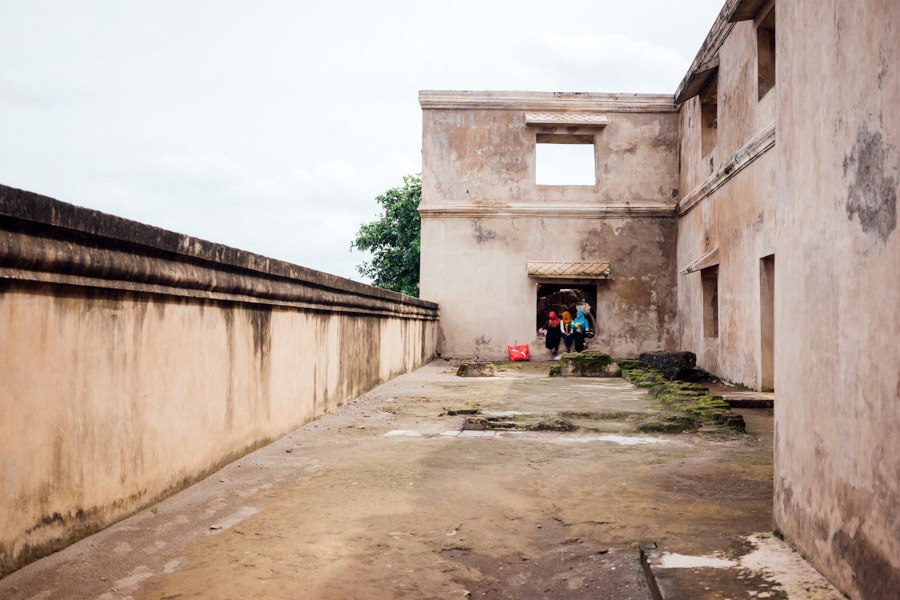
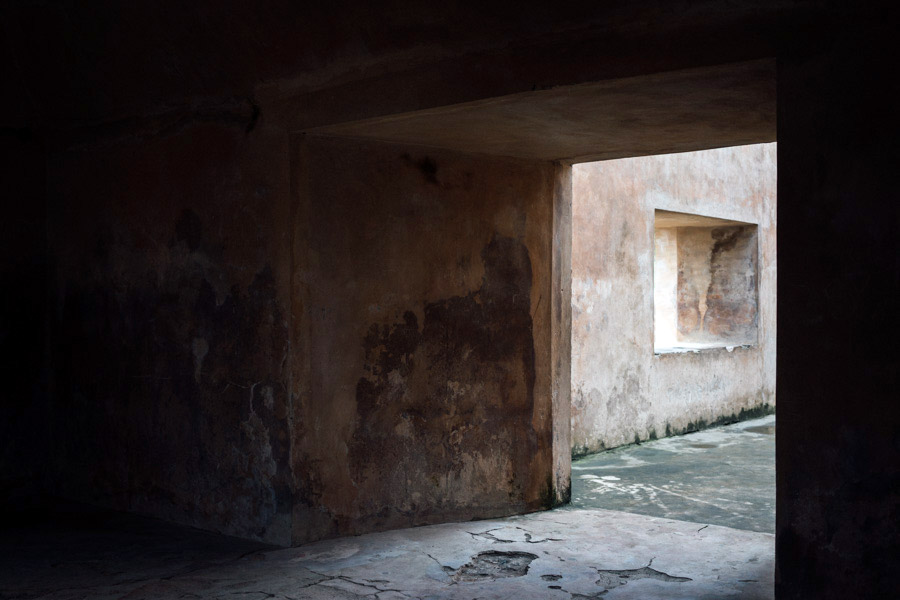
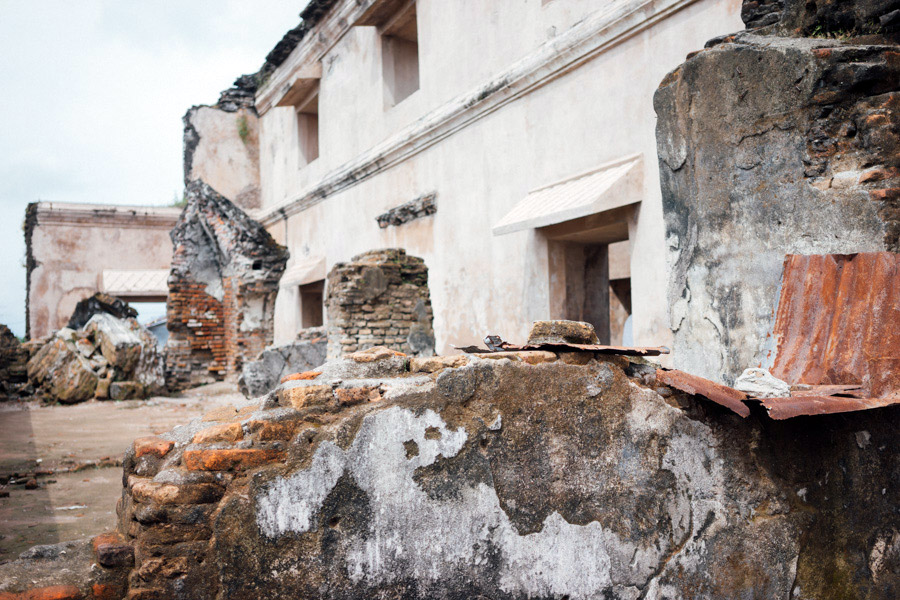
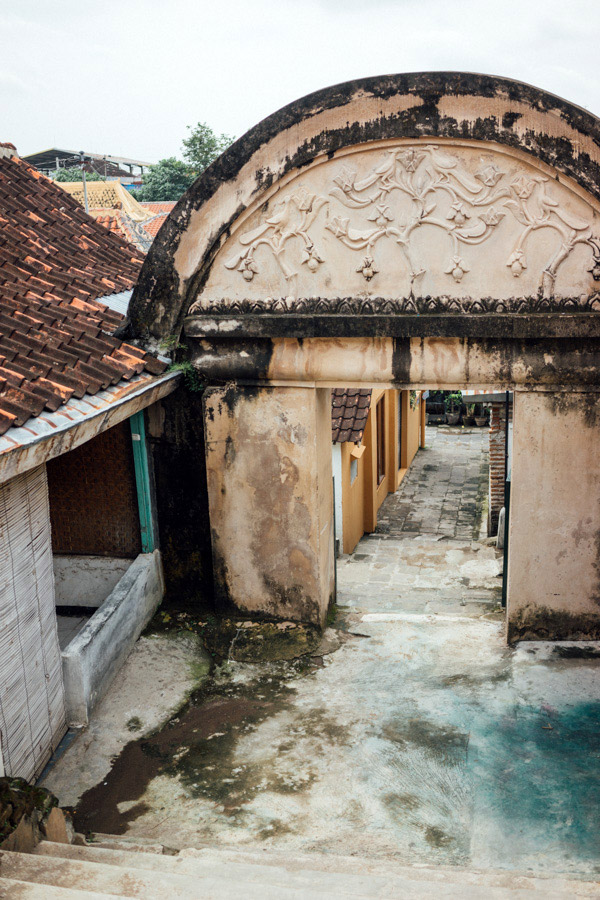
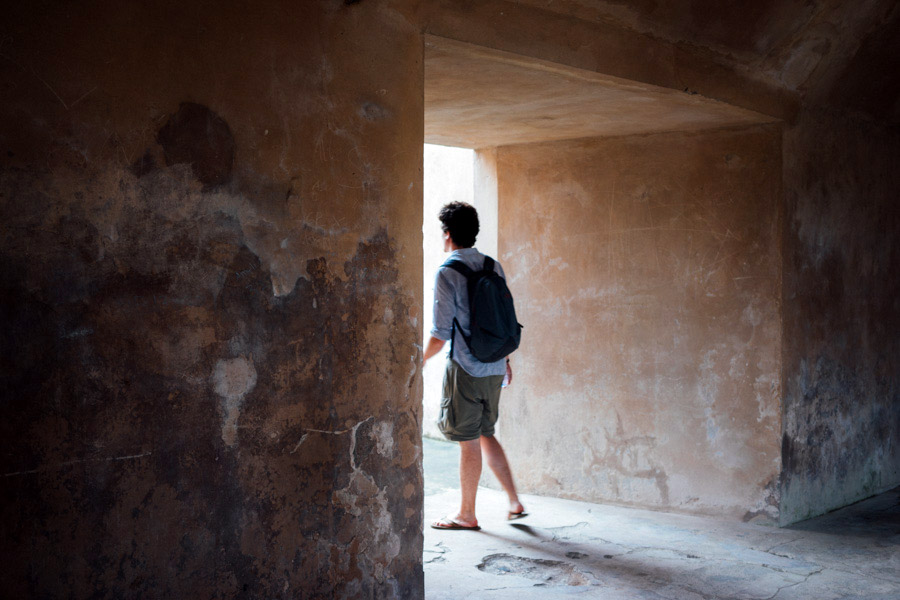
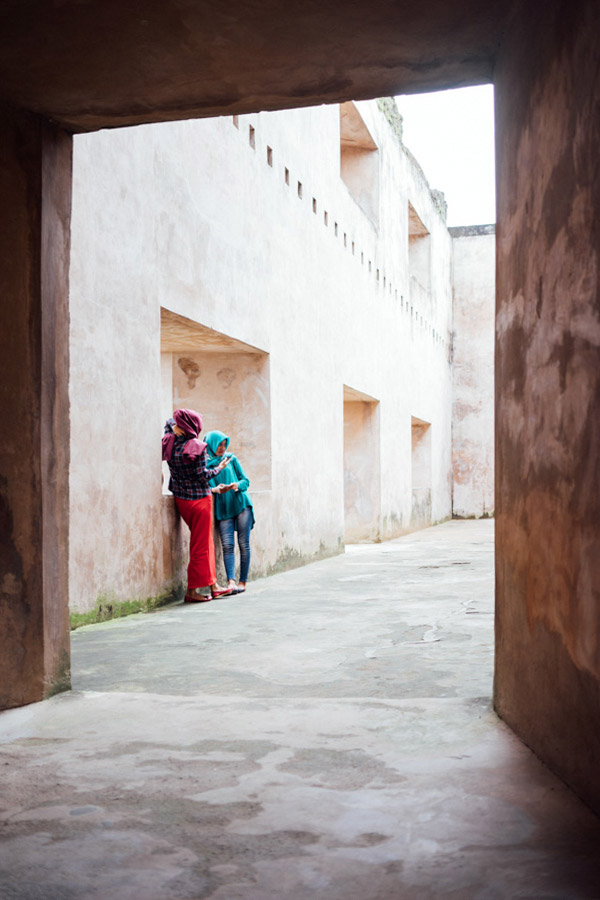
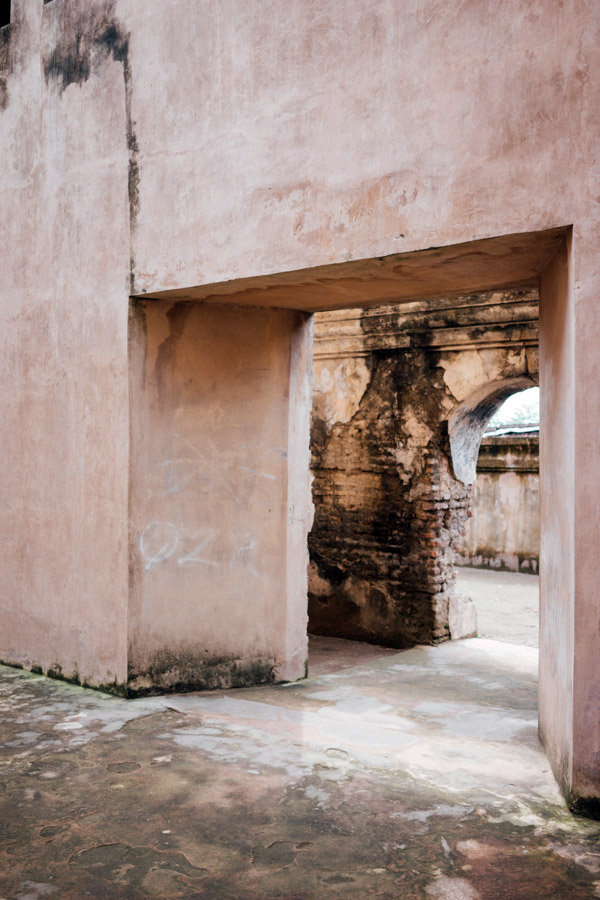

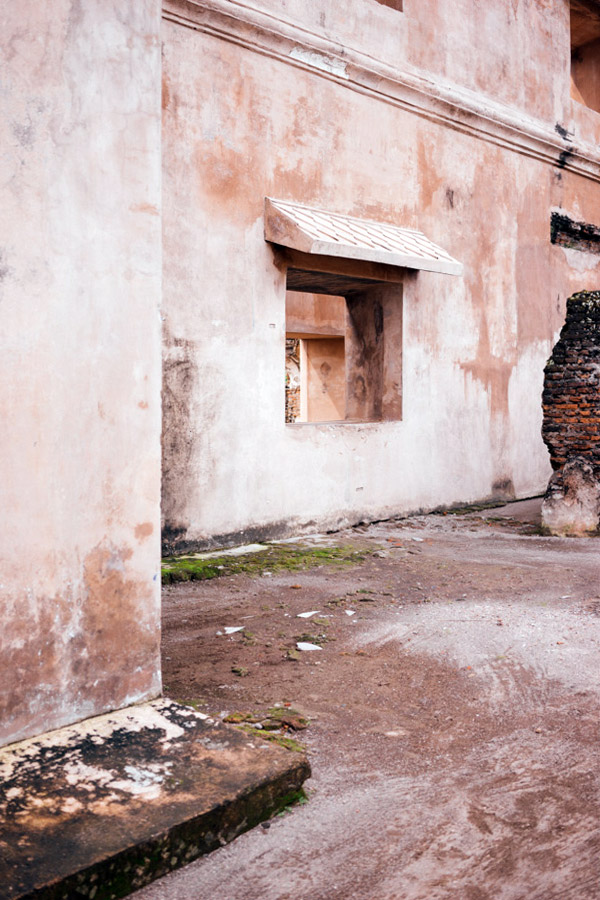

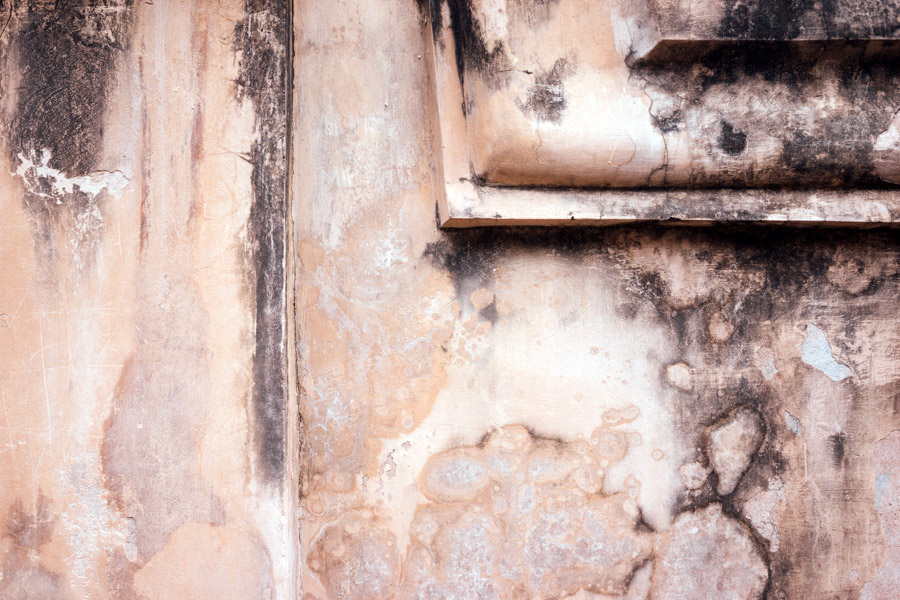
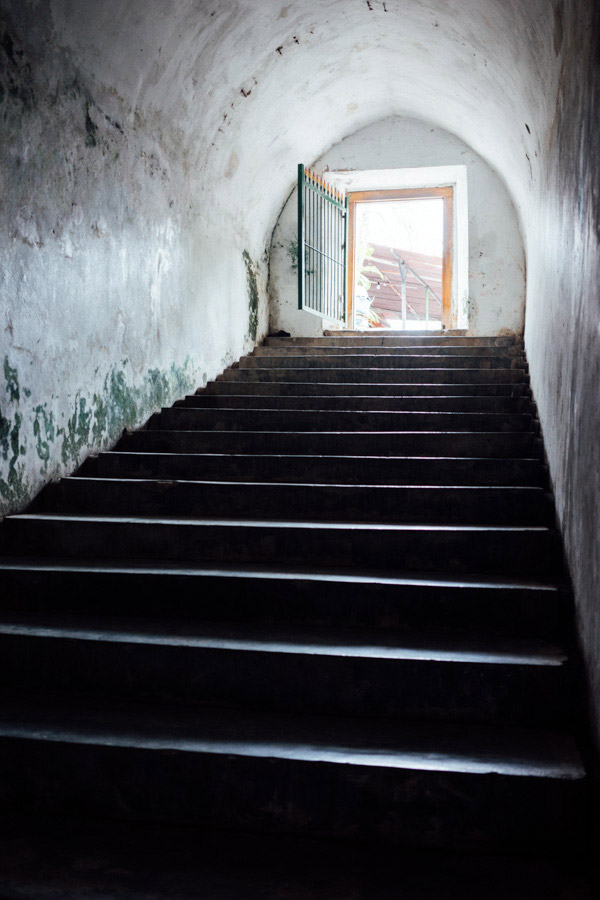
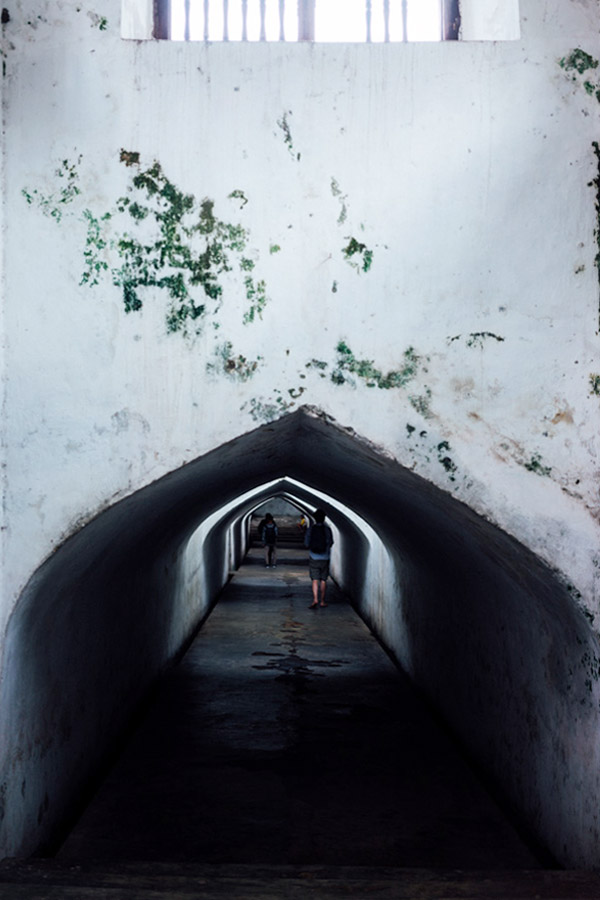
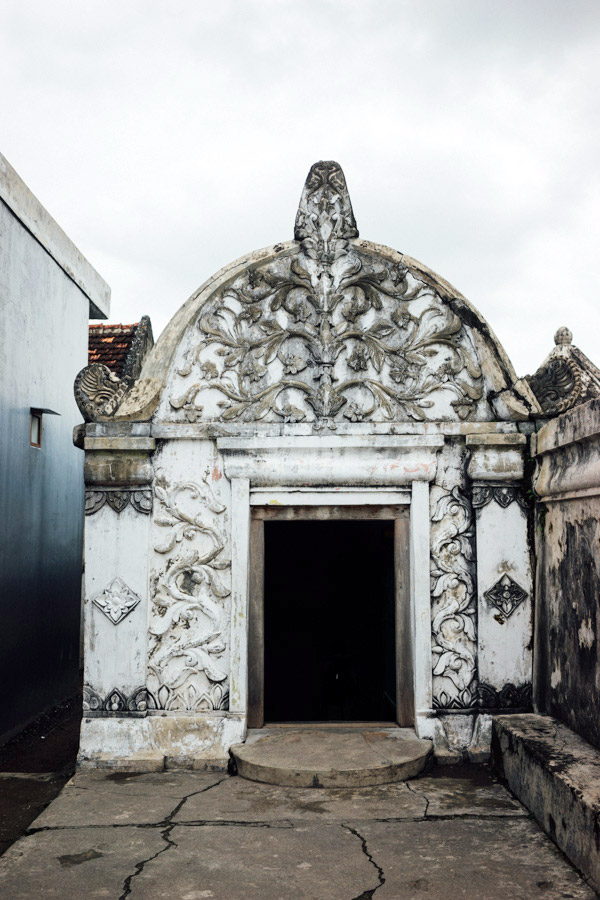
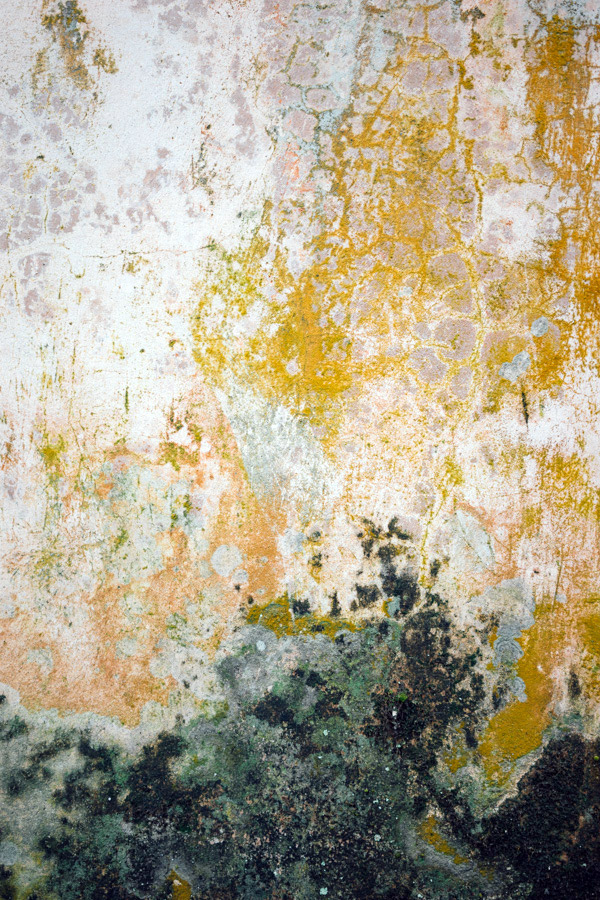
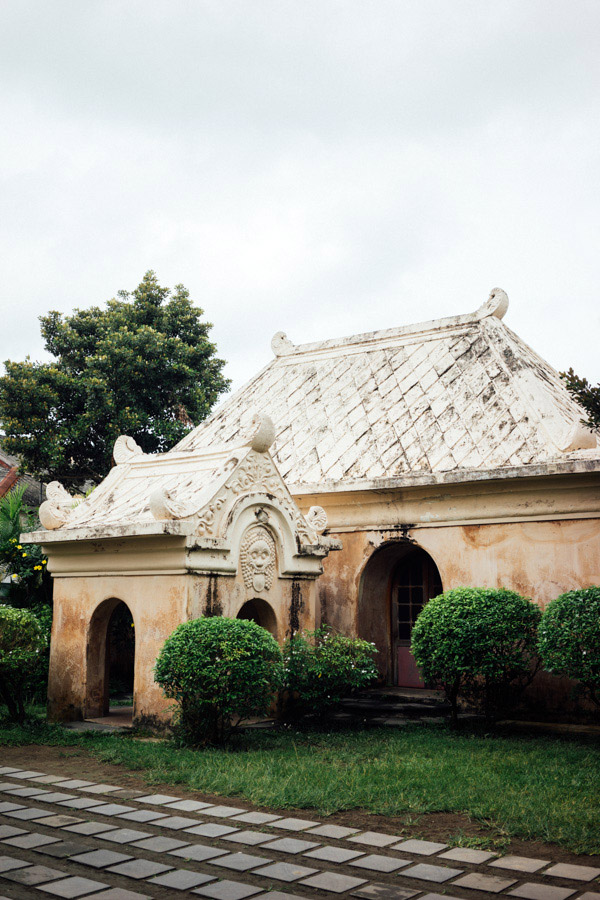
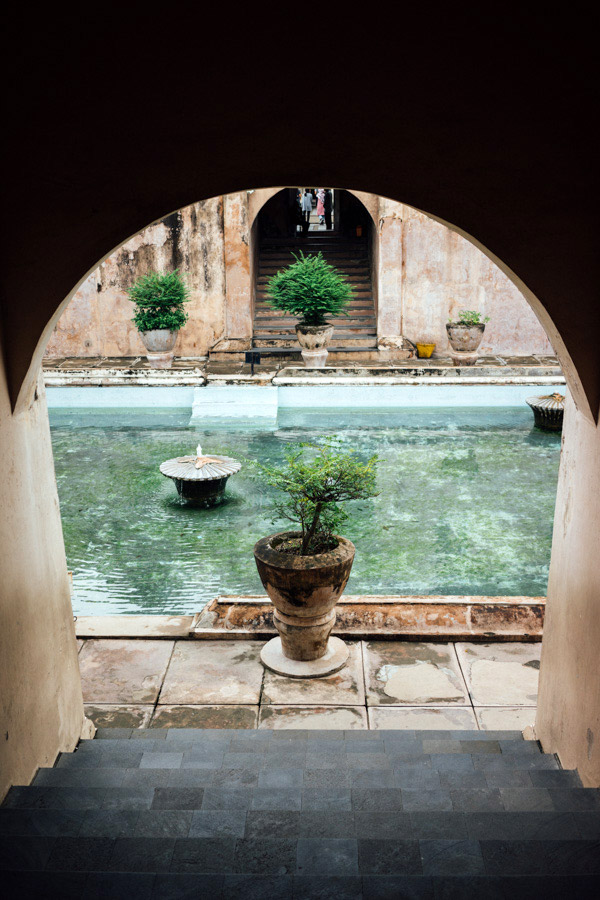
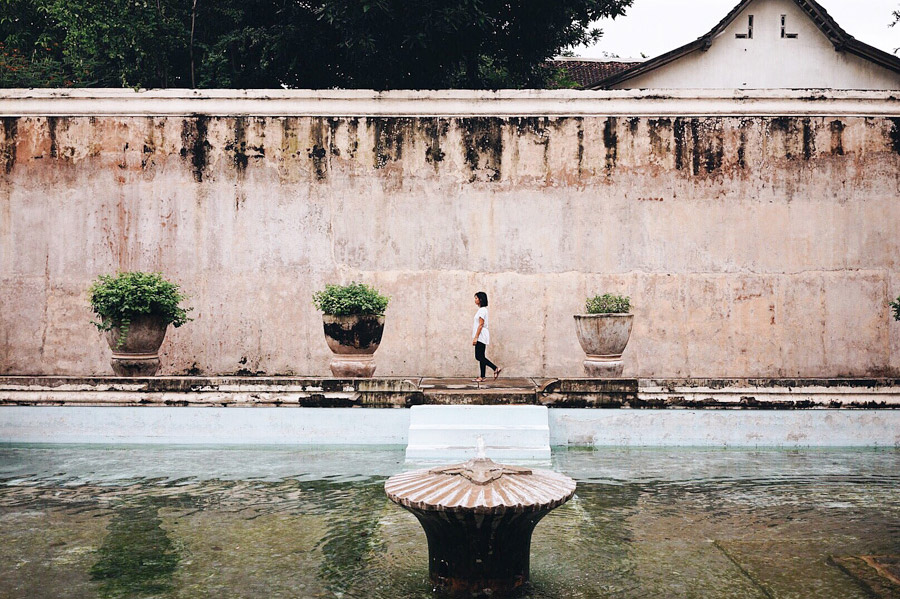
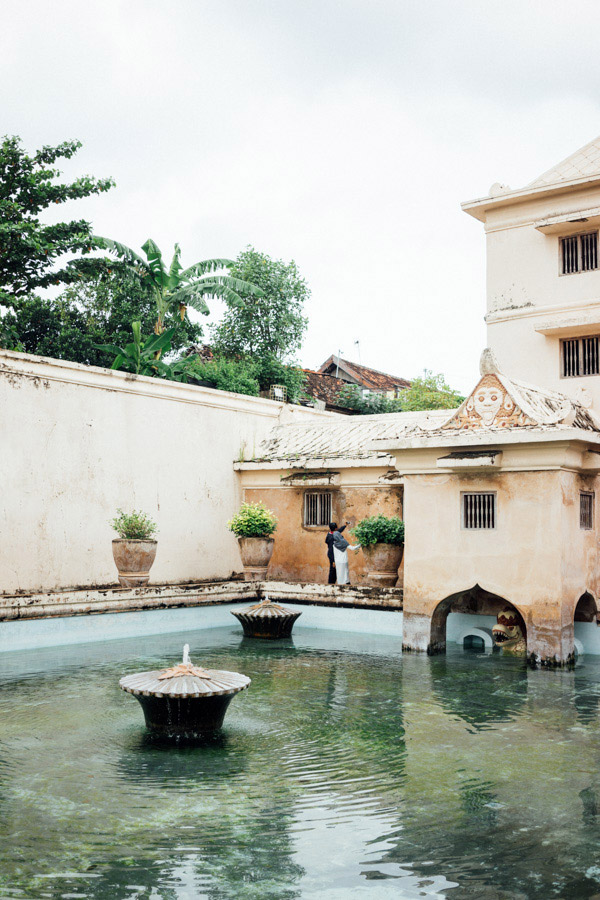
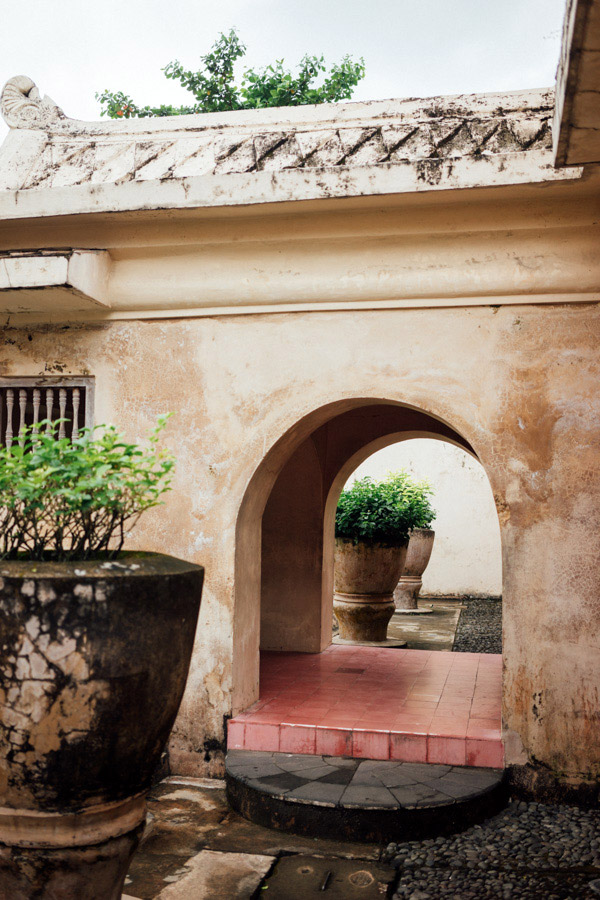
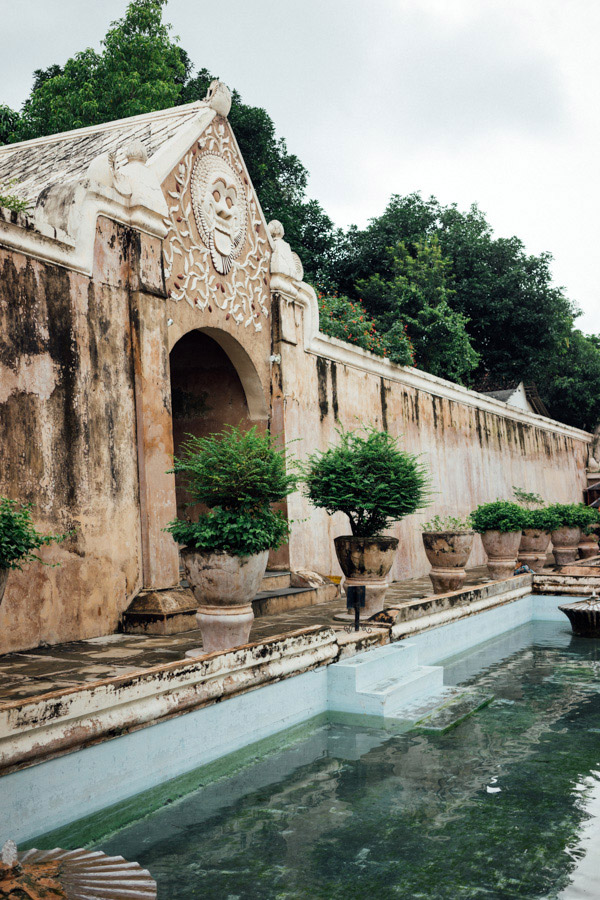
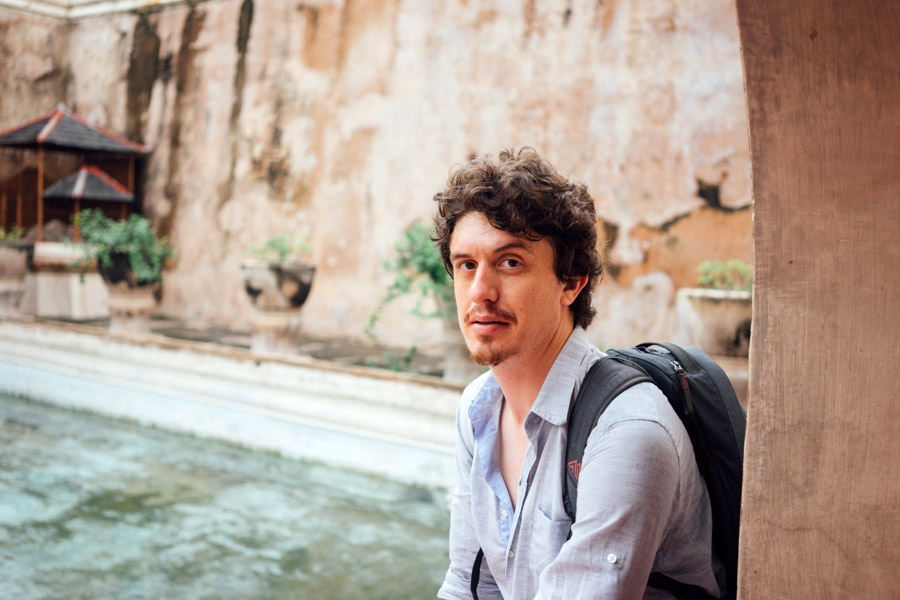

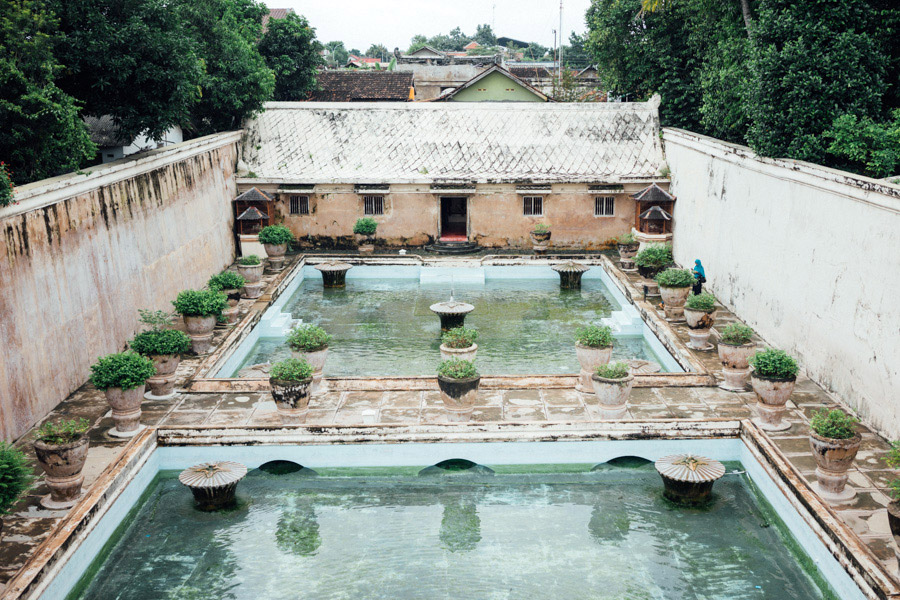

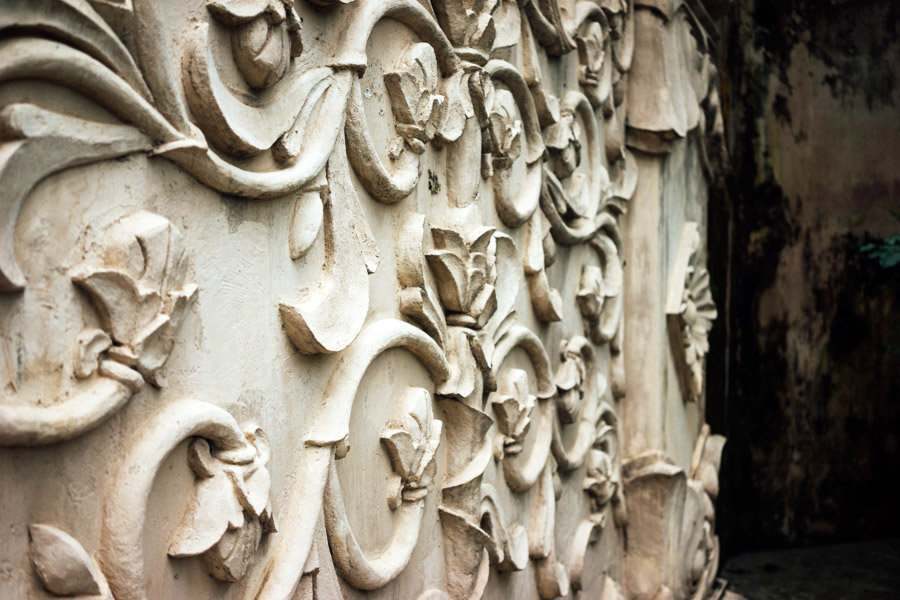
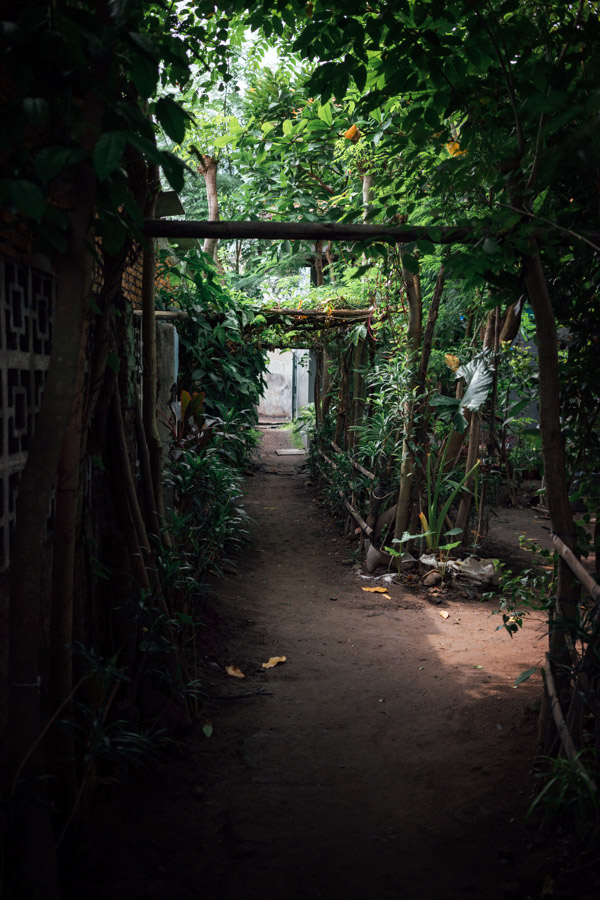

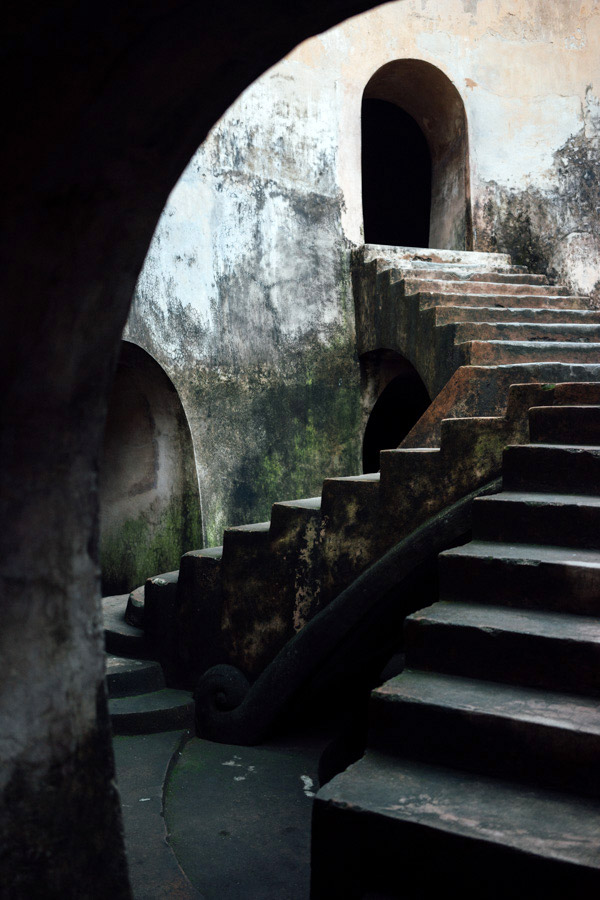
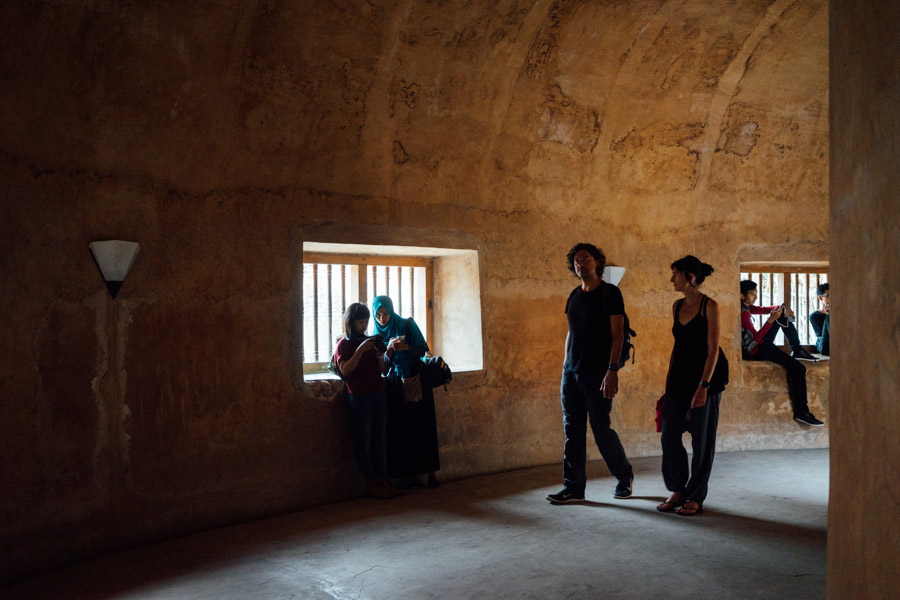
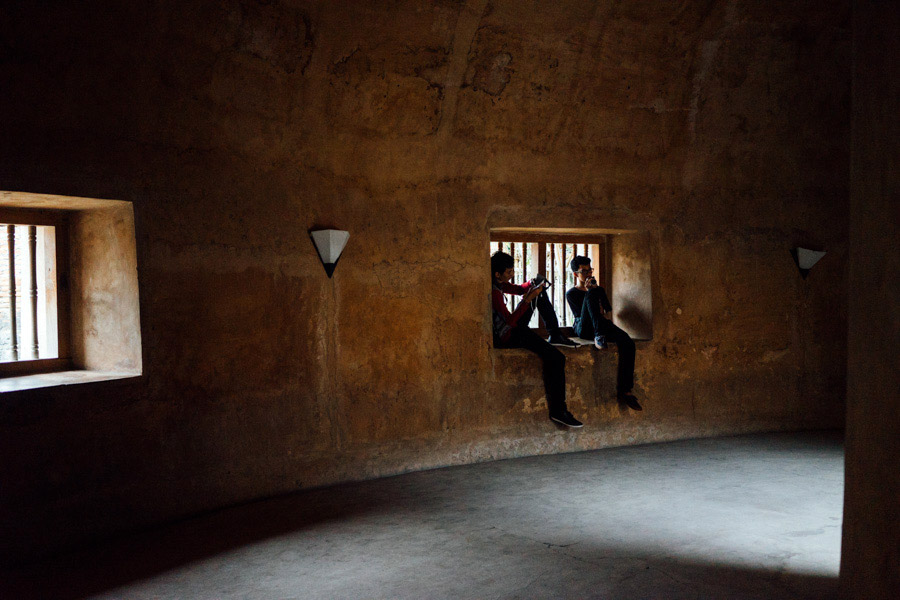
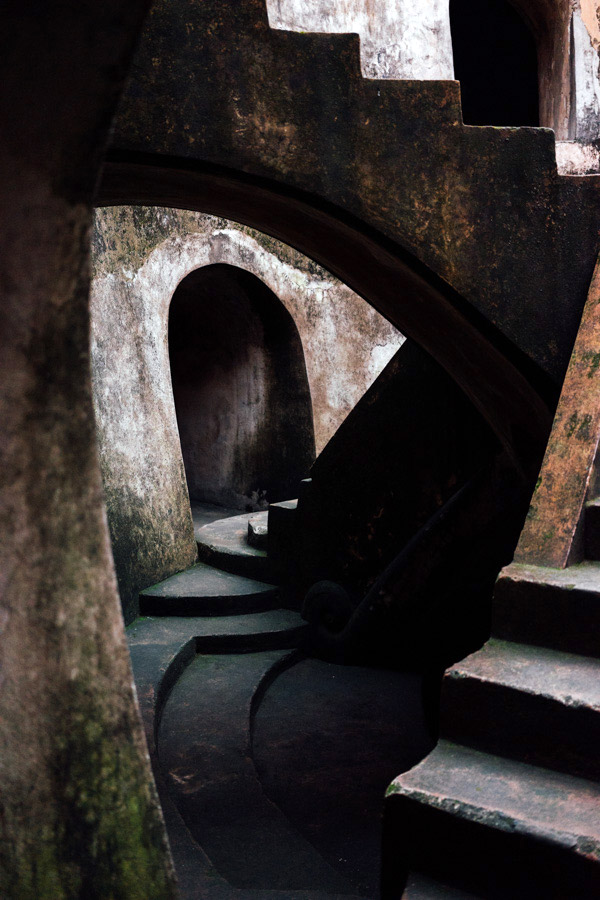

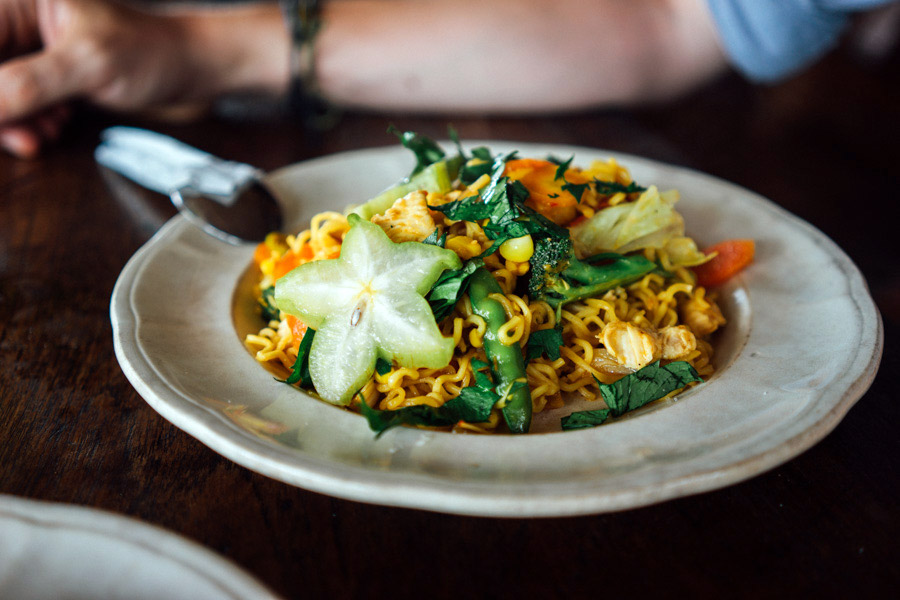
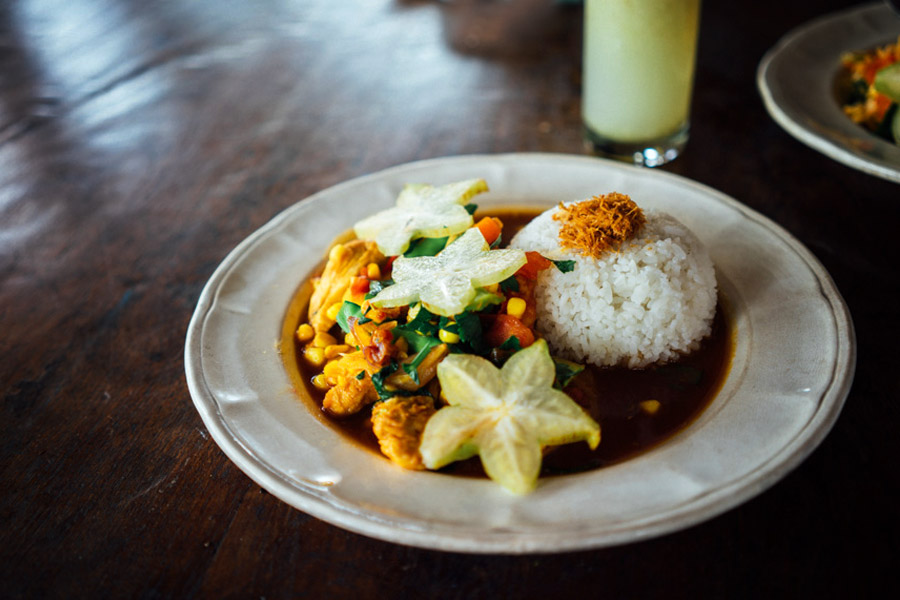
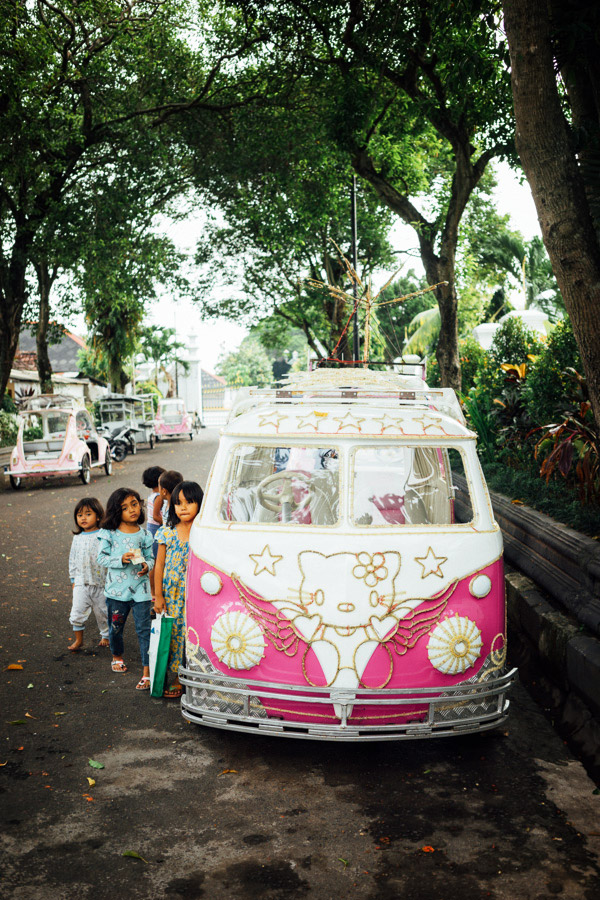
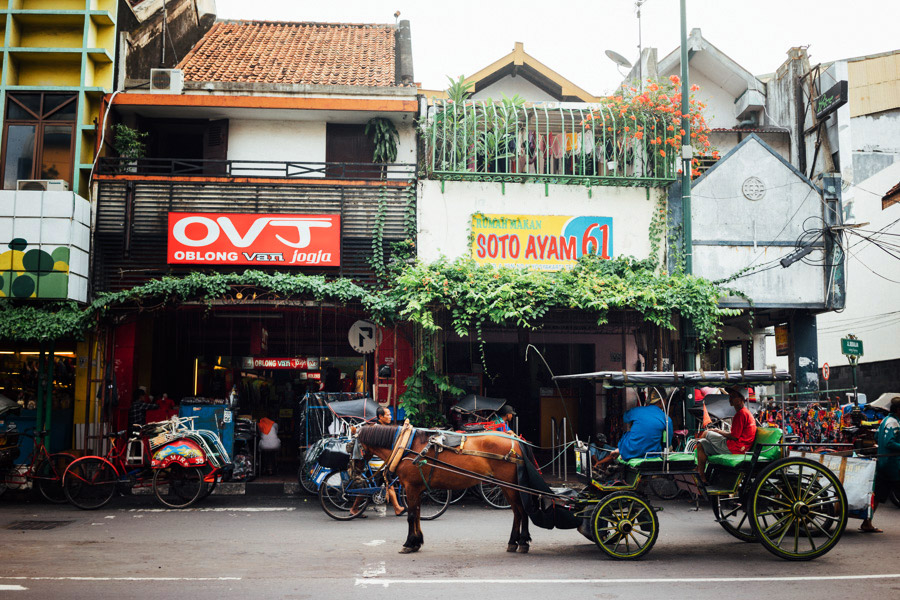
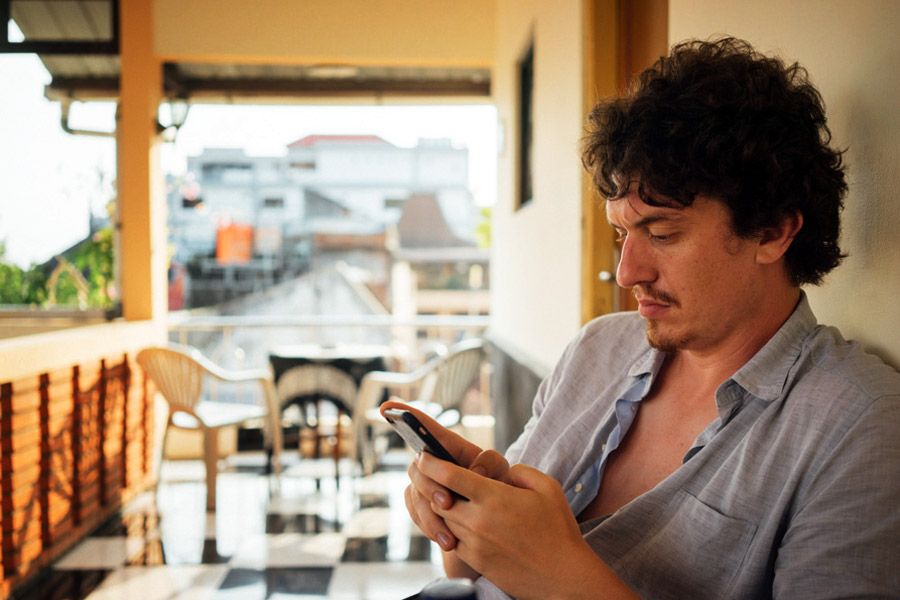
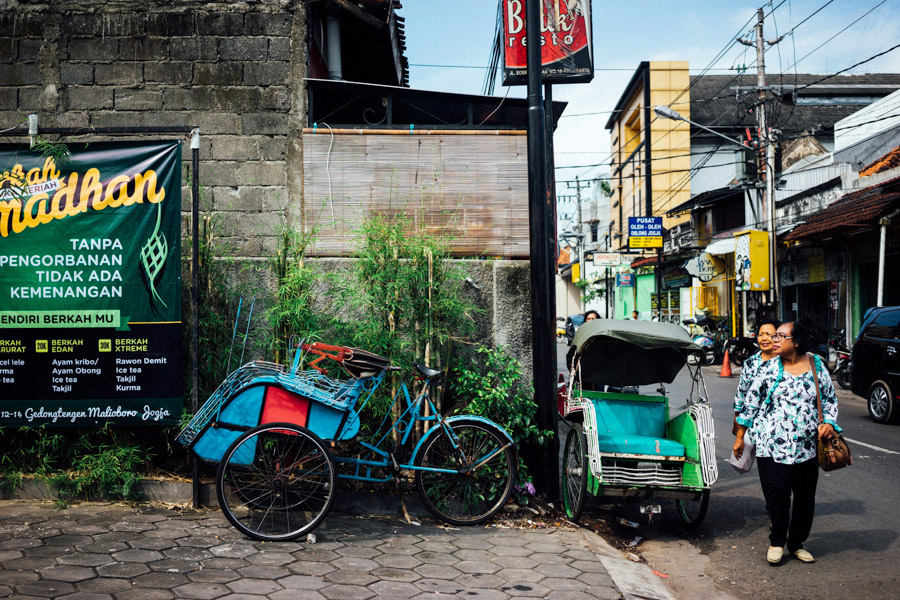
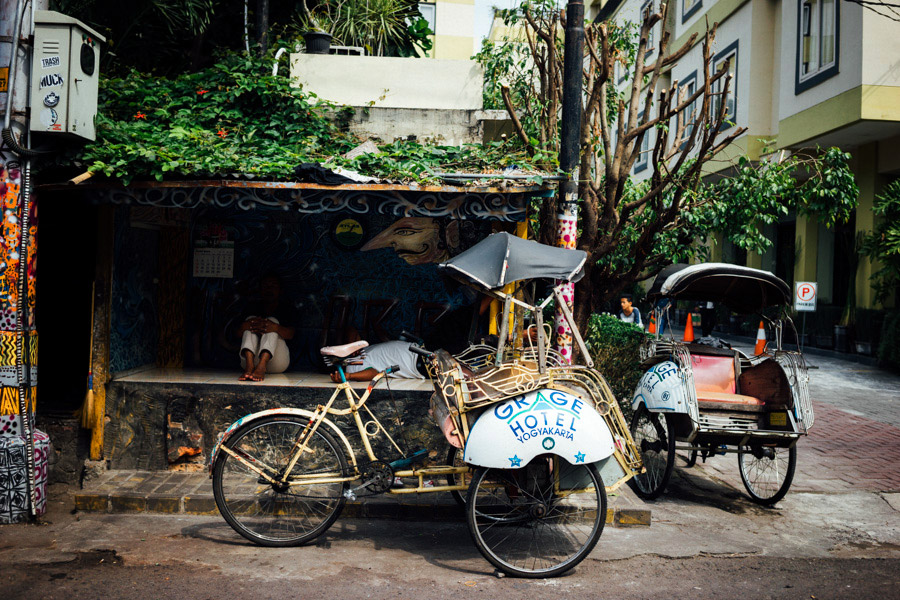
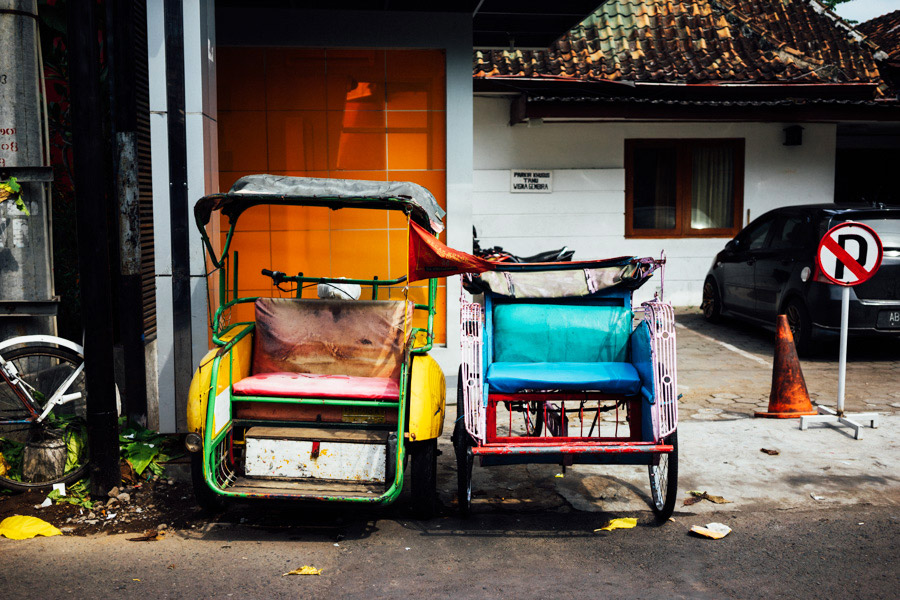
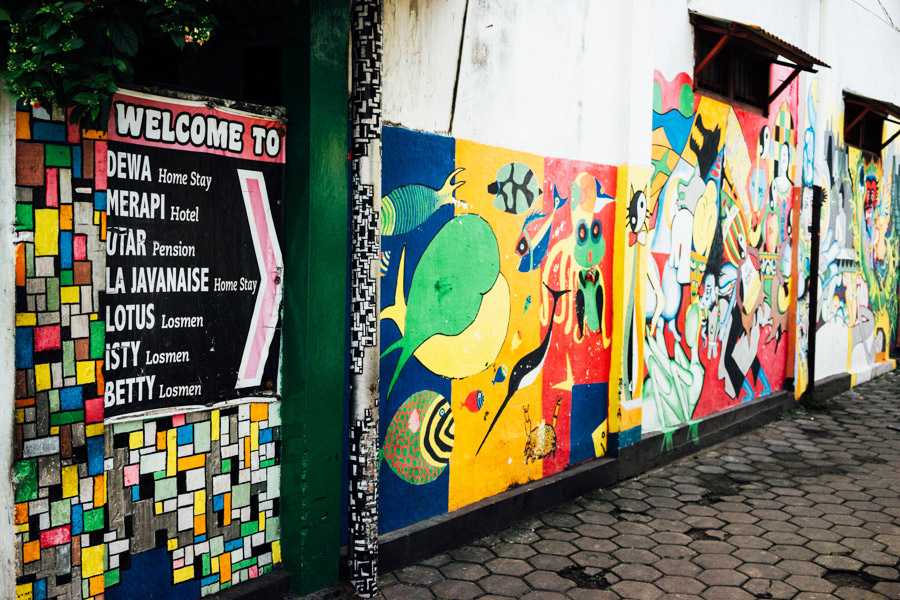
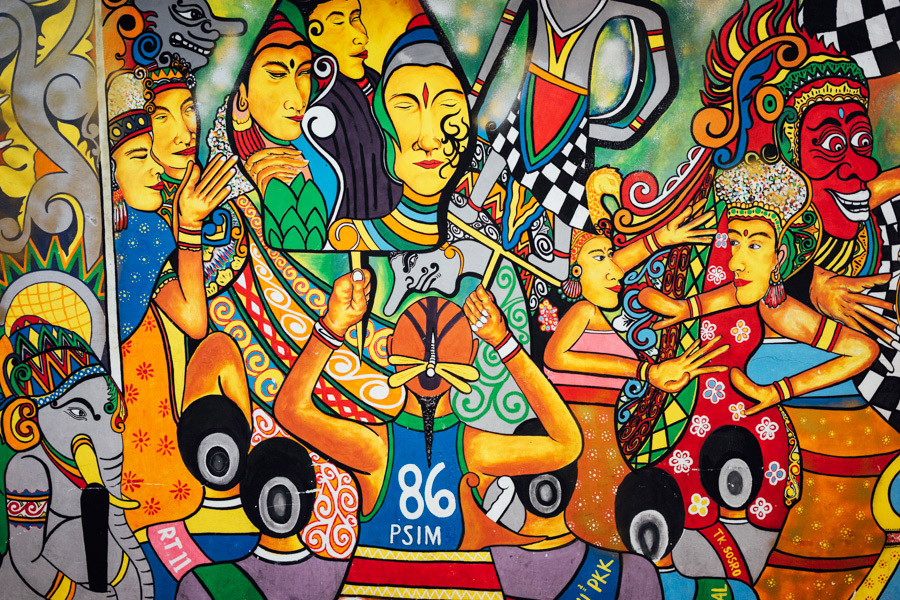
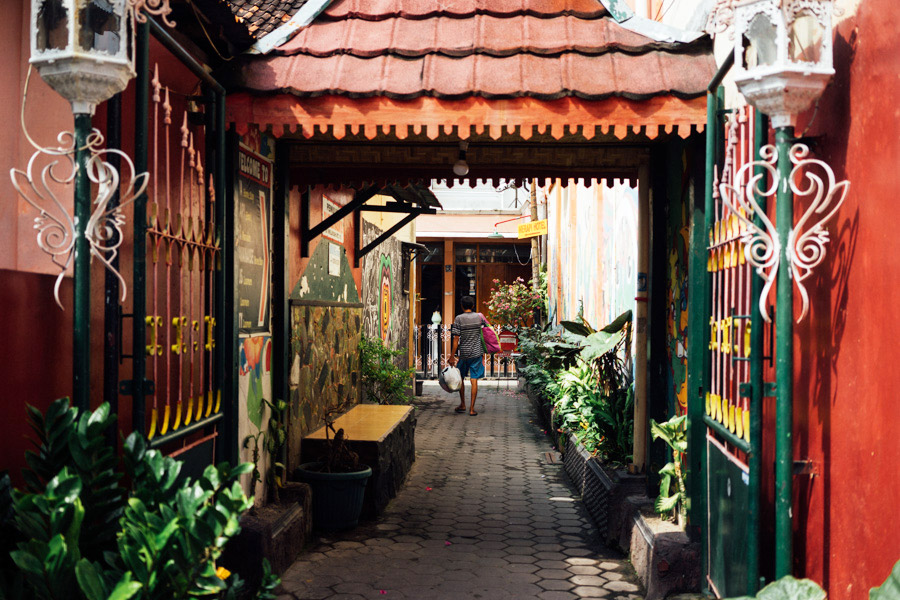
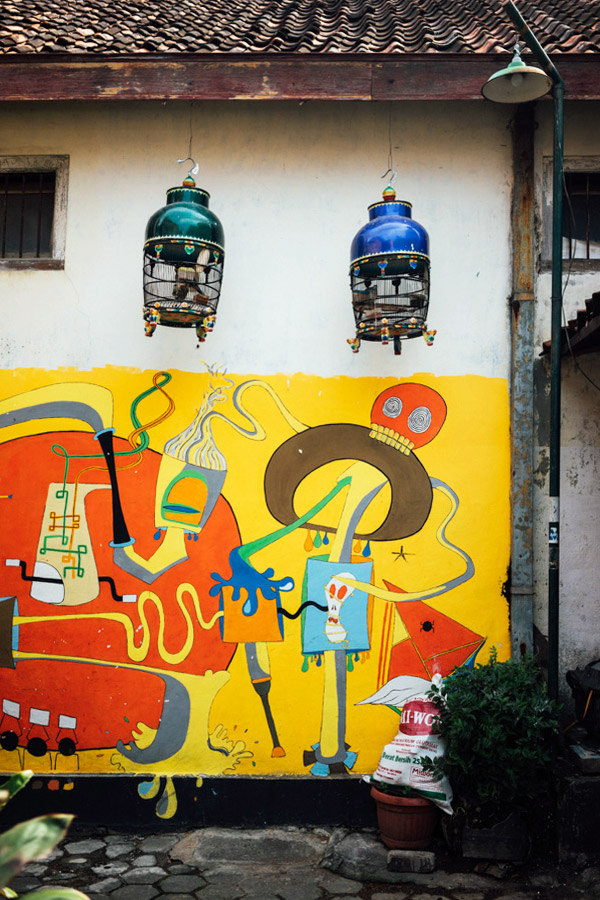
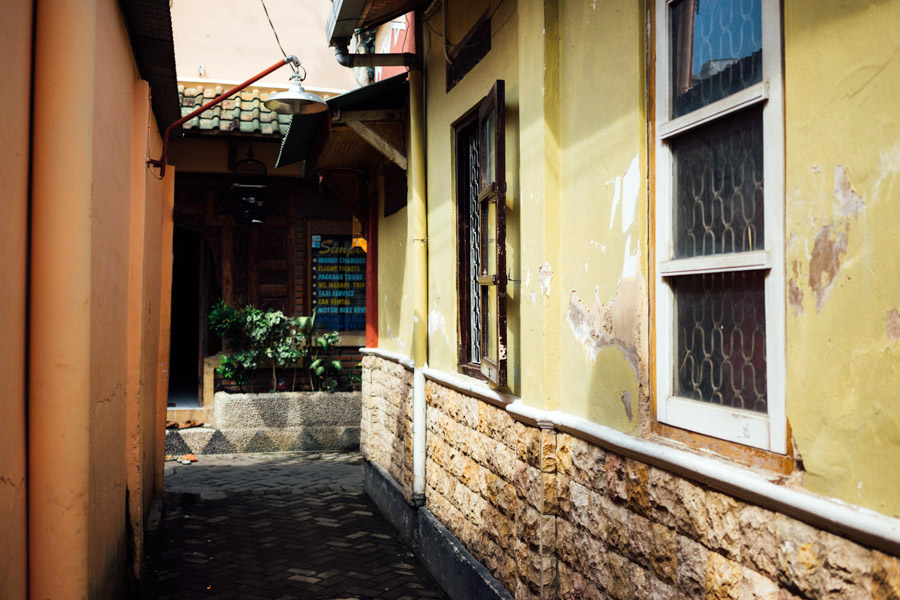
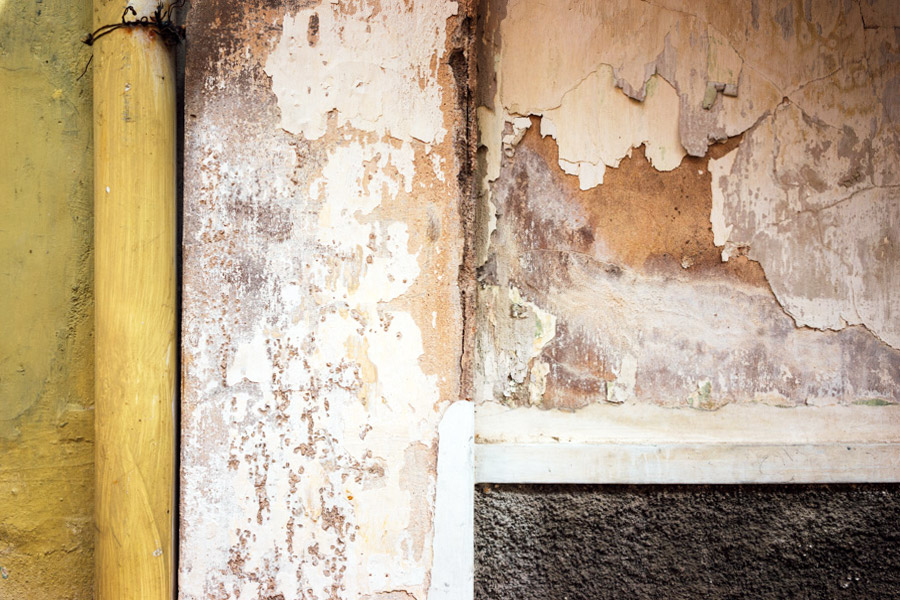
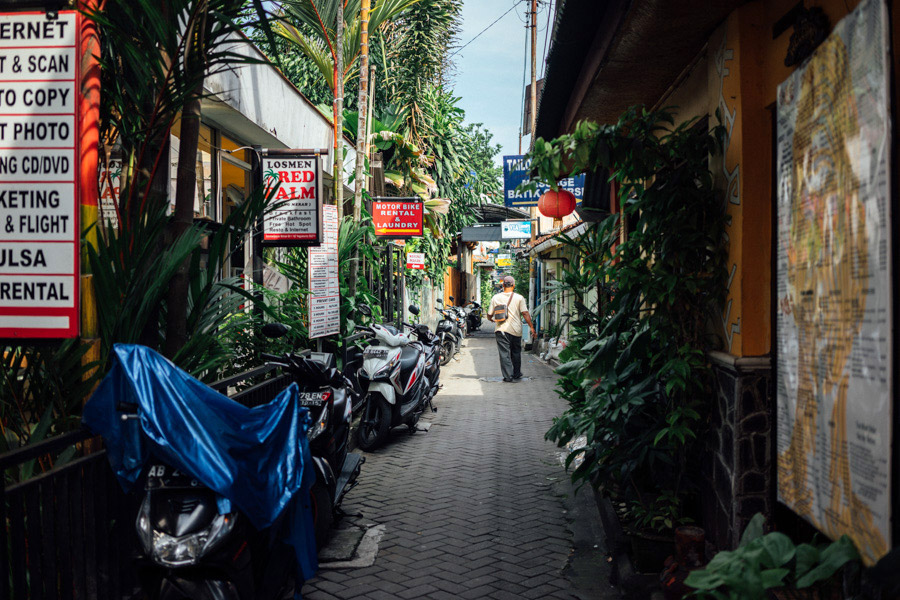
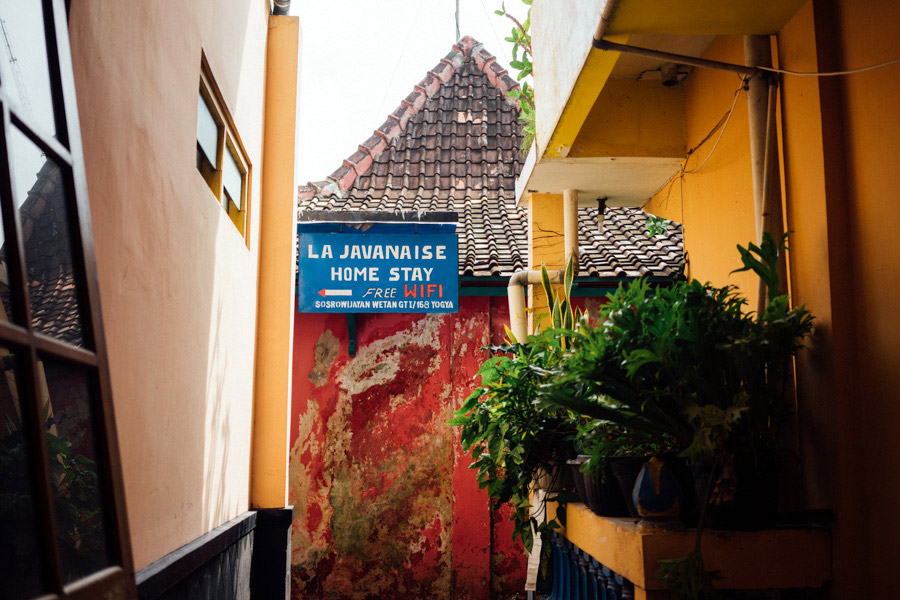
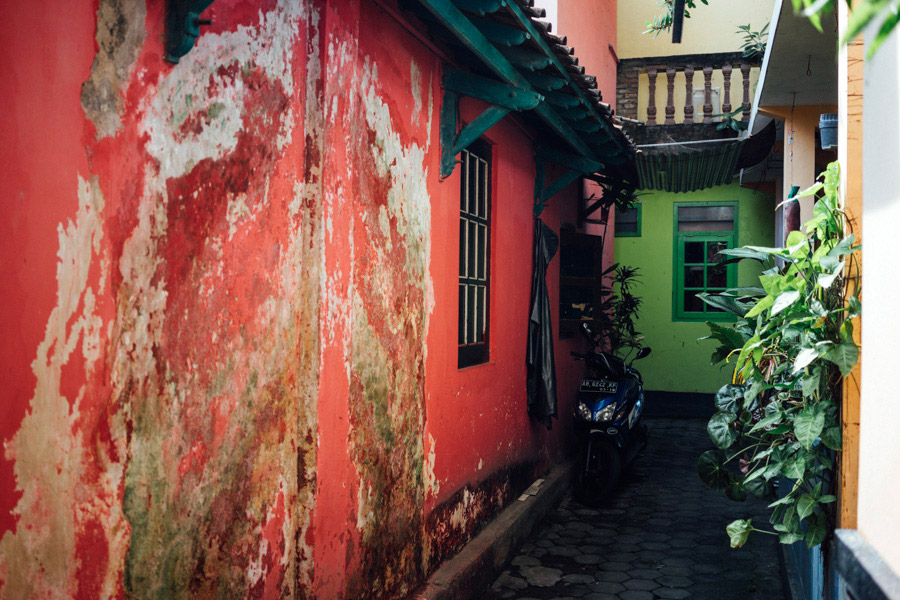
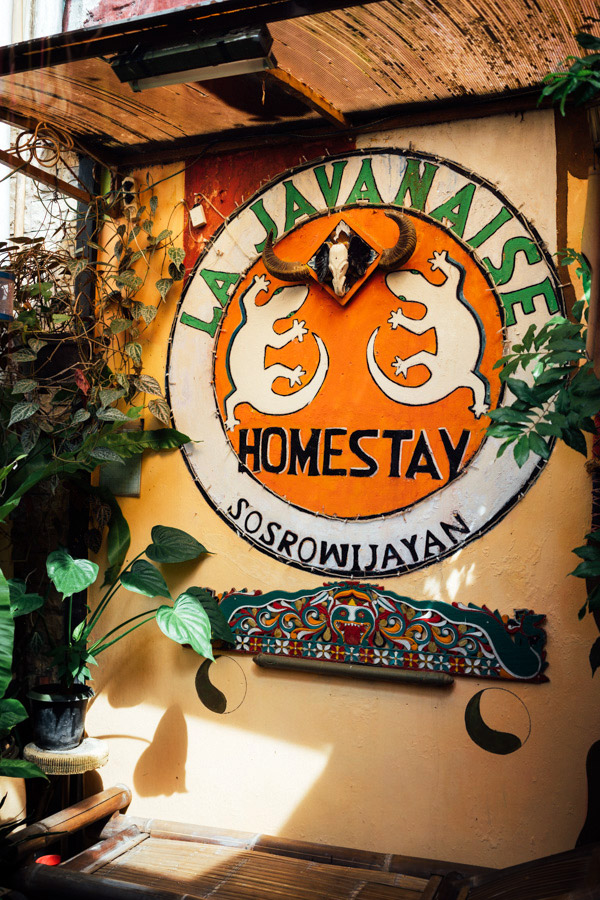
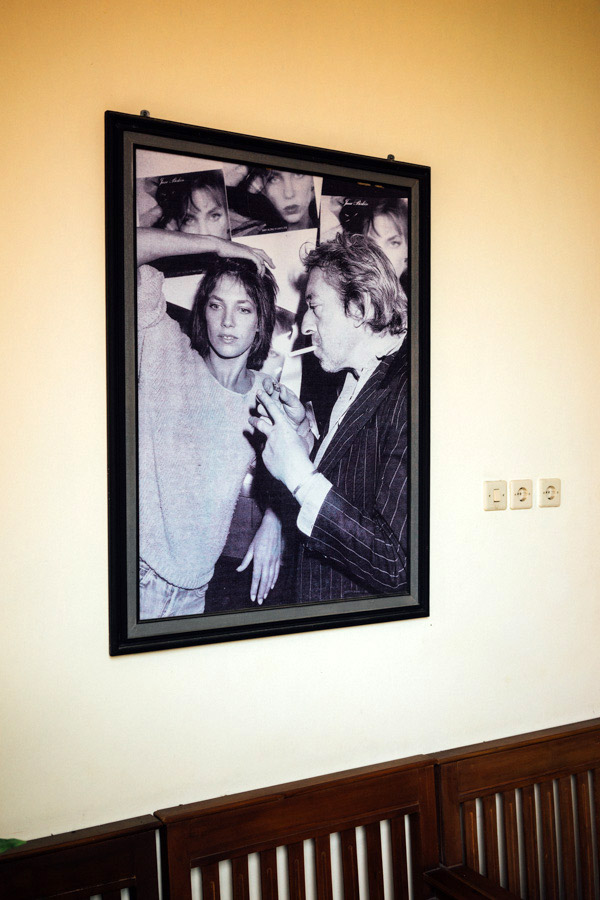
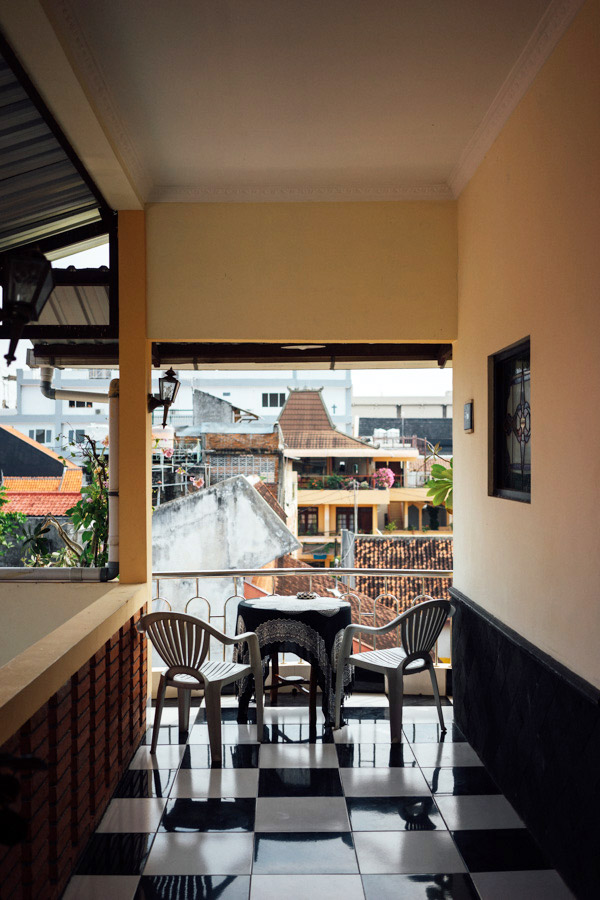
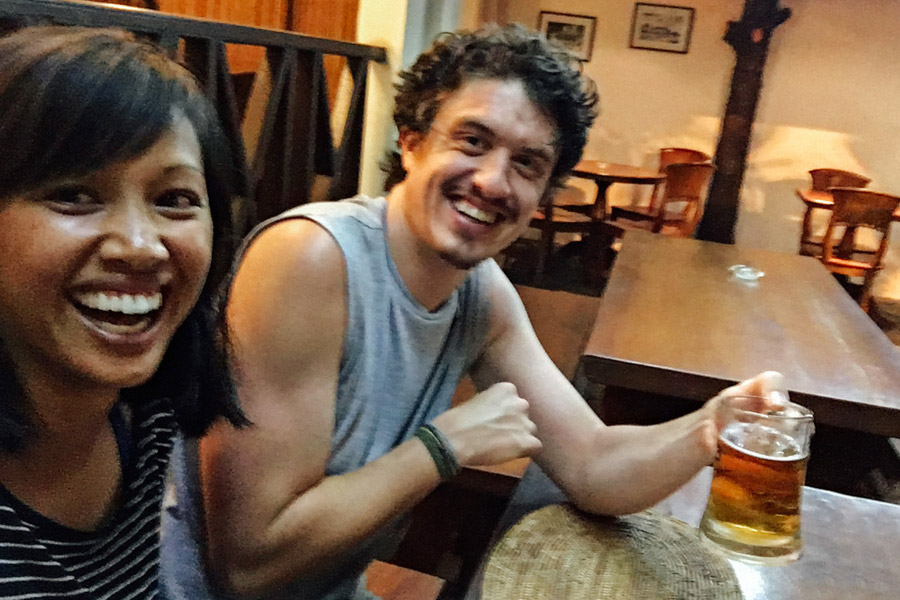
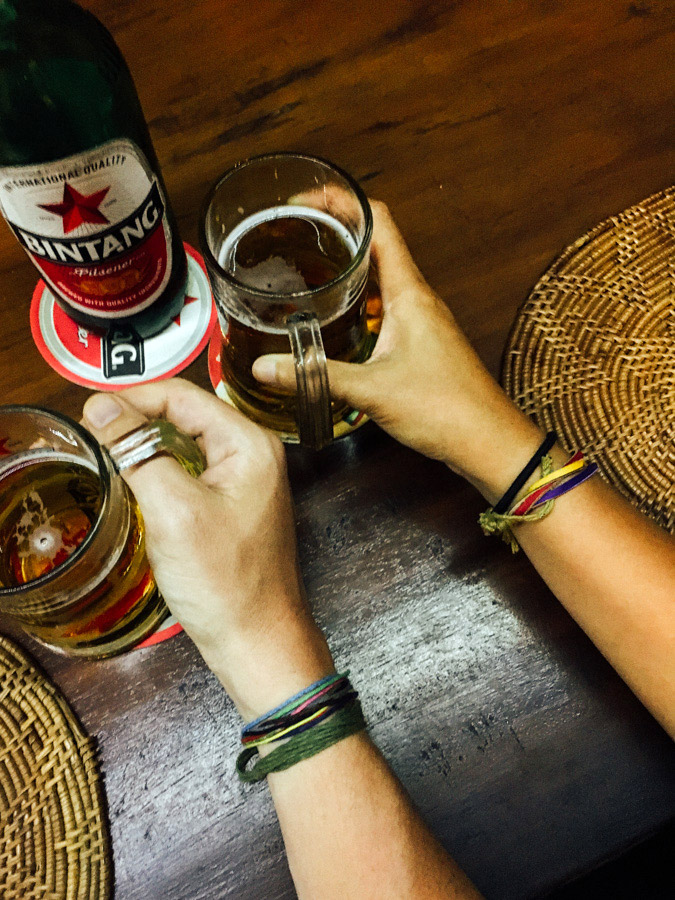
Links
- Yogyakarta, the picturesque city of Central Java, is easily accessible. We got there with an easy six-hour train ride from Surabaya, and left with a one-hour flight to Jakarta.
- The Borobudur temple and surrounding park is a short one-hour scooter ride from the center of town. If you don’t feel comfortable driving on the left among speeding trucks, there are plenty of organized tours. We were lucky to visit it during the early days of Ramadan and visited an almost empty park.
- The ruins of Ratu Boko was our favorite spot in Yogyakarta, with much to explore if you don’t care about staying on the paved path.
- The Prambanan and Plaosan temples are worth checking out, but offer a little less to explore (and likely too many tourists for a good picture).
- The baths of Taman Sari are an easy walking distance from Malioboro Street in Yogyakarta.
- Malioboro Street is the most lively street for tourists and easy shopping. Make sure to haggle hard, and don’t fall prey to the Batik art gallery trick!


































